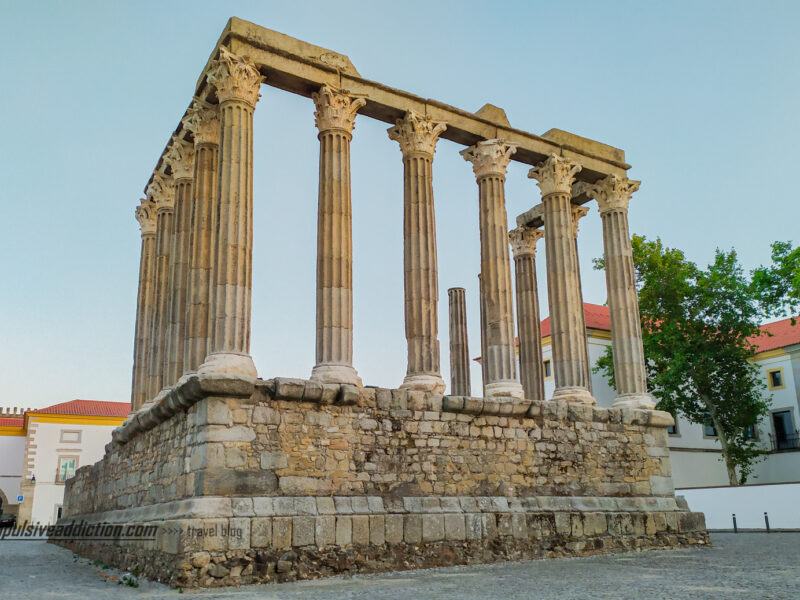Évora is a very special place in Portugal, known as the “Capital of Alentejo” and a UNESCO World Heritage Site since 1986. The reason for this is simple: the city is home to an incredible number of monuments from different periods of Portugal’s history.
One of the oldest and most fascinating monuments in Évora is the Roman Temple, which has been well-preserved for centuries. But even before the Romans, this area was occupied by people thousands of years ago. That’s why you can also find near Évora one of the most ancient and remarkable megalithic sites in Europe, the Almendres Cromlech. A visit to this site at sunset is an unforgettable experience.
There are so many things to do and see in Évora that it can be overwhelming. But don’t worry, I’ve got you covered! In this article, I recommend a two or three day itinerary to help you make the most of your visit. If you only have a short amount of time to spend, I suggest checking out some of my favorite places:
- The Aqueduct of Água de Prata
- Rua do Cano, where the aqueduct blends in with the buildings
- Giraldo Square
- The Cathedral of Évora
- The University of Évora, with its beautiful cloisters and library.
- Graça Church (the exterior facade is stunning)
- And of course, the remarkable Chapel of Bones. Yes, it is really made of bones inside.
Come and discover the magic of this city in the heart of Portugal’s Alentejo region!
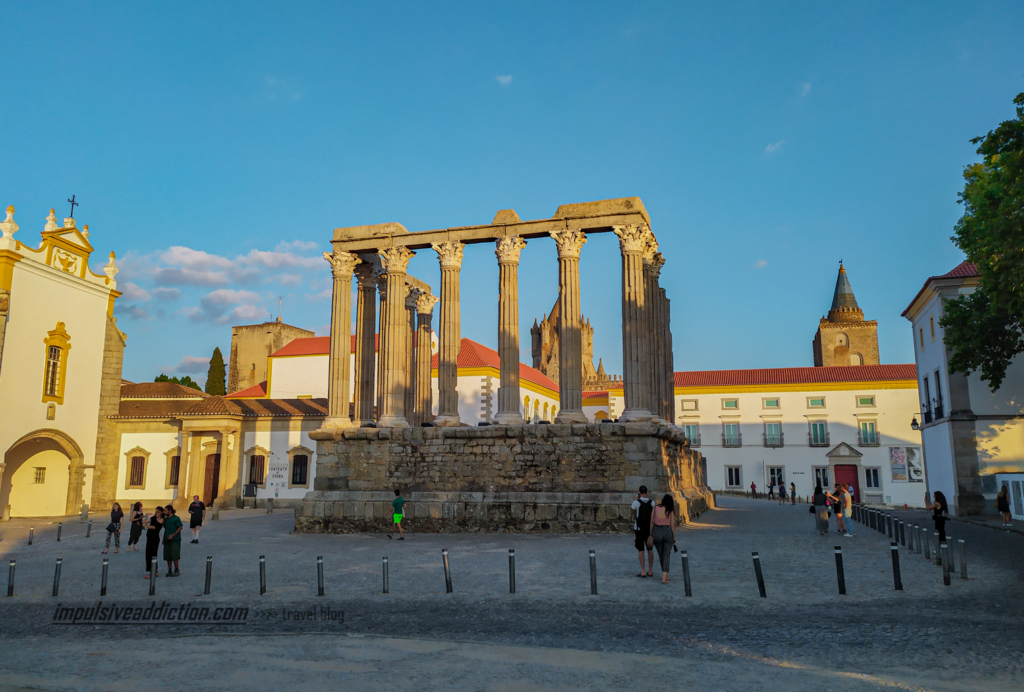
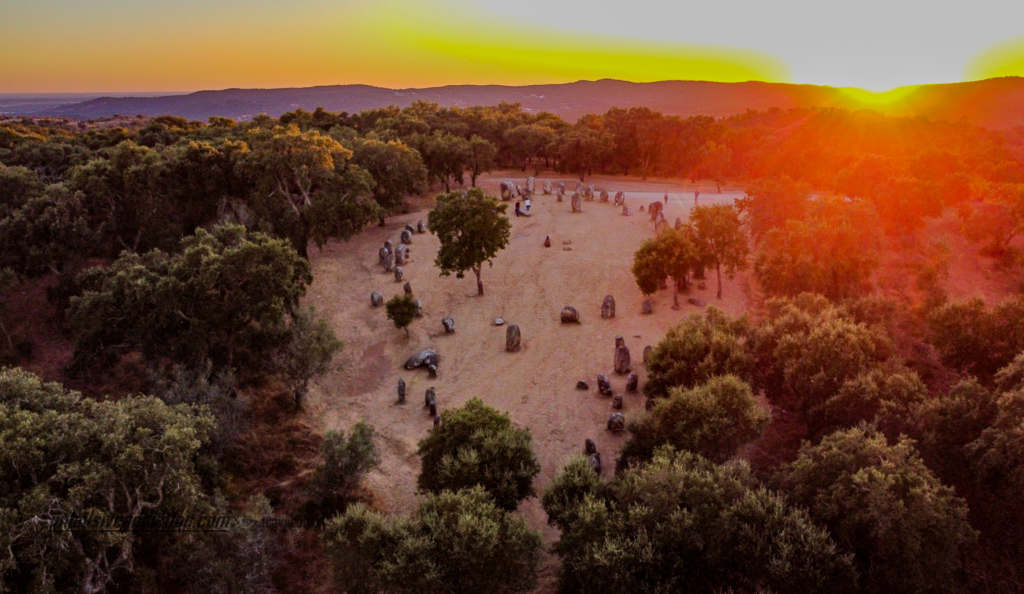
MORE ARTICLES FROM ALENTEJO AND ALGARVE: - Best Costa da Caparica beaches - Best beaches in Setúbal - Best Beaches in Sesimbra - Visit Ribeiro do Cavalo Beach - Best beaches in Tróia, Comporta and Melides - Best Beaches in Alentejo and Vicentine Coast - Things to do in Odemira and Vila Nova de Milfontes - Things to do in Marvão - Things to do in Elvas - Things to do in Estremoz - Things to do in Vila Viçosa - Things to do in Monsaraz & Alqueva Lake - Things to do in Porto Covo and Sines - Things to do in Arraiolos - Things to do in Mértola and Guadiana Valley - Things to do in Beja - Algarve Road Trip Itinerary - Best Beaches in Algarve - Things to do in Sagres - Things to do in Lagos - Best Beaches in Lagos - Things to do in Portimão - Things to do in Armação de Pêra and Silves - The Seven Hanging Valleys Trail - Best beaches in Carvoeiro and Lagoa - Best Beaches in Albufeira - Things to do in Vilamoura and Quarteira - Things to do in Faro - Things to do in Tavira - Things to do in Olhão - Things to do in Monte Gordo
Where is Évora located, in Portugal?
Évora is not only the capital of its district, but also of the entire Alentejo region, like I mentioned in the beginning. It’s surrounded by the districts of Setúbal, Portalegre, and Beja, all part of Alentejo.
As a municipality, Évora borders several other cities, such as Montemor-o-Novo, Viana do Alentejo, Arraiolos, Estremoz, Redondo, Reguengos de Monsaraz, and Portel.
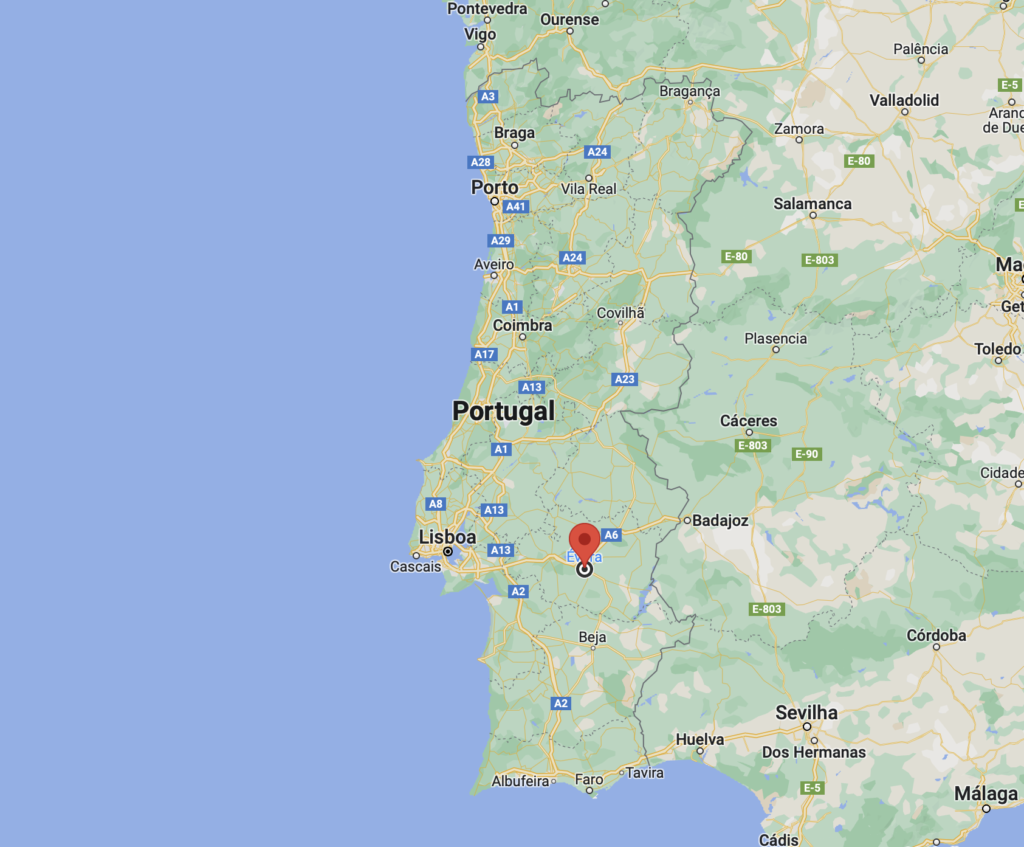
How to get to Évora, in Alentejo?
If you want to visit Évora but haven’t bought tickets to Portugal yet, I recommend that you use Skyscanner or Google Flights to do a search before buying them, comparing prices and flight conditions. You have many connections with Lisbon or even Faro from abroad.
Already in Portugal, it is very easy to get to Évora by public transport, for example from Lisbon, either using express buses from Rede Expressos or trains from CP – Comboios de Portugal.
If you are just going to visit the city of Évora, no car is needed. However, Alentejo region is huge, and most of the interesting places to visit are very far from each other. Consider renting a car with Discover Cars if you are planning a more complete itinerary in Alentejo, going to the Southwest coast of Portugal, or even to Alqueva Lake or to the fortresses of Elvas.
You can easily reach Évora by car, as there are good road connections from anywhere in the country. In fact, Évora is often used as a quick stopover for those traveling to the Algarve region.
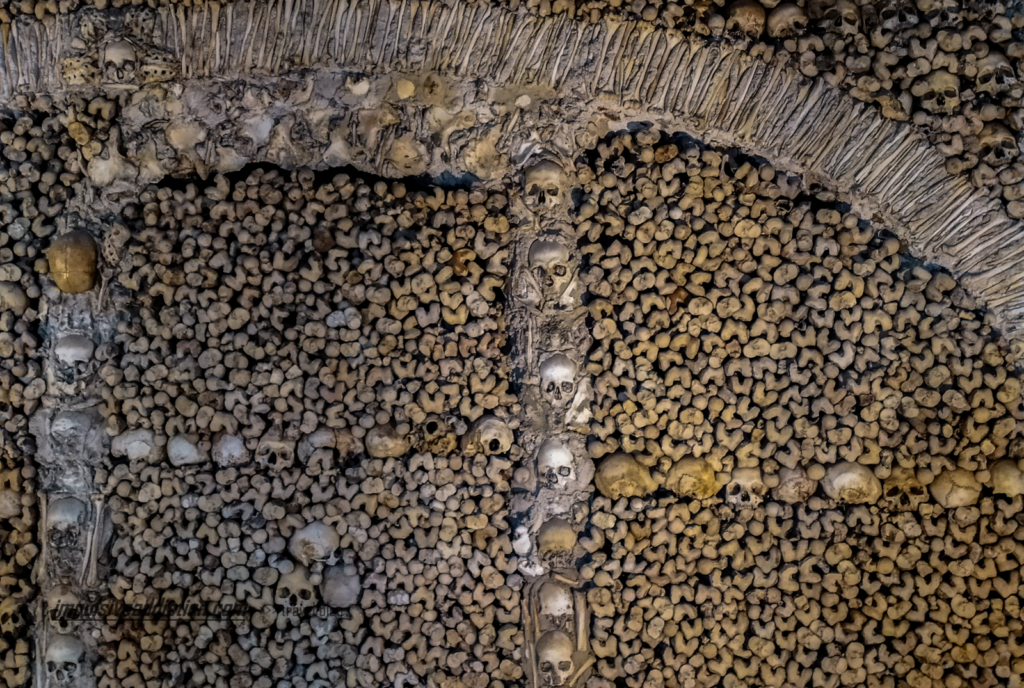
Take out Travel Insurance to visit Portugal
To be protected against several types of travel hazards, I also recommend that you take out travel insurance for your stay in Portugal, and I recommend to do it with World Nomads.
Best Time to visit Évora
Visiting Évora during the summer can be exhausting due to the heat. However, the main popular festival of Évora, the Feast of São João, takes place at the end of June in Rossio de São Brás. This is a fair with more than 500 years of history. If the heat doesn’t bother you, why not visit at this time of year? If you prefer a cooler Évora, my recommendation is spring, and the same applies for the rest of Alentejo territory.
Gastronomy when visiting Évora
As the capital of Alentejo, you will certainly find the best Alentejo delicacies here, of all kinds. How about trying Alentejo bread, the black pork with the famous breadcrumbs, açorda or lamb stew?
As for sweets, you have Évora cheese tarts, Encharcada, Sericaia, or Pão de Rala, for example.
Restaurants in Évora
- Botequim da Mouraria
- Restaurante O Templo
- Restaurante Fialho
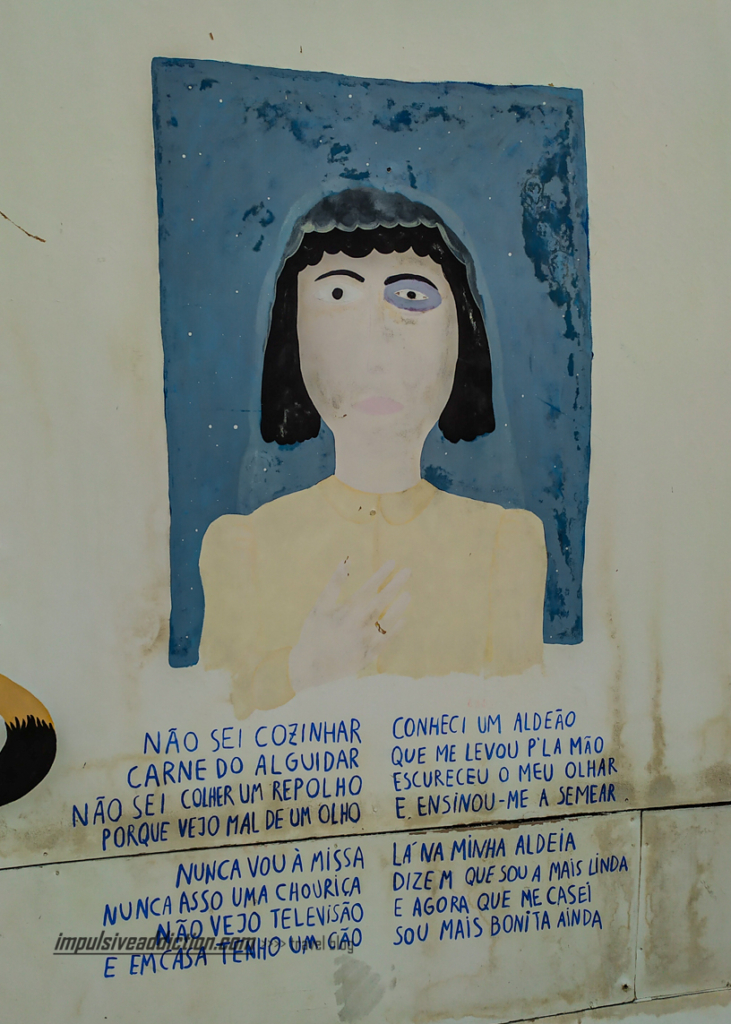
Alentejo wine when visiting Évora (Adega Cartuxa)
Check Adega Cartuxa website to learn more. I’m not a wine connoisseur but a visit to this winery and the surrounding vineyards might be interesting. 😉
Accommodation tips in Évora
| Alojamento | Classificação | Destaque |
|---|---|---|
| Ecork Hotel | 8.4 | Superior Category |
| Vila Galé Évora | 8.6 | Superior Category |
| M’AR de AR Aqueduto | 8.8 | Superior Category |
| Evora Olive Hotel | 9.0 | Superior Category |
| Casa do Escritor | 9.5 | Swimming Pool |
| Valeriana Exclusive | 9.5 | Price / Quality |
| Lavradores Boutique | 9.1 | Price / Quality |
| Casa da Travessa | 9.0 | Appartment |
Itinerary to visit Évora in 1 day
If you’re one of those people who chooses to visit Évora just as a stopover on the way to the Algarve, or if you don’t have more than a day to explore the city, I’ve already listed the main tourist attractions not to be missed at the beginning of the article. Those are the essentials of Évora, and I’m listing them here, again:
- The Roman Temple of Évora
- The Aqueduct of Água de Prata
- Rua do Cano, where the aqueduct blends in with the buildings
- Giraldo Square
- The Cathedral of Évora
- The University of Évora, with its beautiful cloisters and library.
- Graça Church
- The Chapel of Bones.
- And the Almendres Cromlech.
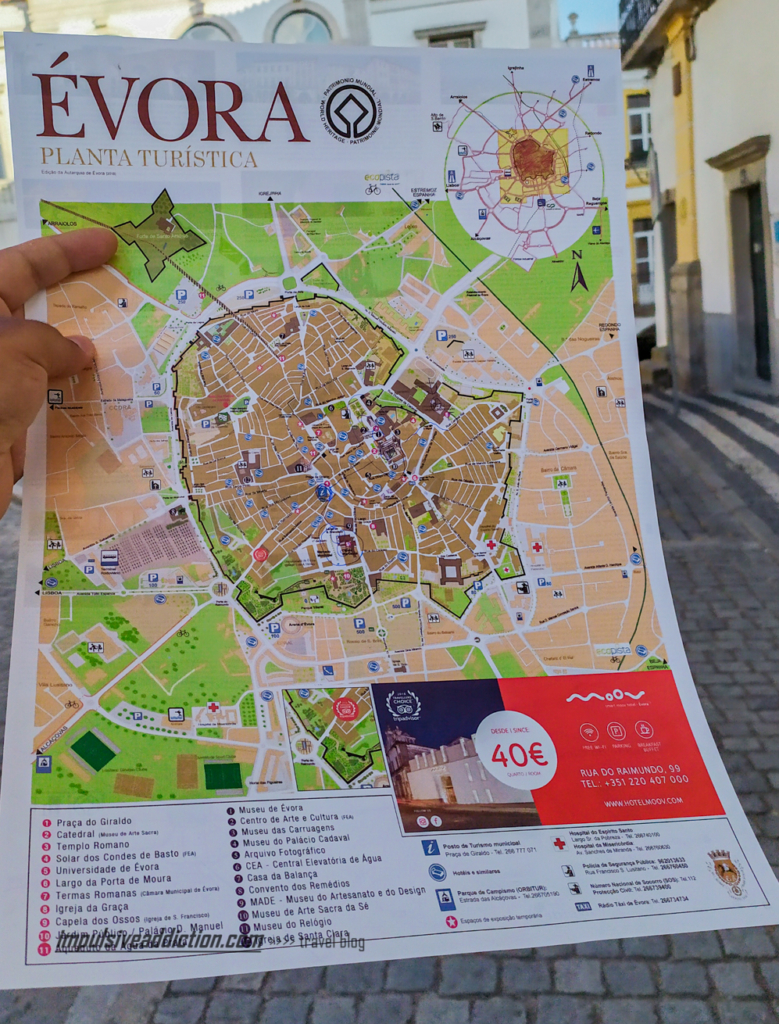
Itinerary to visit Évora in 2 or 3 days
Do you have 2 or 3 days to visit Évora? Then you can add many other churches, hikes, megalithic monuments, Roman ruins, and various museums to your visit to the capital of Alentejo.
On the map below, I suggest a sequence of visits to the city’s tourist spots, but feel free to build your own sequence if you prefer. The important thing is that all places of interest in Évora are identified on the map.
If you want to follow this sequence strictly, divide it into 2 or 3 stages throughout your days visiting Évora.
Note that: If you are visiting Évora in a group or with your family, it is possible and affordable to pay for a guided tour of the city. But it is easy to find Free Walking Tours with Civitatis, anyway. Check also this tour with Get Your Guide.
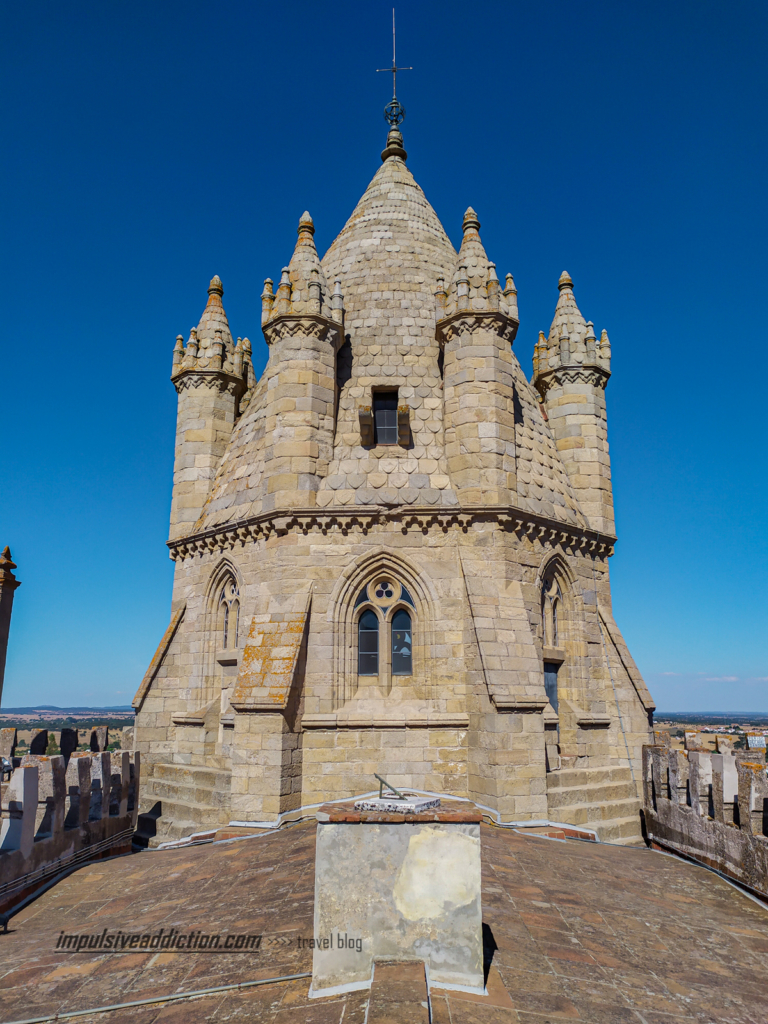
Map | Itinerary to visit Évora in 2 or 3 days
1. Enter the walled city through the Gate of Aviz
Of course, Évora should be visited on foot, so get ready to walk several kilometers during your visit to the city.
I recommend parking your car where I parked mine: in the parking lot outside the walls, next to Água de Prata Aqueduct and the Aviz Gate. You’ll get to see the largest arches of the aqueduct right away.
As you enter through the Gate of Aviz, don’t miss exploring the area around the Garden of Rua de Aviz and São José da Esperança Convent, and then head to Rua do Muro to walk up to Rua do Cano, one of the most beautiful roads in Évora.
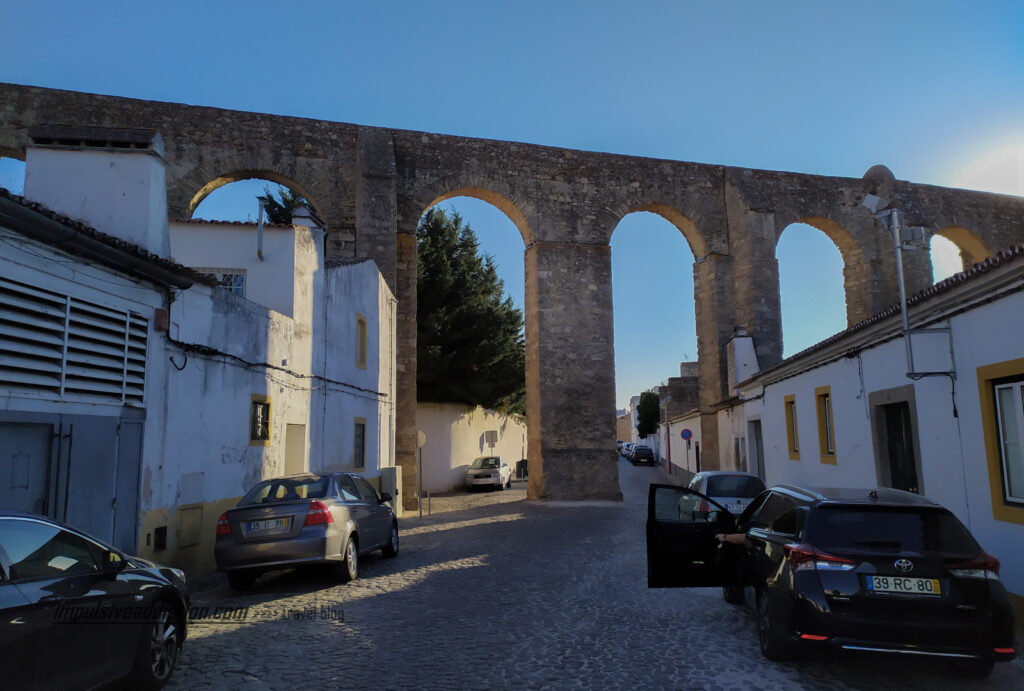
2. Follow the Aqueduct along Rua do Cano
The beauty of Rua do Cano will be clear to you when you see how the aqueduct blends with the buildings in Évora, and that’s what makes the street so special to me.
I walked the entire length of Rua do Cano and recommend you do the same until you reach the Square Luís de Camões. Along the way, you can take an optional detour to visit Casa da Balança, the metrology center of the Museum of Évora. I chose not to visit it.
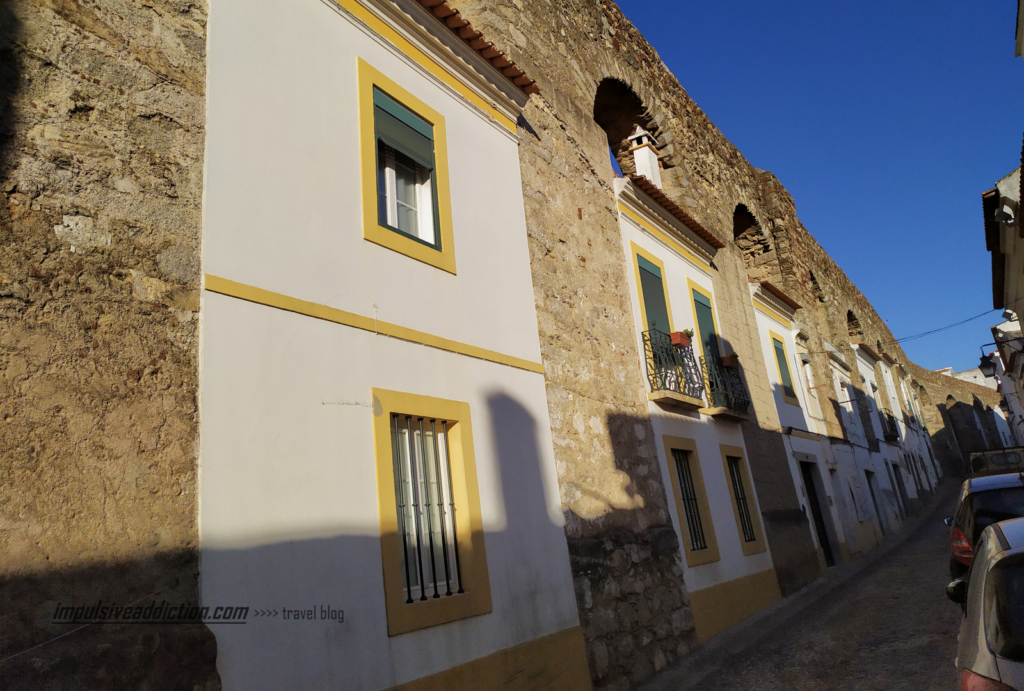
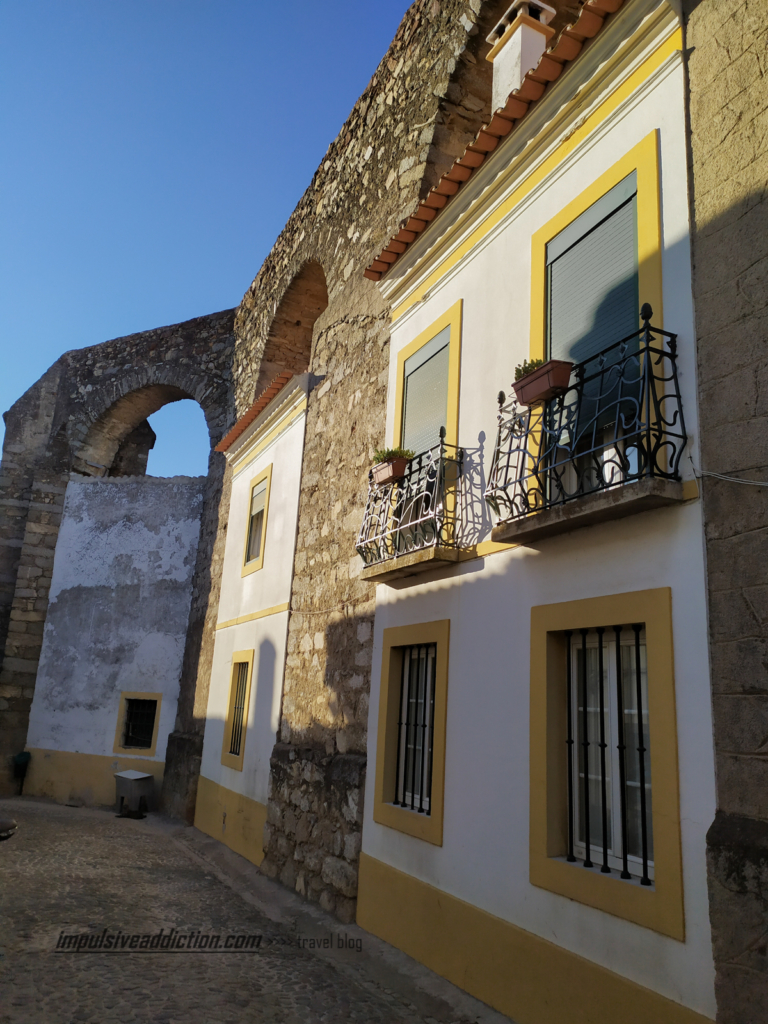
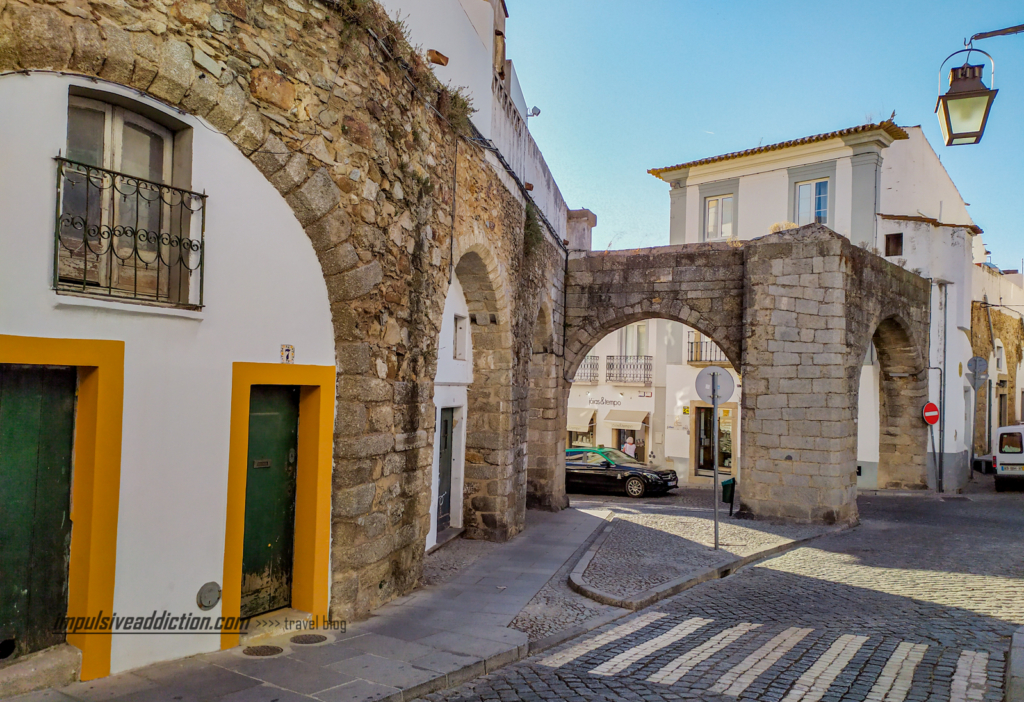
3. Cross the Roman Arch of Dona Isabel
The entire Roman heritage of the city is a must-visit, so you can’t miss crossing the Roman Arch of Dona Isabel. Later in this article, I will tell you more about it.
4. Visit Sertório Square
The City Hall is located in Sertório Square, but take into consideration that this is not at all the central place of the city. It is only a must-see because of the Roman baths inside the City Hall, which were discovered only in 1987. The Church of Salvador also has a tower that looks very different from the others in Évora, so be sure to admire it.
Like many Portuguese and European cities, Évora also has “letters” with its name for a photograph, and it can be found here. I particularly liked the randomly scattered chairs next to it, in the square.
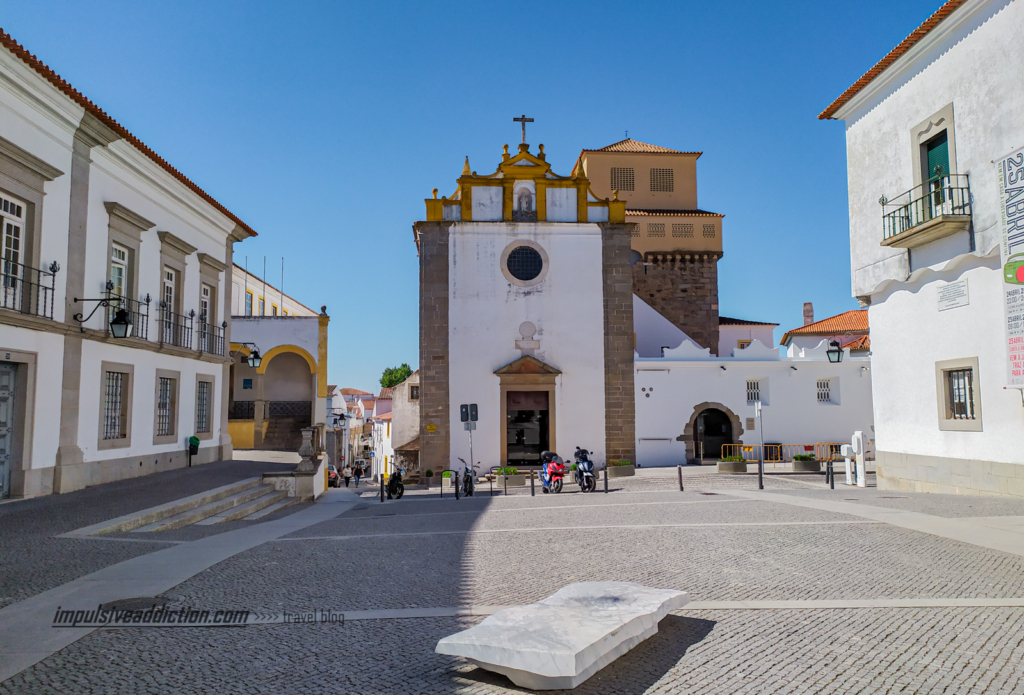
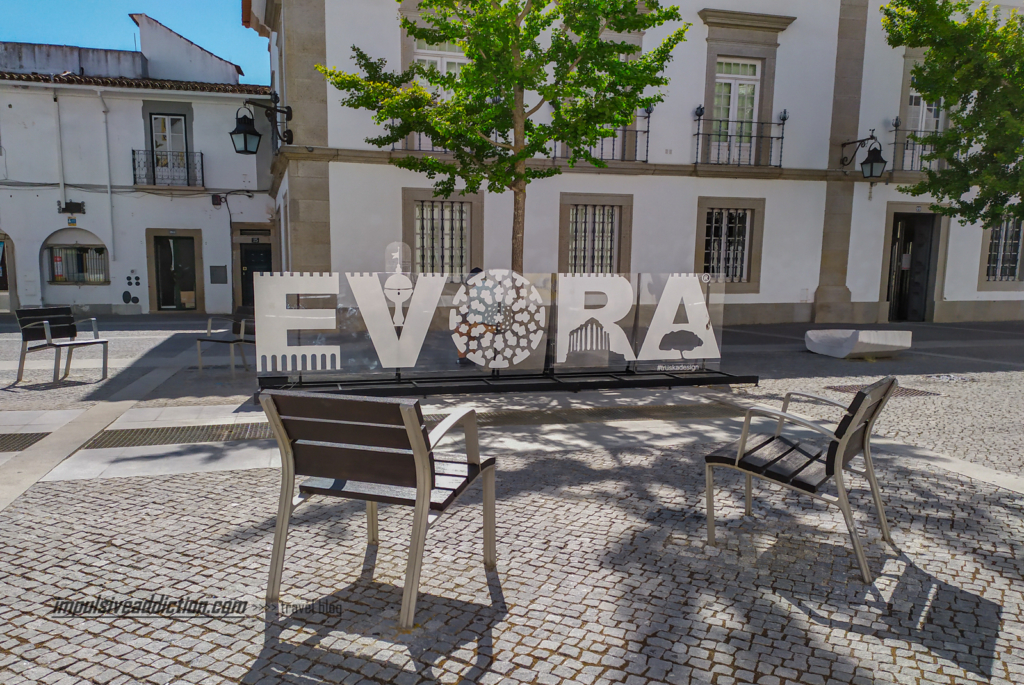
5. Proceed to Giraldo Square
Giraldo Square is a must visit, as it is undoubtedly the heart of Évora, the place where all roads lead to. On the way to Giraldo Square, don’t forget to pass by the Church of São Tiago and Caixa de Água da Rua Nova (water tank).
In the square itself, the terraces and the Fountain are what will amaze you, even more than the Church of Santo Antão or the building of the Bank of Portugal, on opposite sides.
In the surrounding area, you also have some optional points:
- The Clock Museum, an extension of the museum you can find when visiting Serpa, in South Alentejo.
- And the Church and Convent of Santa Clara.
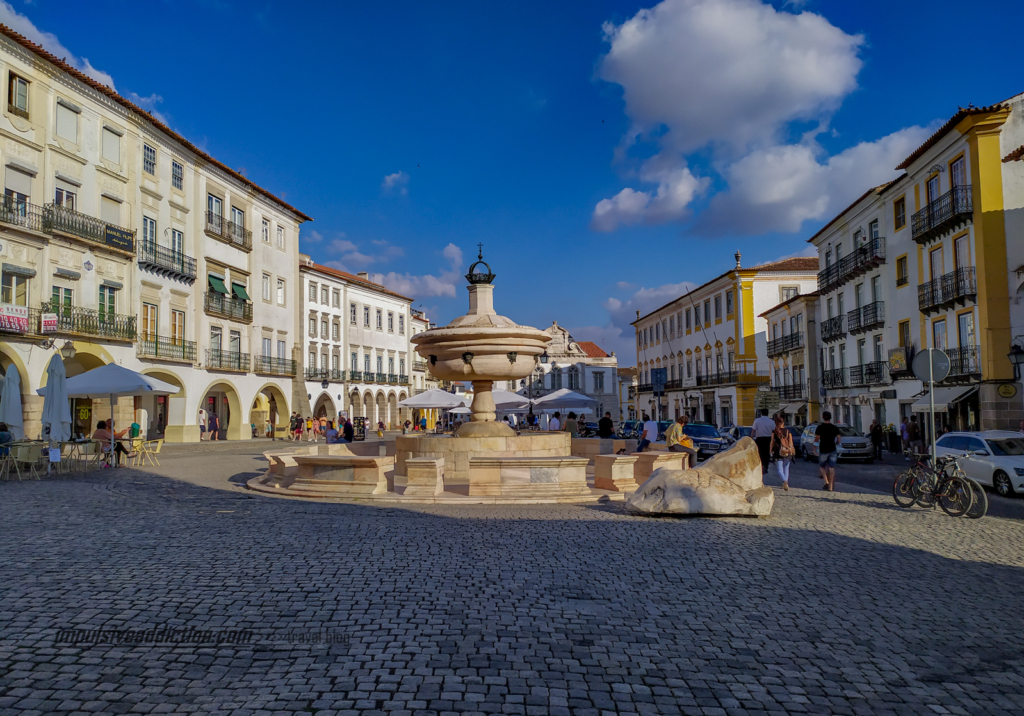
6. Discover the Cathedral of Évora
Rua 5 de Outubro is another must-visit street in Évora, filled with small shops, restaurants, and people. At the top of the street, you’ll find the Cathedral, with its fabulous mismatched windows. A visit to the cathedral is a must-do, especially for its beautiful cloisters that I absolutely loved.
As for the Museum of Sacred Art, I consider it optional, but that’s just my personal preference. Of course, everyone has different tastes, so I’ll leave the reference here just in case.
The Department of Archaeology of the University of Évora is located in Vimioso Palace, where you can find the Interactive Archaeology Center.
Instead of heading straight to the Square of Conde de Vila Flor, I suggest you take a different route and walk around the Cathedral, discovering other perspectives of it. Follow Rua de São Manços and then Rua do Cenáculo, passing by Casa de Garcia Resende, where you shouldn’t miss the beautiful Manueline window.
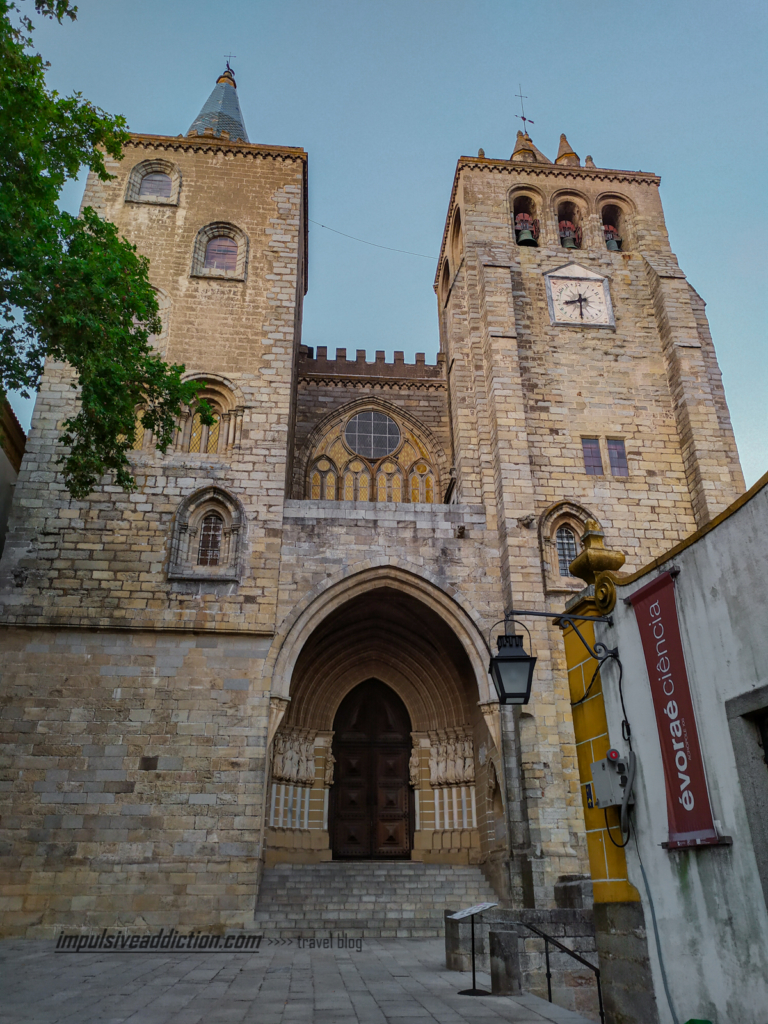
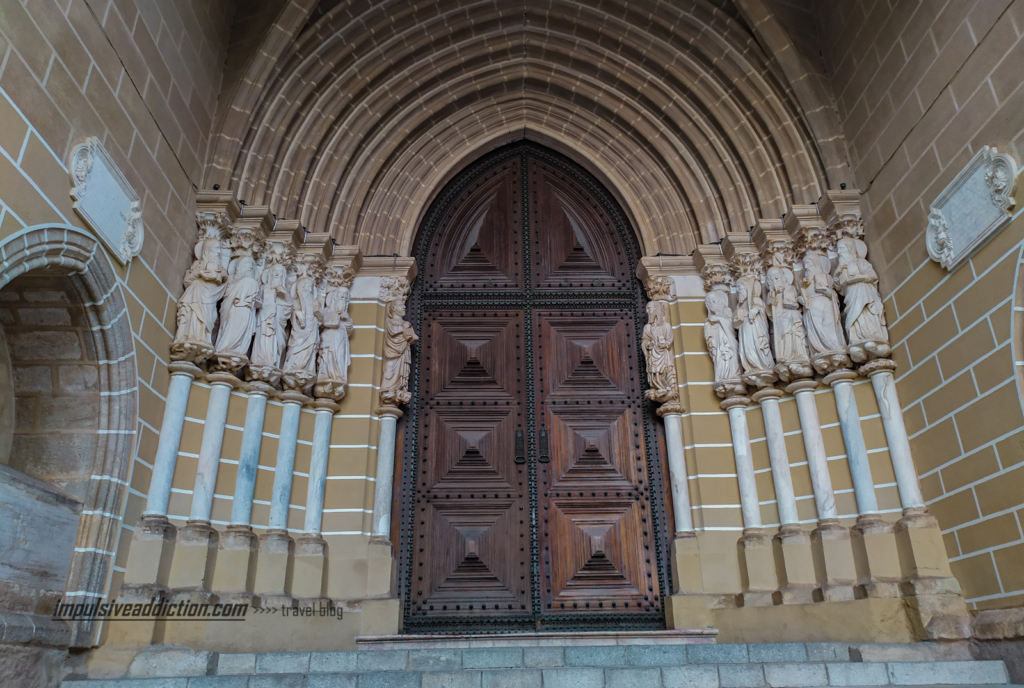
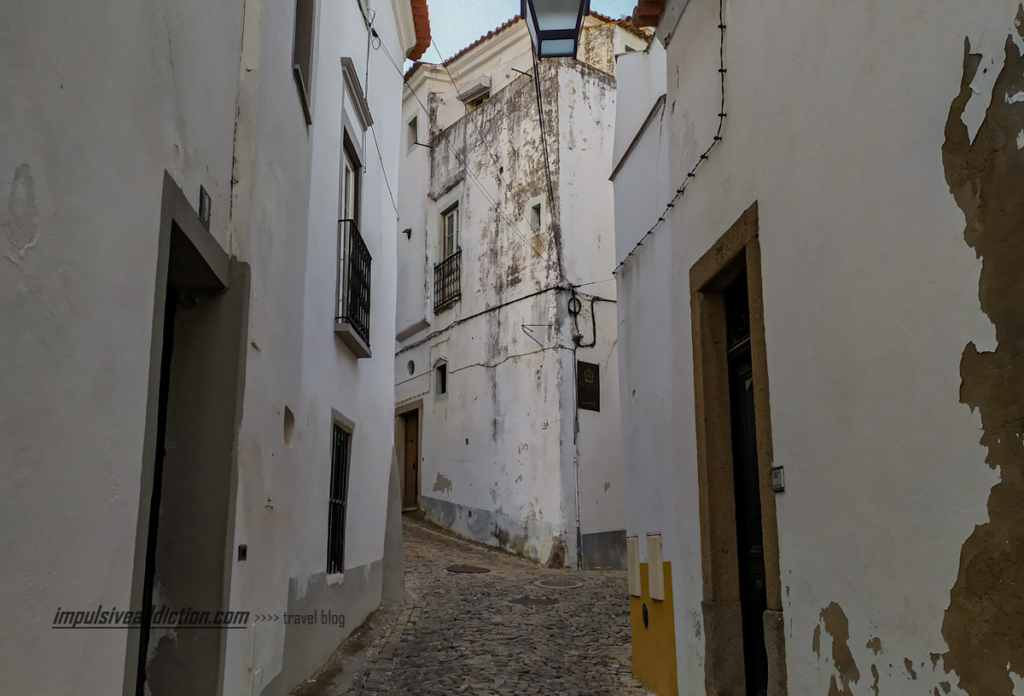
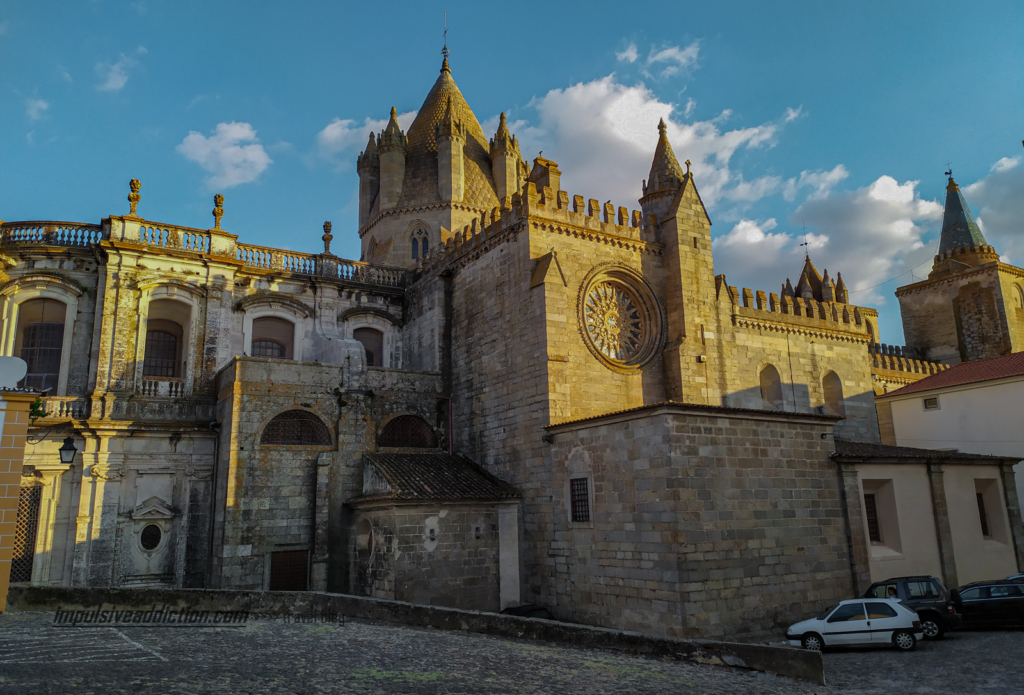
7. Visit the Palace of São Miguel
Something that amazed me was the Palace of São Miguel and the Carriage Collection. From the square where the Palace of São Miguel is located, you have views of the University of Évora, particularly to the Church of the Holy Spirit.
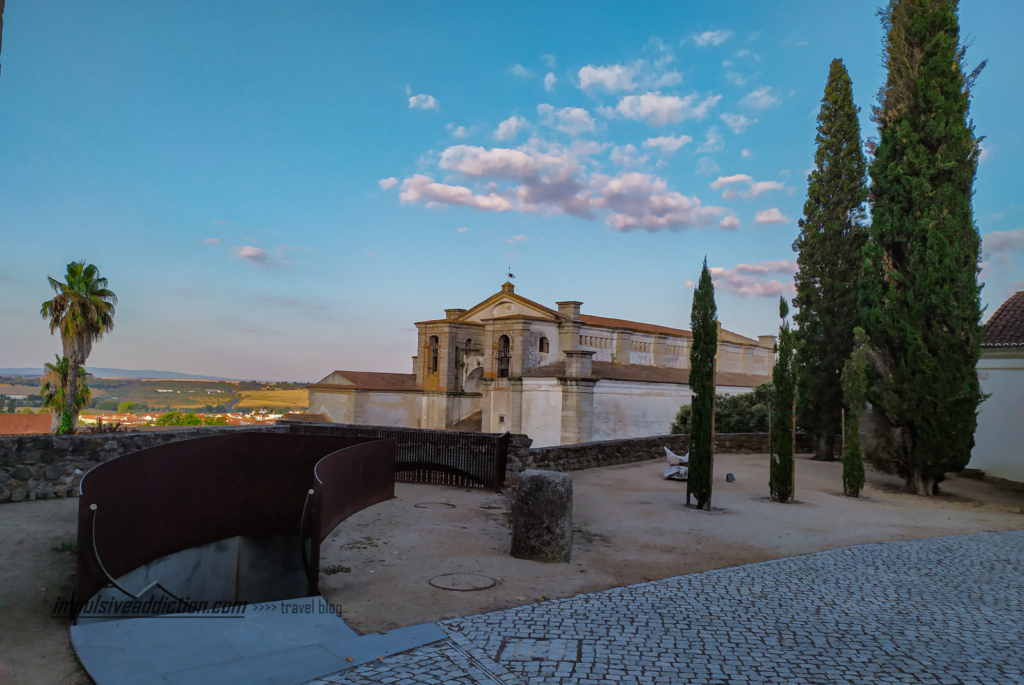
8. Admire the Roman Temple of Évora and surroundings
The Roman Temple of Évora is the next stop, mistakenly known as the Temple of Diana. Did you know that there is another spectacular Roman temple in the Iberian Peninsula: in Mérida, Spain?
In the square where the Roman Temple of Évora is located, there are several other tourist attractions:
- The Palace of the Inquisition and its exhibitions.
- The Museum of Évora.
- The Church of São João Evangelista or Church of the Lóios.
- Cadaval Palace.
- Diana Garden, behind the Roman temple, where you can enjoy a good viewpoint of the city of Évora.
- And the Tower of the Five Quinas, a reminder of the old Castle of Évora.
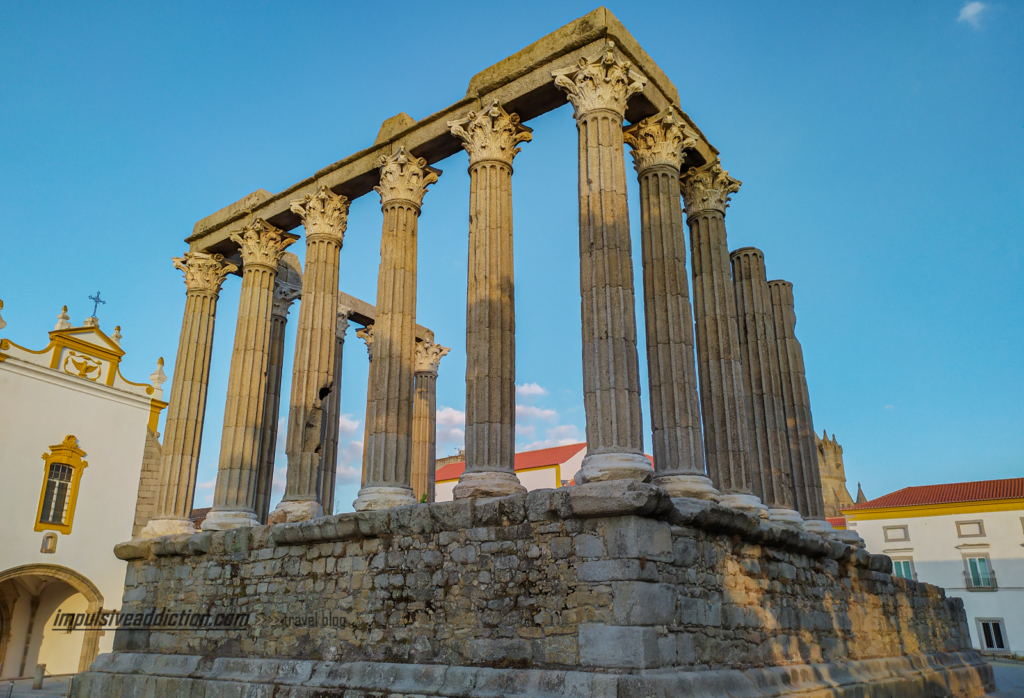
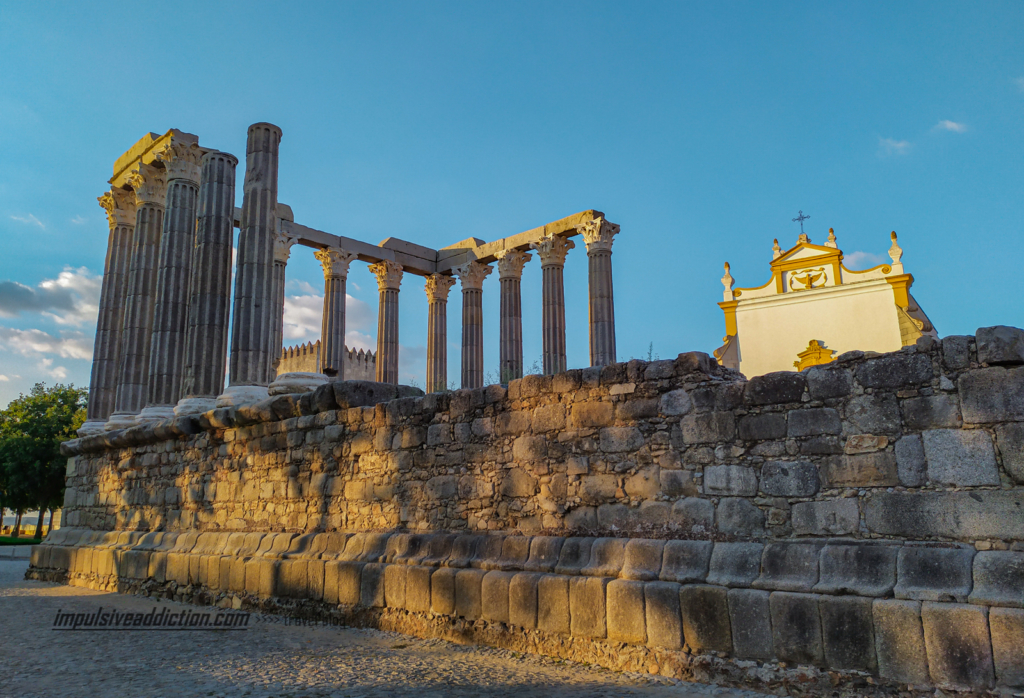
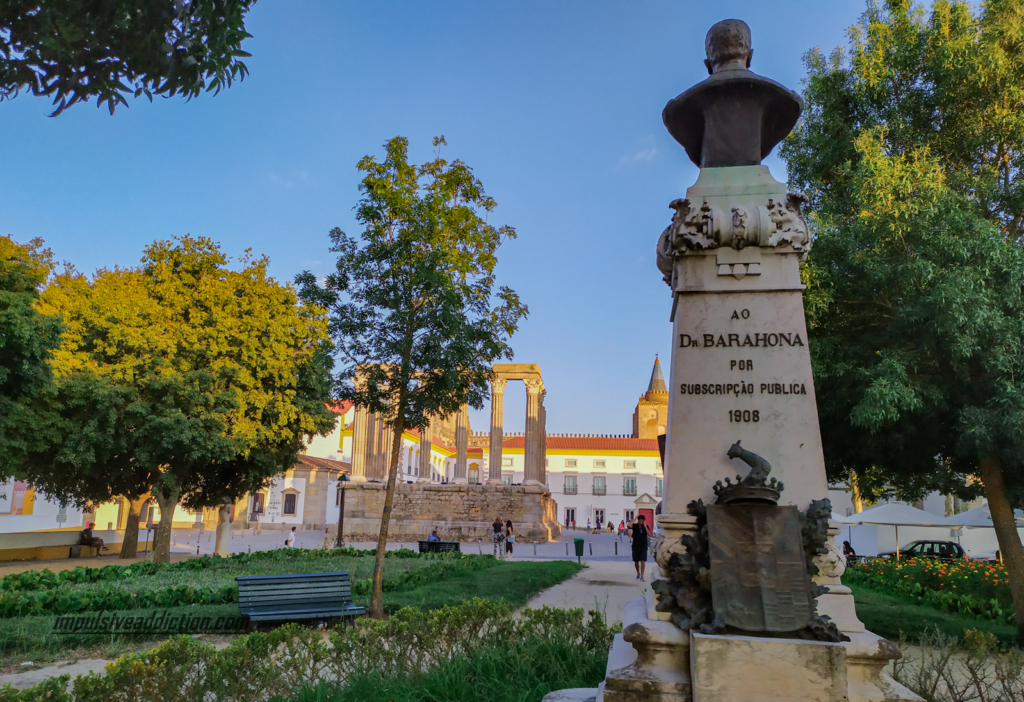
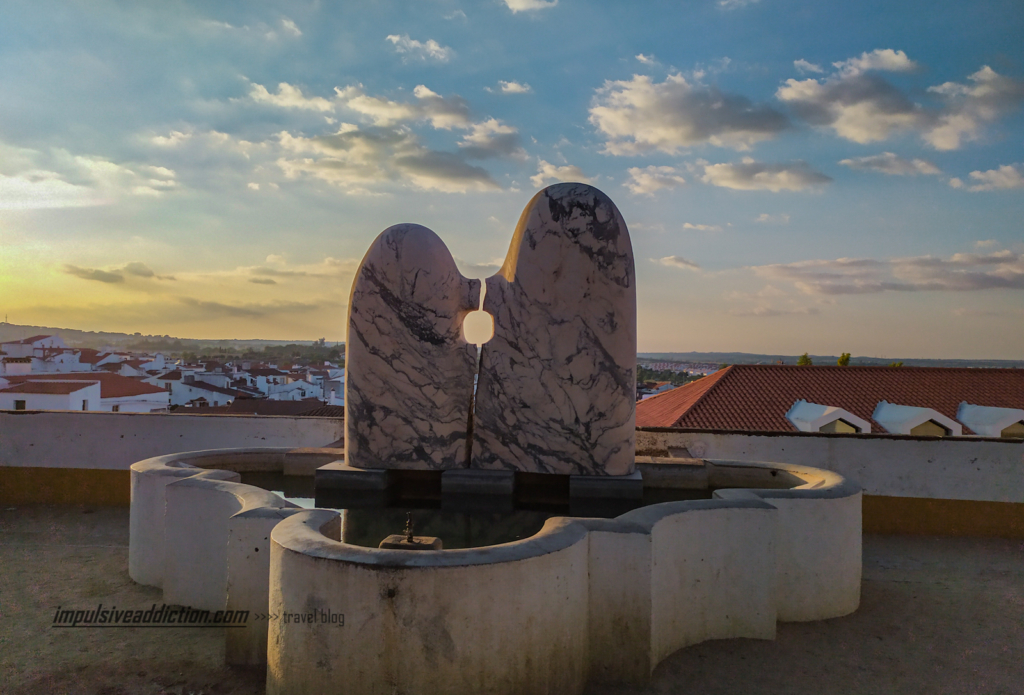
9. Visit the University of Évora
To get to the university, pass through the Garden of the Collegiate, being able to walk along the walls of Évora and appreciate the exterior facade of the Palace of São Miguel. Optionally, make a detour to the Church of São Mamede.
The entrance to the University of Évora is located next to the main facade of the Church of the Holy Spirit, through an iron gate. You will immediately come across its fabulous cloisters, which I fell in love with. Don’t forget to visit the classrooms, go up to the balcony over the cloisters, walk through the corridors of the university, look carefully at the tiles, and visit the old library which has an absolutely incredible ceiling.
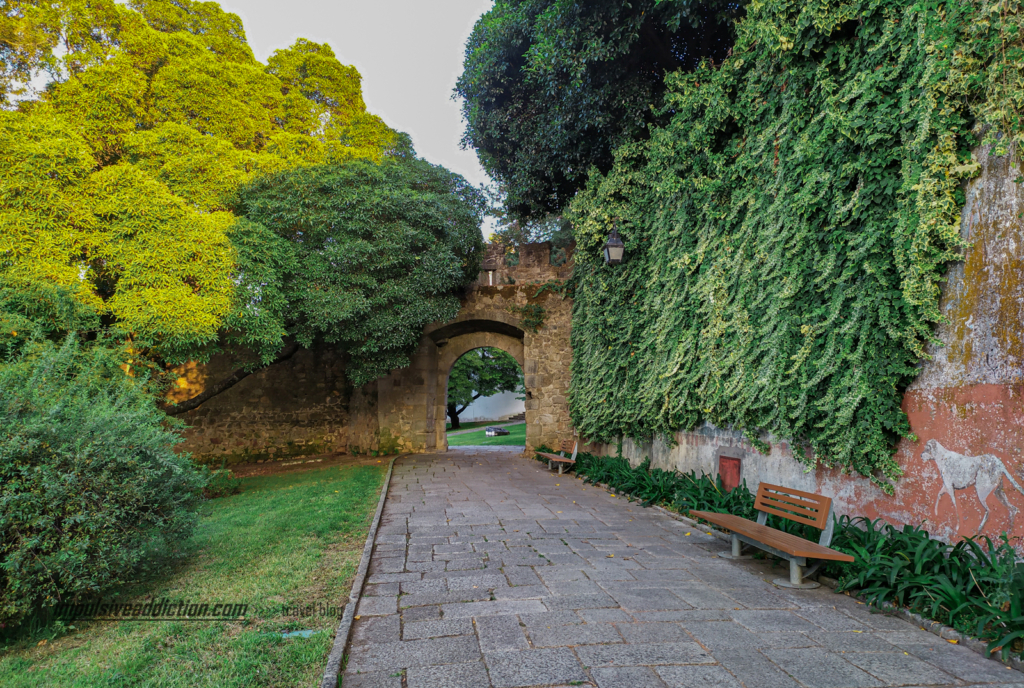
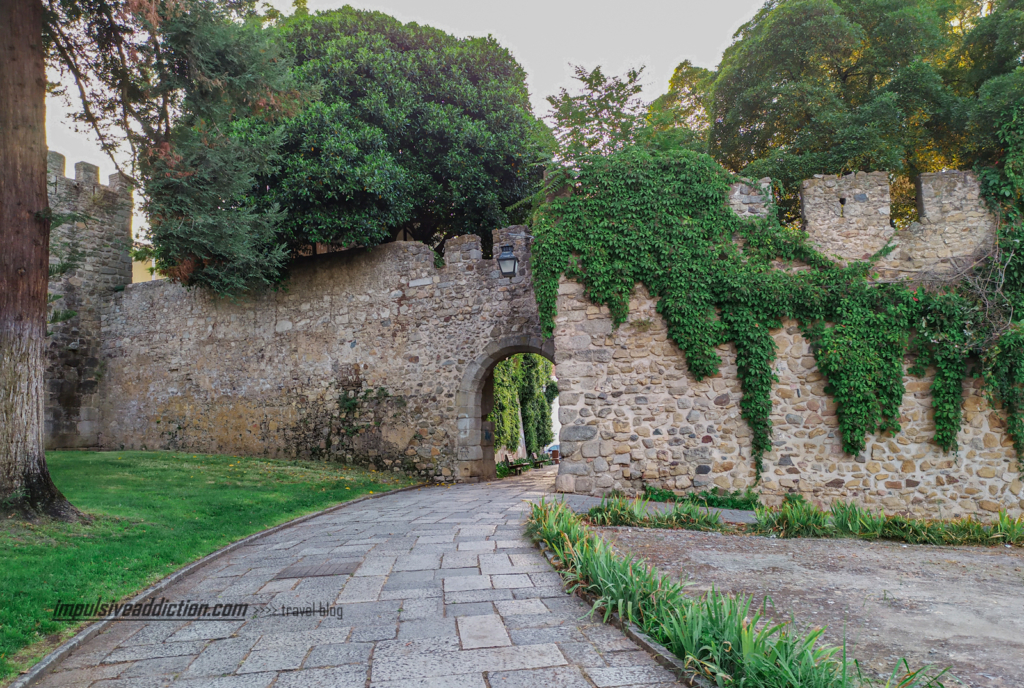
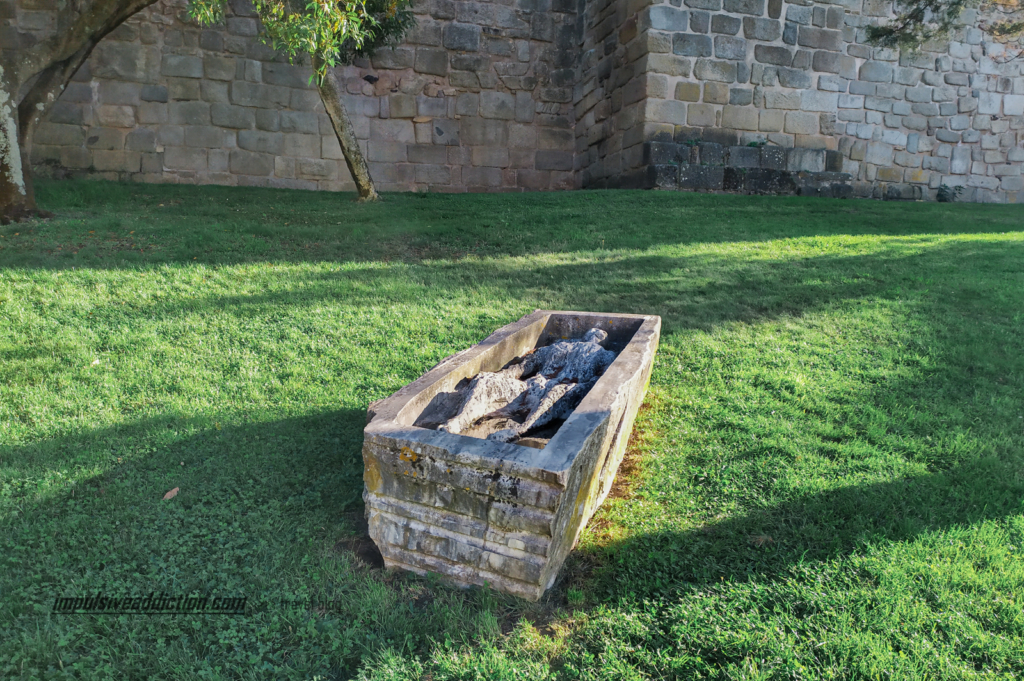
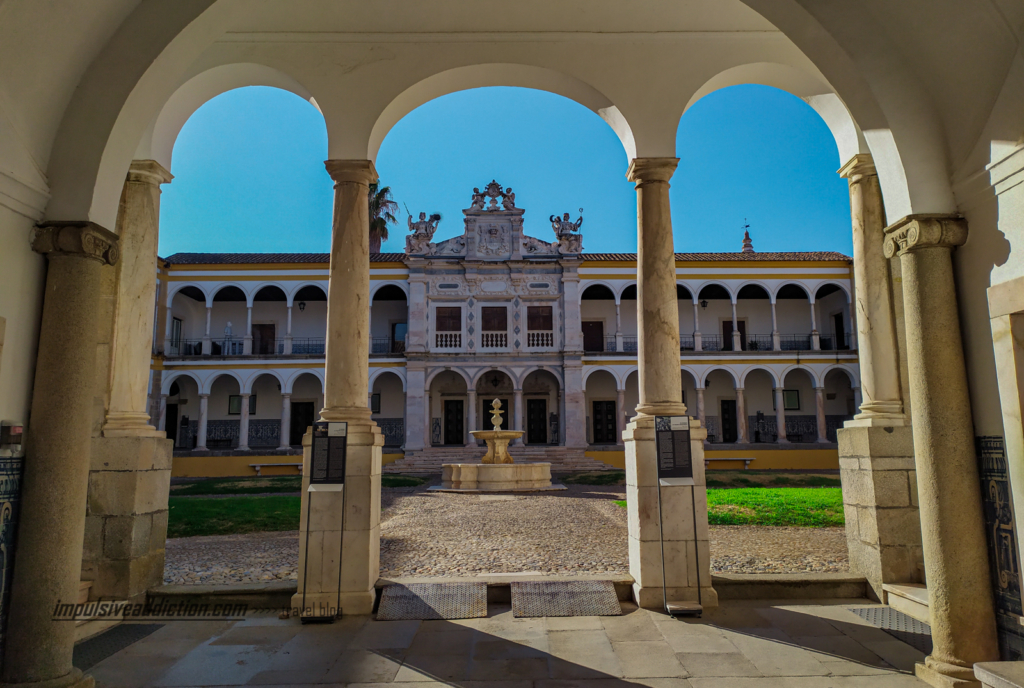
10. Cross the Gates of Moura
From the University to the Gates of Moura is a short walk. Surrounding it I highlight the Tower of São Manços, the fountain, the arched balcony of Casa Cordovil and the Church of Carmo. In the courthouse building, I also found interesting the Column with a representation of the History of Évora.
11. Admire the main façade of the Church of Graça
The Church of Graça is, for me, the most beautiful in Évora, from the outside. Its statues and bell tower are stunning. You can optionally also visit the Church of São Vicente and the Church of Misericórdia.
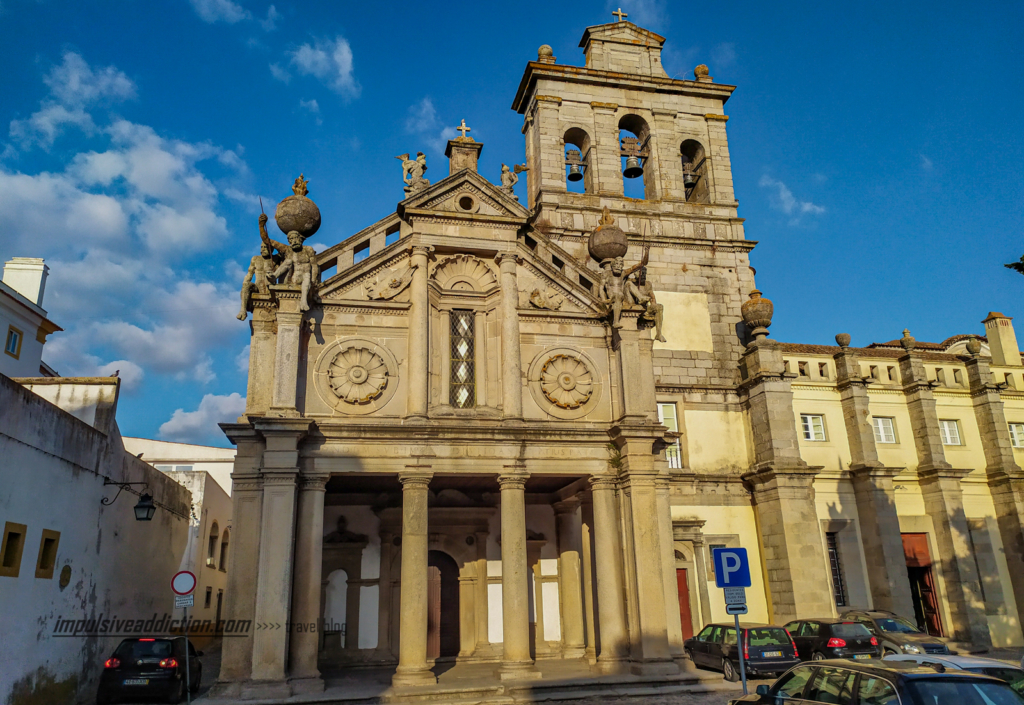
12. Visit São Francisco Church and the Chapel of Bones in Évora
The Chapel of Bones in Évora is undoubtedly the most well-known and visited in Portugal. And I admit it’s chilling. But did you know that there are others in Portugal? I will mention another one from Alentejo in this post, so pay attention to what you read. 😀
As for São Francisco Church, although it is nothing special on the outside, it has a beautiful interior that you should not miss on your itinerary in Évora. Optionally, visit the nearby Craft Museum and the municipal market.
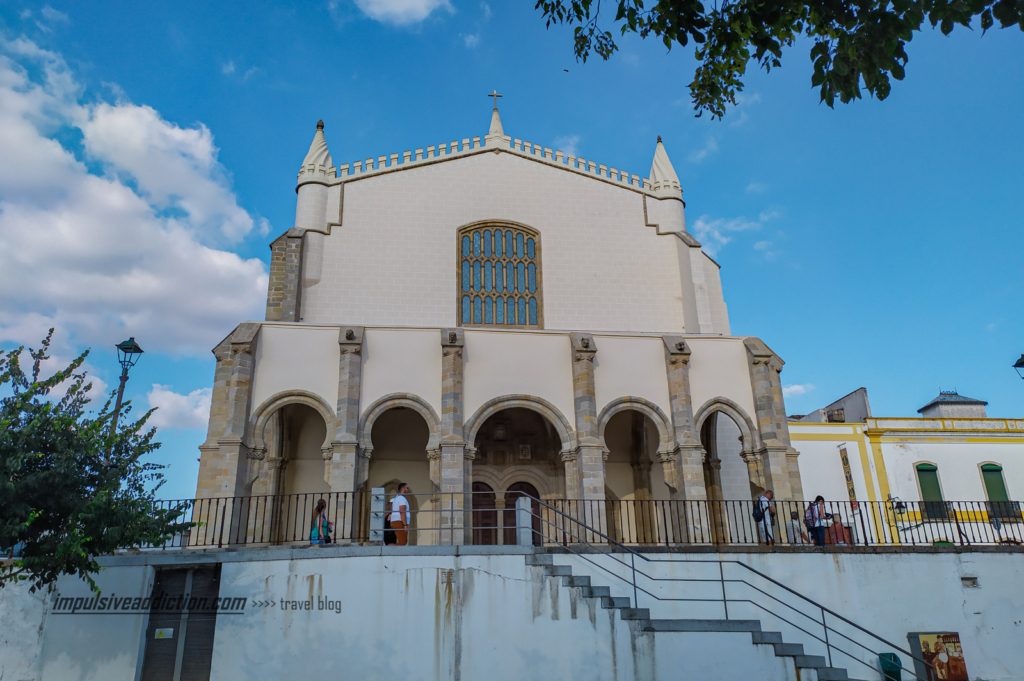
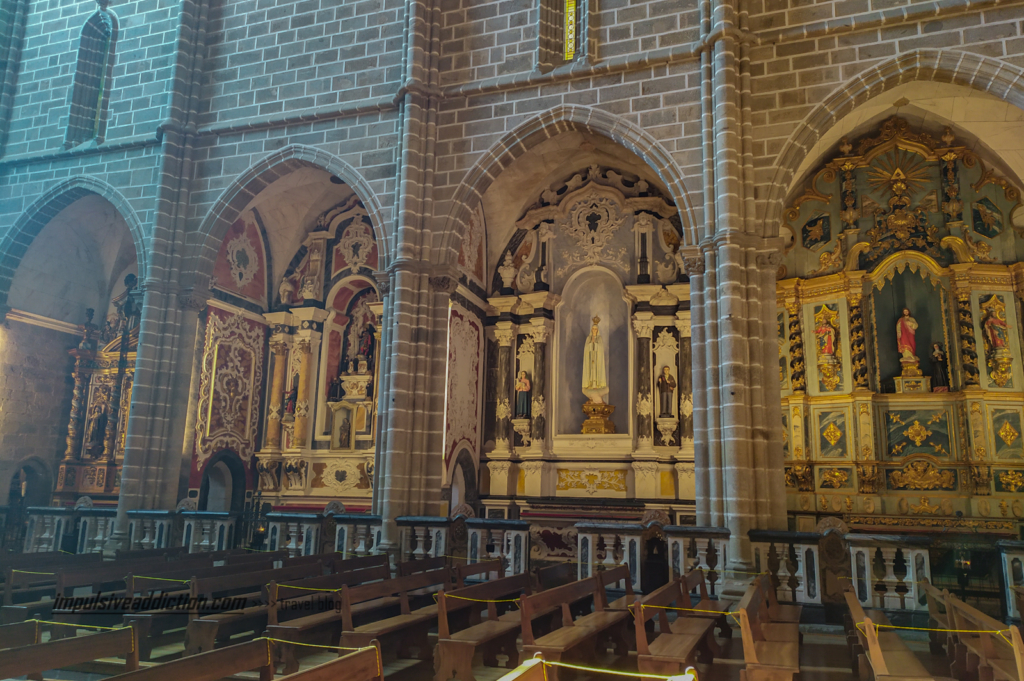
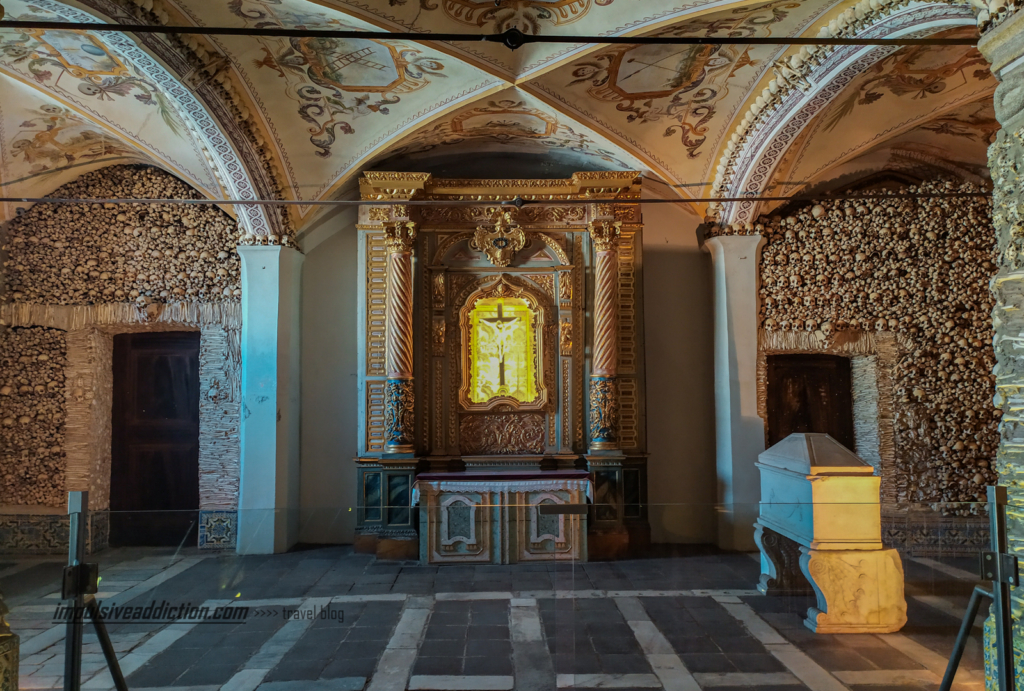
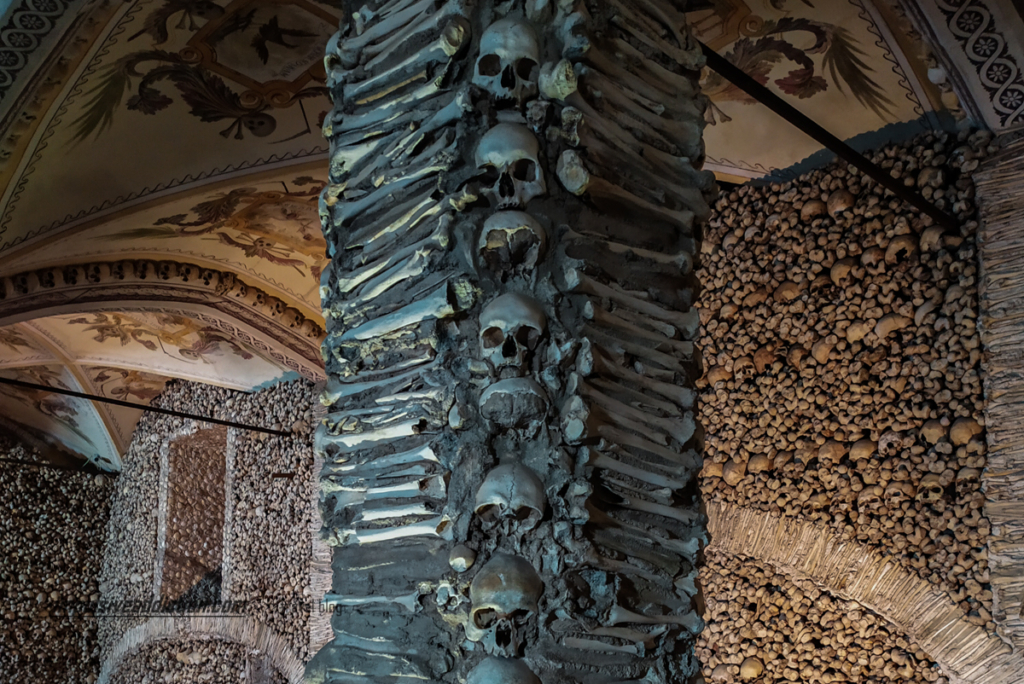
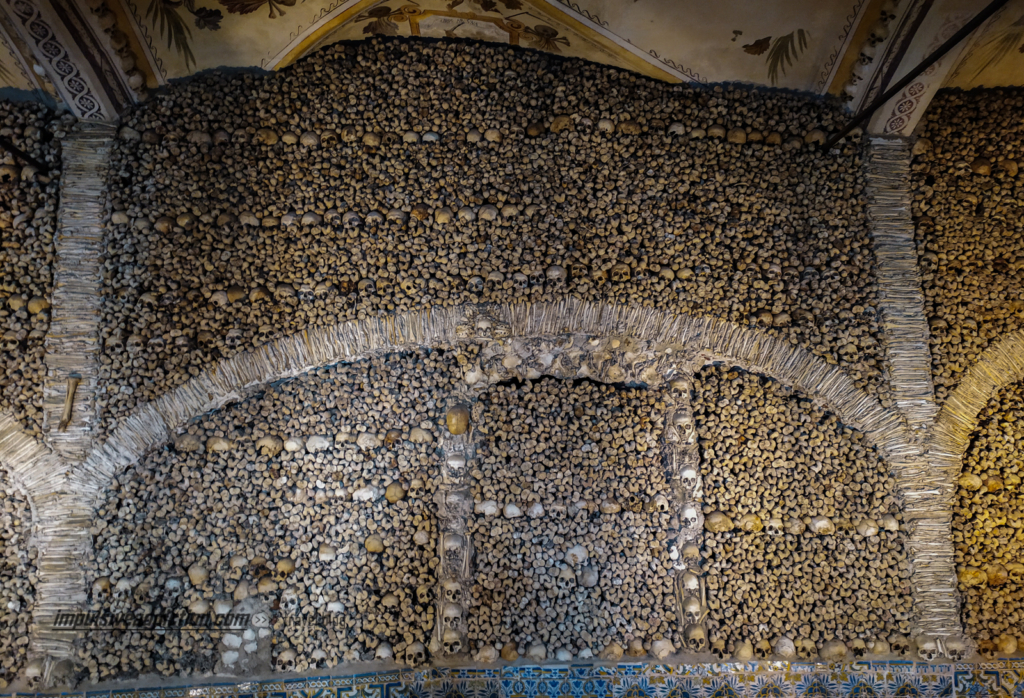
13. Relax at the Public Garden in Évora
In addition to the vegetation, garden benches, bandstand, and peacocks, the Public Garden of Évora has the Palace of Dom Manuel inside, and the interesting Fictitious Ruins (Ruínas Fingidas, in portuguese). It is a great leisure space in the city and a good place to let children play, if applicable to your case.
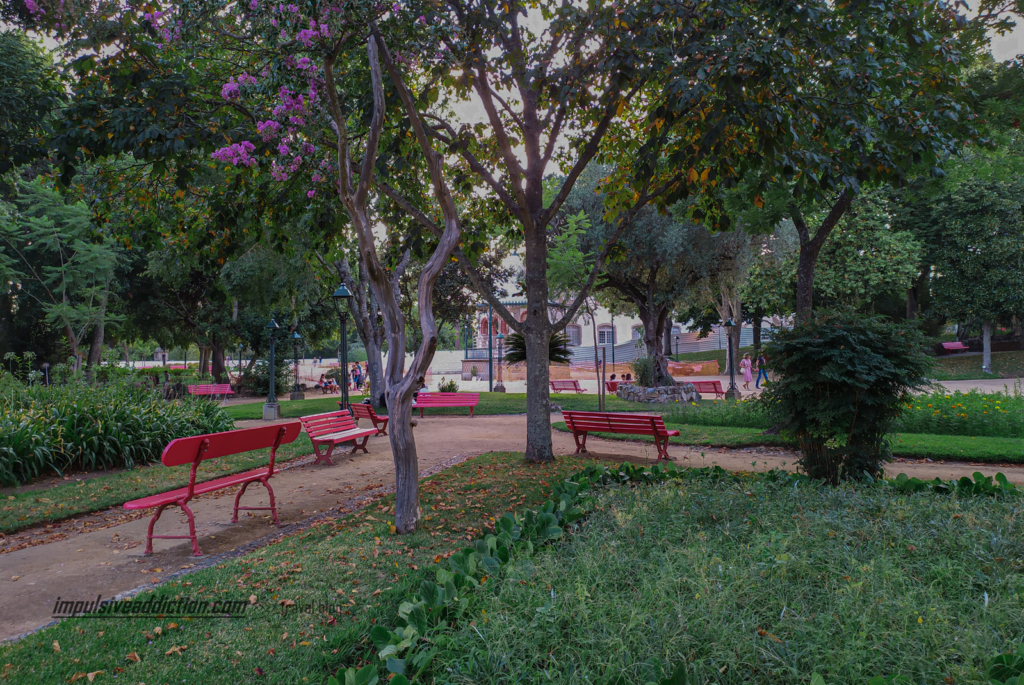
14. Walk along the wall of Évora
This is the final thing to do in the city of Évora that I recommend. After finishing it, you can dedicate yourself to the outskirts and surroundings. Before going to Raimundo Gate, you can also optionally visit the Chapel of São Brás or the Convent of Nossa Senhora das Mercês.
The walls of Évora that extend from Raimundo Gate to Lagoa Gate are very well preserved, and you have a walkway and garden that accompanies them outside the city, great for practicing some physical exercise during your stay. How about a jog at the end of the day, if you still have the energy for it?
I found many people sitting in the gardens, walking their dogs, running, or even reading a book, even though this space is next to an avenue where many cars pass during the day. You will find some tunnels that go through the wall, on the way, which can even be fun.
Optionally, make a stop at the Church of Nossa Senhora dos Remédios.
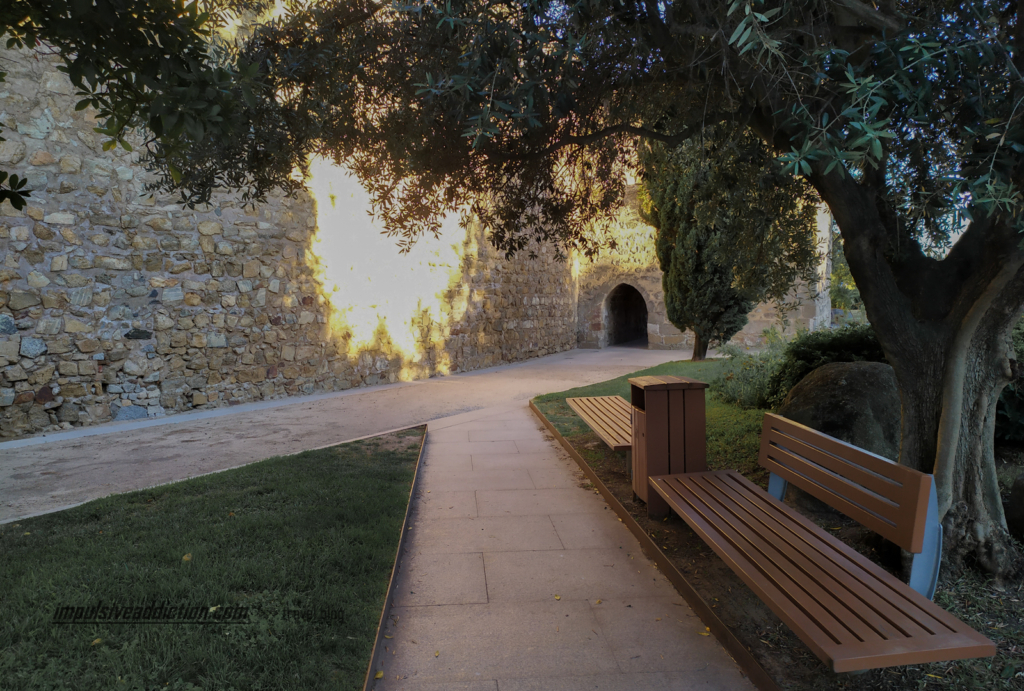
15. Visit the Fortress of Santo António da Piedade and Cartuxa Convent
Both are a way to follow the route of the Aqueduct of Água de Prata outside the city of Évora. The Aqueduct passes first through Fort of Santo António da Piedade and then through the Cartuxa Convent, the latter being more spectacular to me.
Another optional stop, the Convent of São Bento de Cástris, can be found on the way to the next point of interest. For the curious, there is a trail in Évora that follows the aqueduct for about 12km, passing through the Cartuxa Convent.
16. Enjoy the viewpoint overlooking Évora from Alto de São Bento
At Alto de São Bento, what remains of the windmills stands out, as well as the view you get of Évora. This is the best view of the city, but unfortunately, it is a very distant view, so binoculars will be essential to observe all the details.
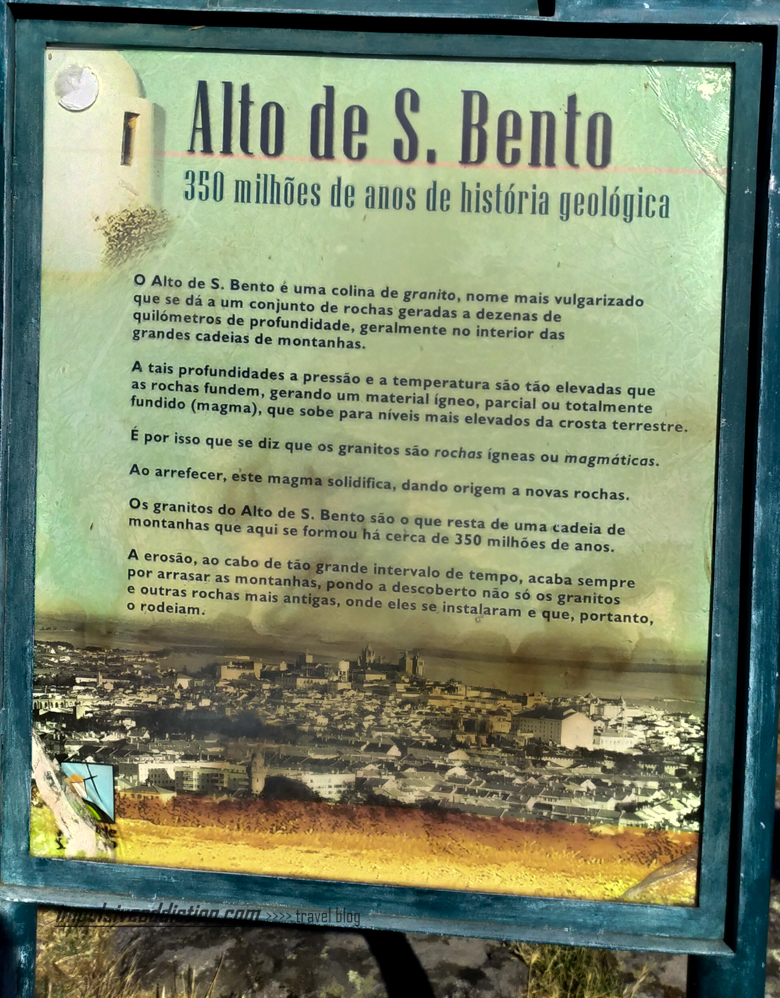
17. Discover the megalithic heritage of Évora.
If you’re looking for a must-see megalithic monument, the Almendres Cromlech is definitely the one to visit. Just keep in mind that the road to get there is unpaved, so you might want to walk if you’re not comfortable driving on rough terrain. You can visit it on a tour, if you prefer.
Before you head out to the cromlech, be sure to swing by the Almendres Interpretive Center in Nossa Senhora de Guadalupe and also check out the Almendres Menhir, which is along the way. You won’t miss it – there are signs pointing the way!
And if you have time, there are other megalithic sites to explore in the area too, like the Anta Grande do Zambujeiro and the smaller Cromlech of Vale Maria do Meio.
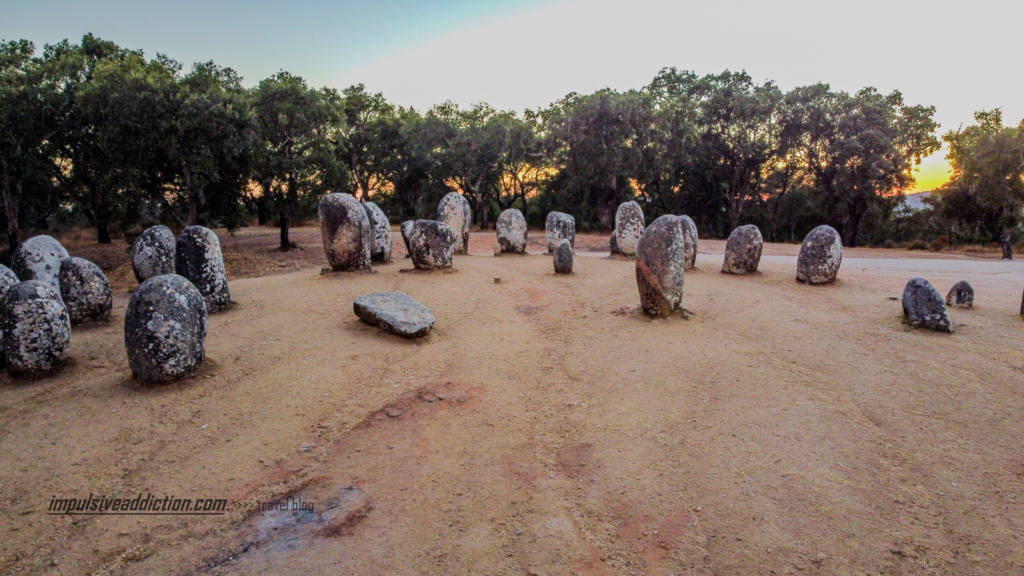
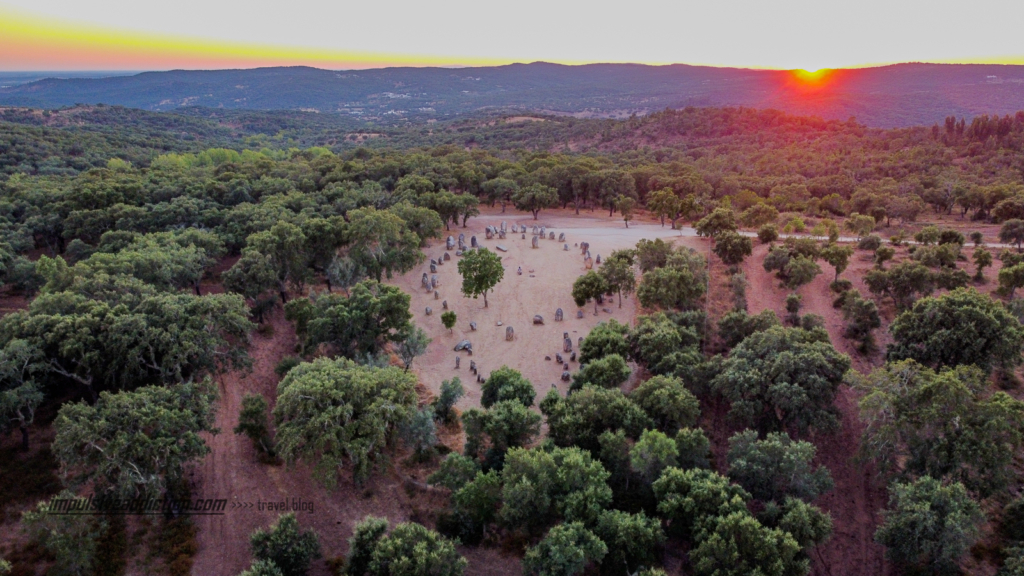
Things to do and see in Évora | Alentejo
If you want to know more about each of the places I have mentioned, they’re curiosities and historical facts, keep reading this section of the article. Below, all things to do in Évora and places to visit and see. Why don’t you book a guided tour to visit the city?
1. Gate of Aviz and Chapel of Nossa Senhora do Ó
The Gate of Aviz was the first tourist spot I mentioned in my itinerary to visit Évora. There has been reference to it since the 14th century, when the Chapel of Nossa Senhora do Ó was founded, which is located above the arch that constitutes the gate. The gate is very simple and military-looking, having been remodeled in the 16th century and later in the early 19th century. The existing plaque next to it commemorates this last intervention.
2. Convent of São José da Esperança (New Convent)
The New Convent, as it is better known, is located next to the Garden of Rua de Aviz, and is named so for having been the last one to be built in Évora. It dates back to the 17th century and belonged to the Order of Discalced Carmelite Nuns. It was abolished at the end of the 19th century after the death of the last nun, and had various other non-religious uses until 2010, when it reopened as a church.
3. Aqueduct of Água de Prata
The Aqueduct of Água de Prata was built in the 16th century at the request of King João III. It had the function of supplying water to the city of Évora and a total length of 18 km. Many other constructions associated with the aqueduct arose, and of those that still survive, the Water Tank of Rua Nova stands out, as well as several fountains in the city, supplied by gravity from the aqueduct.
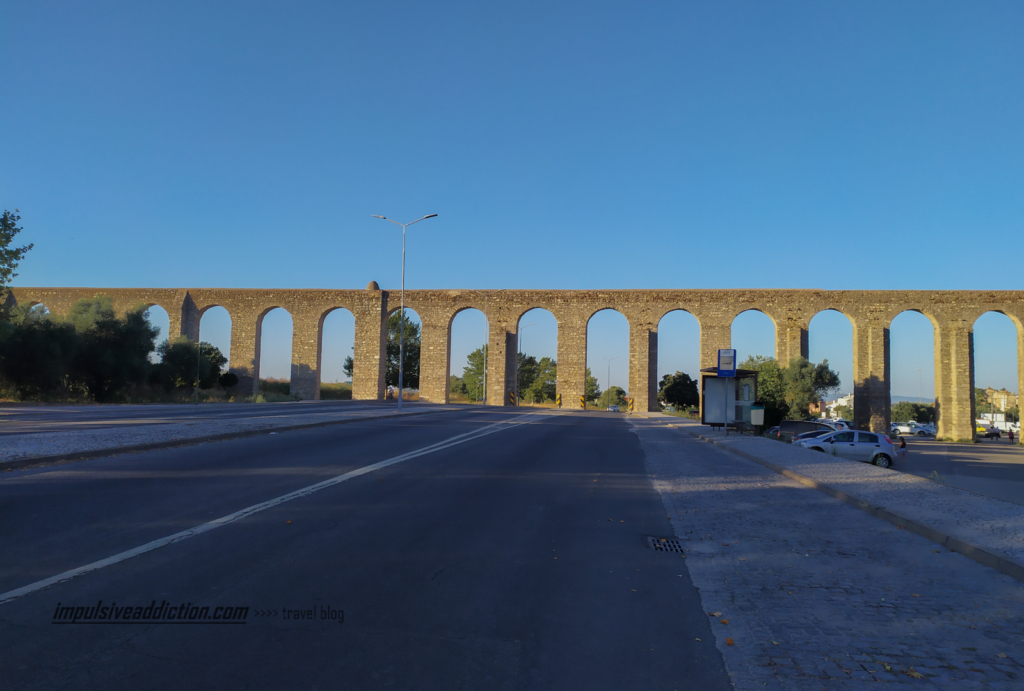
4. Roman Arch of Dona Isabel
It was one of the gates of the Roman city of Ebora Liberalitas Iulia, built between the end of the 2nd century and the beginning of the 3rd century. Today only the arch itself remains.
5. Roman baths of Évora
Located in the City Hall, as I mentioned earlier, they were very recently discovered in archaeological excavations in the building (1987).
These were the public baths of the Roman city, and were composed of 3 zones: the Laconium (for hot and steam baths), the Praefurnium (where the water necessary for the other rooms of the baths was heated), and the outdoor pool: Natatio. The baths were probably supplied by a Roman aqueduct prior to the Aqueduct of Água de Prata.
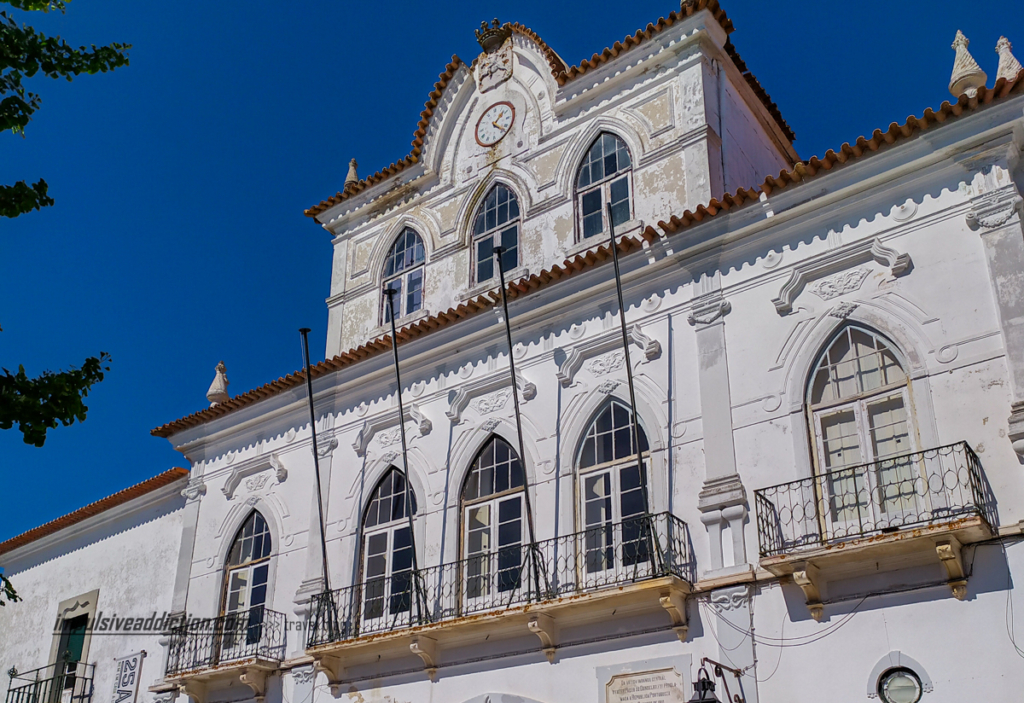
6. Water Tank of Rua Nova
It was part of the construction of the Aqueduct of Água de Prata in the 16th century, and was composed of several columns still visible today. It was used to distribute the water it received from the aqueduct.
7. Giraldo Square
Giraldo Square emerged as a tribute to Geraldo, the Fearless, who conquered Évora from the Moors in the 12th century and was therefore named Alcaide of Évora by King Afonso Henriques.
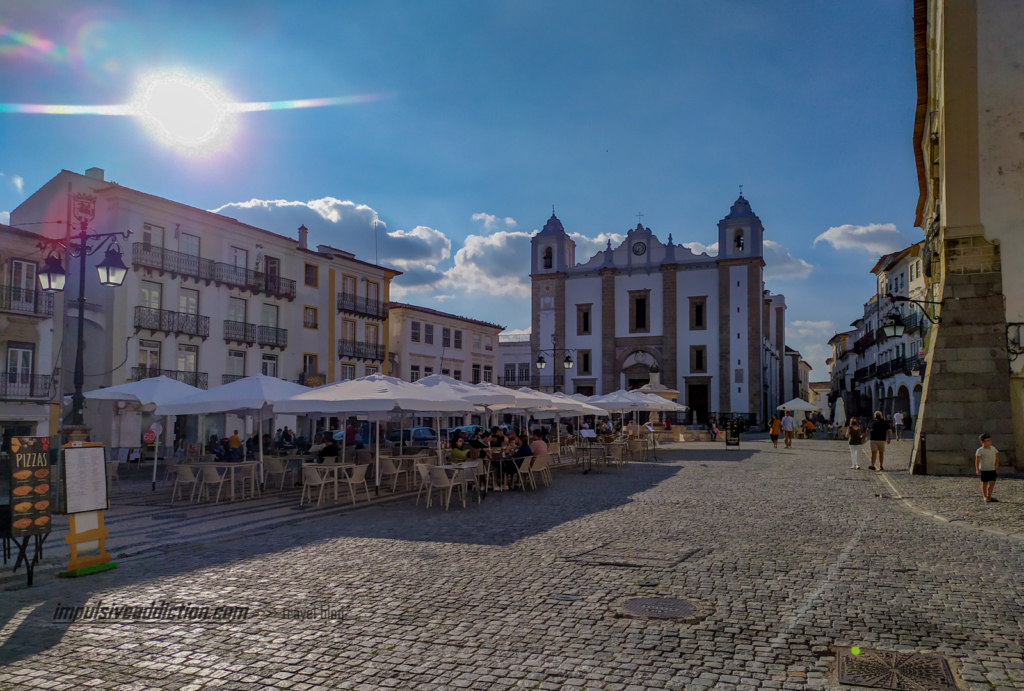
8. Fountain of Giraldo Square
The fountain’s 8 spouts stand out, associated with the 8 streets that lead from Giraldo Square to various points in the city of Évora. The fountain has a crown at the top.
9. Church of Santo Antão
This church was built in the 16th century. Unfortunately, for its construction, an Ancient Roman Triumphal Arch where the Aqueduct of Água de Prata ended was deliberately demolished. Inside the church (main altar) there are still traces of the old Hermitage of Santo Antoninho on top of which it was built.
10. Santa Clara Convent in Évora
This is a Franciscan female convent dating back to the mid-15th century.
11. Vimioso Palace
It was built in the 16th century as the residence of Bishop D. Afonso de Portugal, and later of his descendants: the Counts of Vimioso. Today it is part of the University of Évora (archaeology campus), where visitors can visit the Interactive Center.
12. Évora Cathedral
Évora Cathedral is also known as the Basilica of Nossa Senhora da Assunção. Its construction began at the end of the 12th century and was completed in the mid-13th century. I highlight on its main facade the mismatched windows, and inside its magnificent cloisters. The view of the city from the rooftops of the cathedral is fabulous. It is said that Évora Cathedral is the largest medieval cathedral in Portugal.
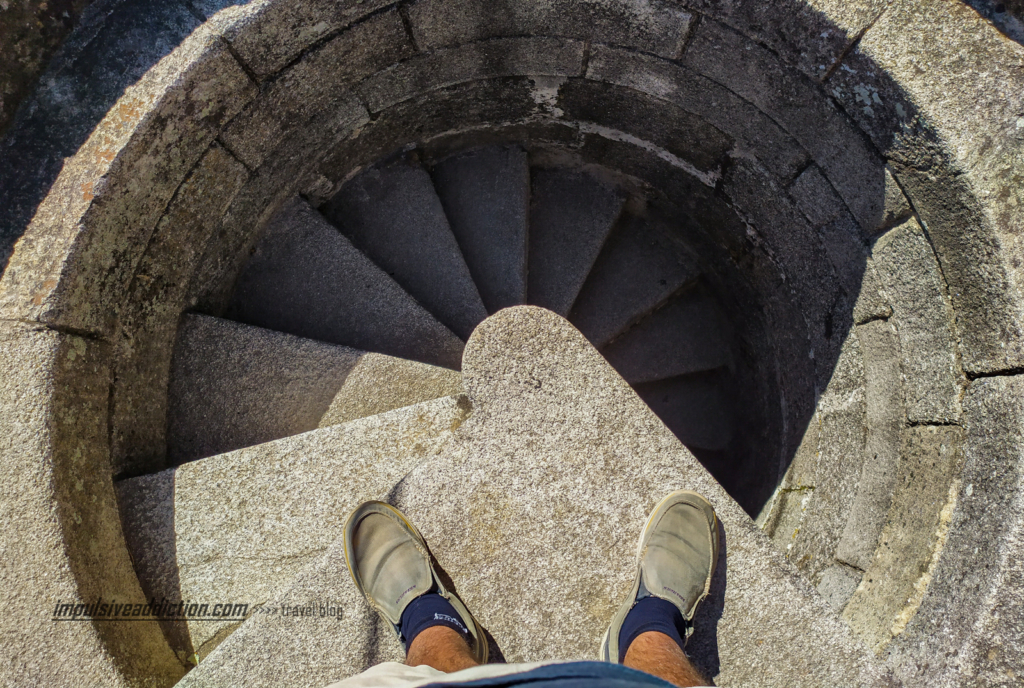
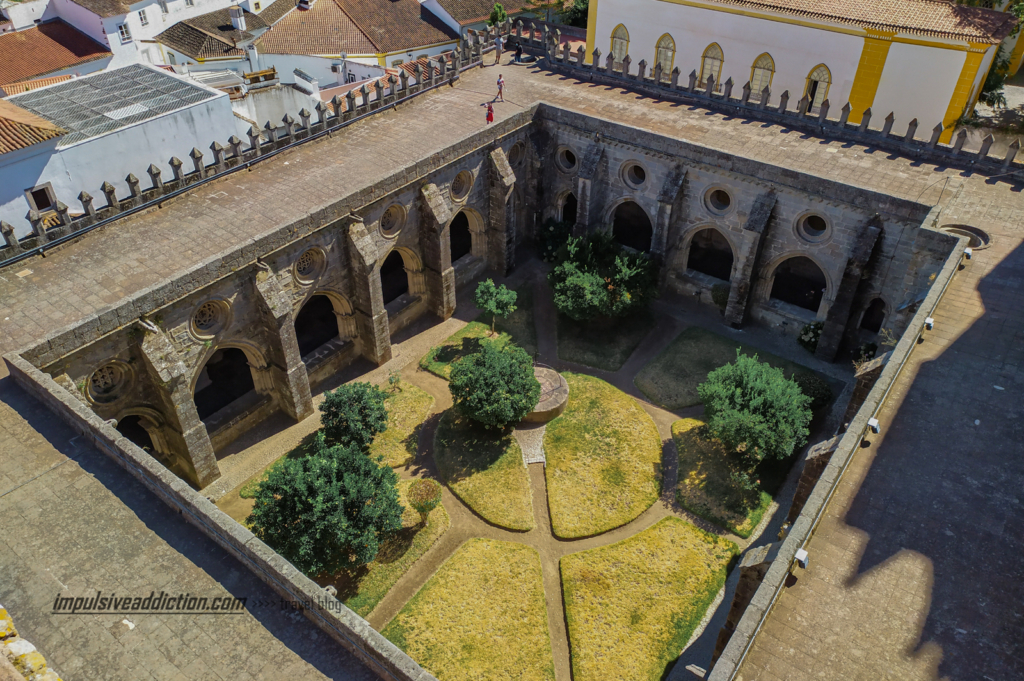
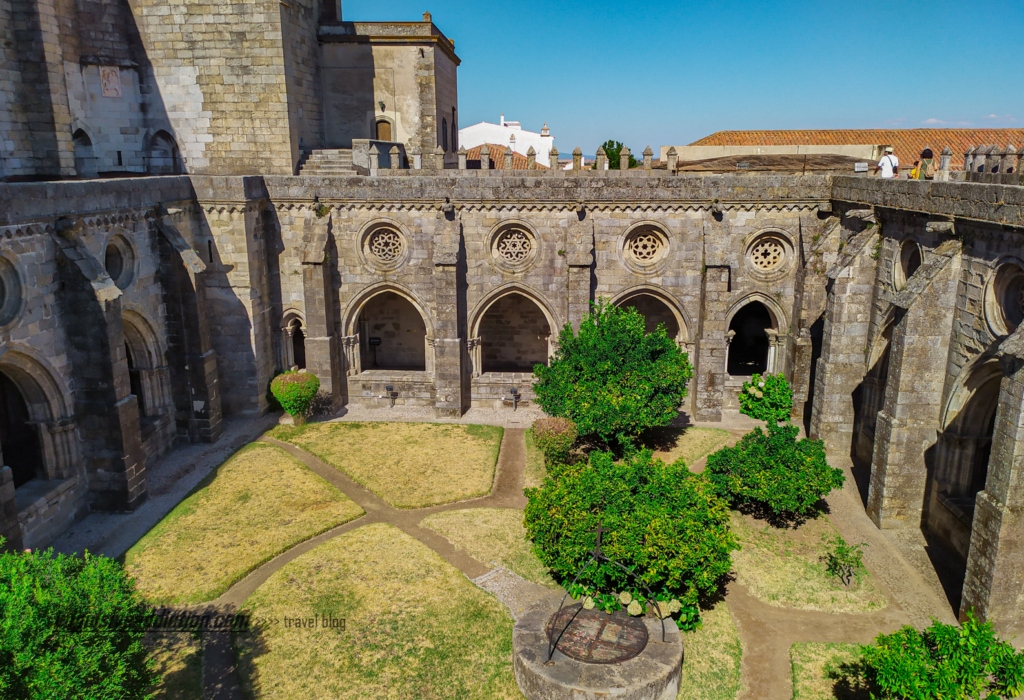
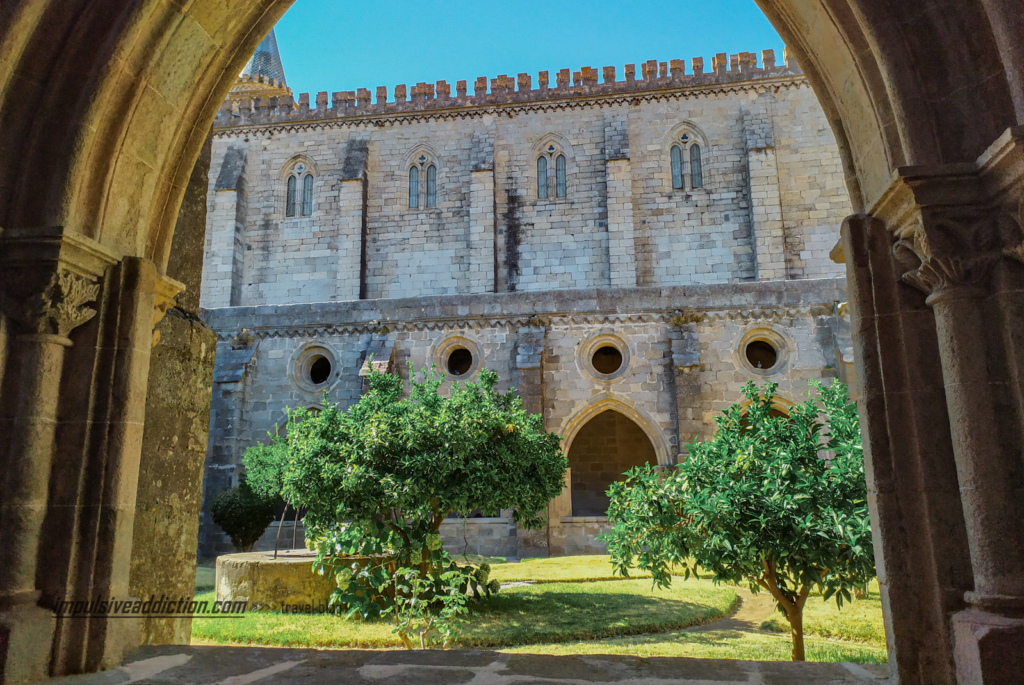
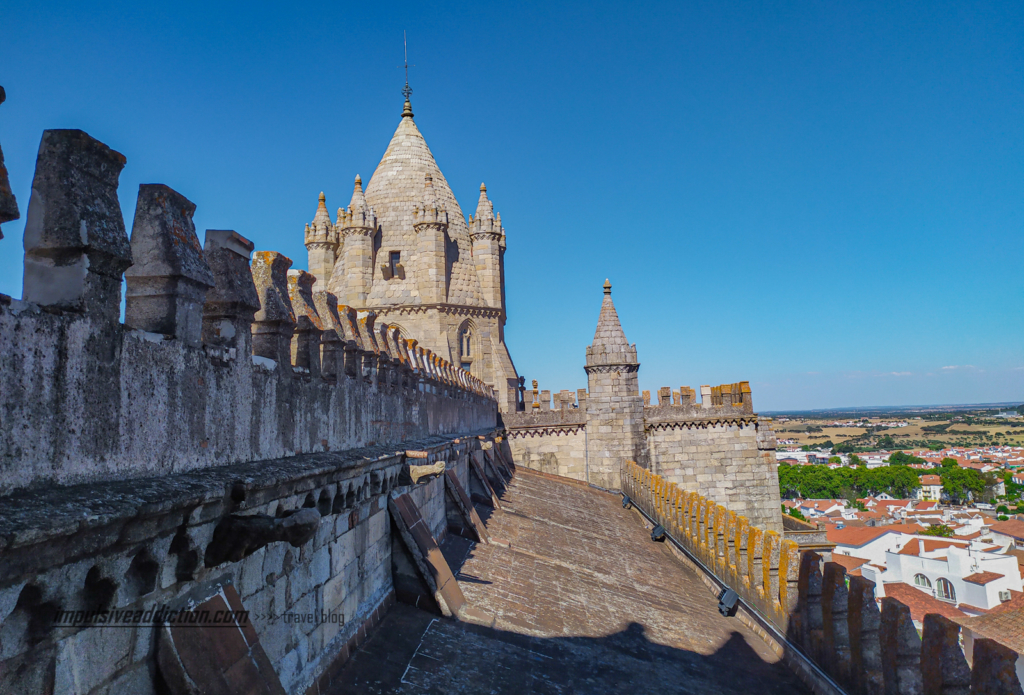
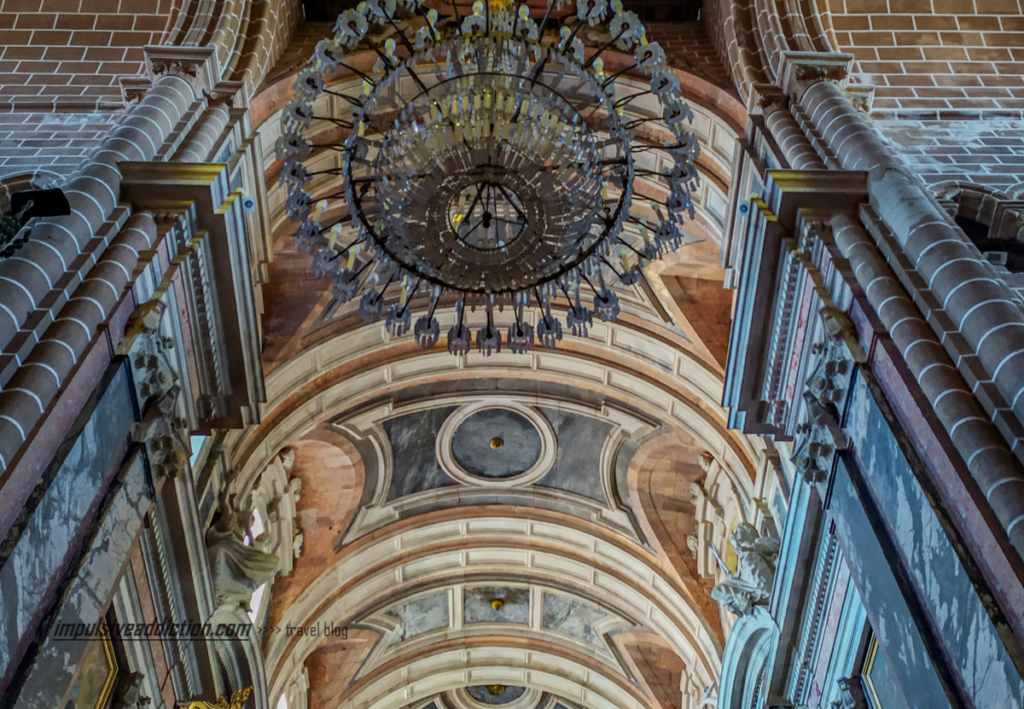
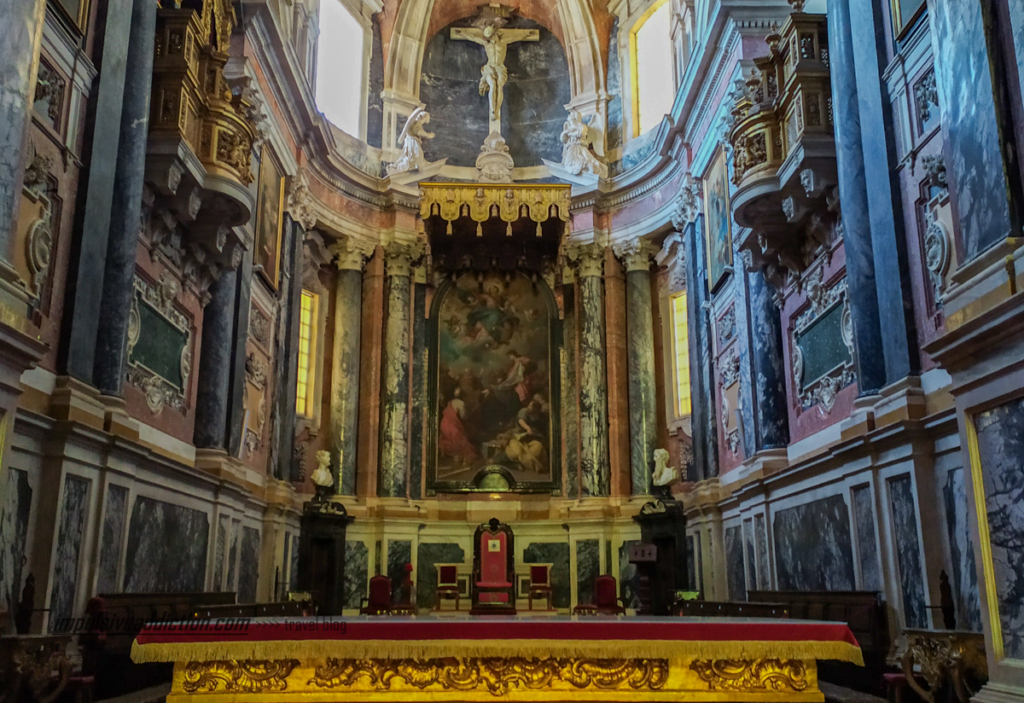
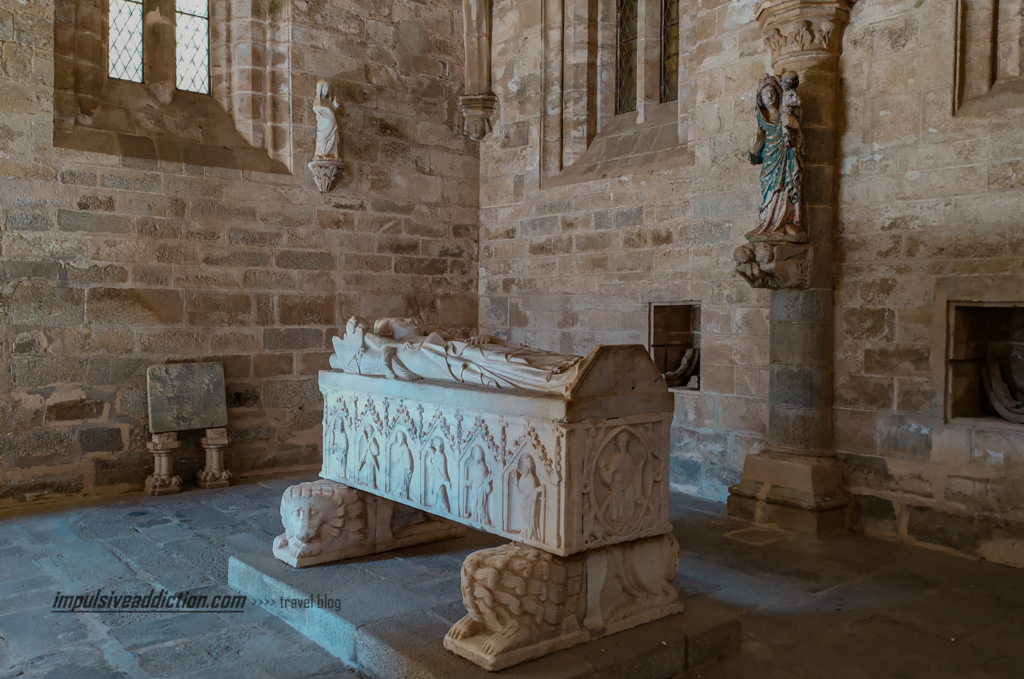
13. Main Museums in Évora
There are several museums in Évora, and I will talk here about the main ones. To access ticket reservations for the main museums, access Évora Ticket.
Casa da Balança – Metrology Museum
I consider this museum as optional. It is dedicated to Metrology and was founded in 1997 in an old warehouse in Largo do Chão das Covas where there was a vegetable market.
Évora Clock Museum
Évora Clock Museum is simply a center of Serpa clock museum, as I mentioned throughout the itinerary. There you can access exhibitions with hundreds of clocks that have been collected over the years.
National Museum Frei Manuel Cenáculo
It is located in the Square Conde de Vila Flor, being the most important in the city with thousands of pieces on display: for example, beautiful panels inside depicting the passion of Christ and the life of the Virgin Mary. It is right in front of the Roman Temple in Évora.
Eugénio de Almeida Art and Culture Center (Inquisition Palace)
Exhibitions mainly of contemporary art.
Évora Cathedral Sacred Art Museum
It is located in Évora Cathedral and there you can find exhibitions of painting, goldsmithing, and sculpture of a religious nature.
Craft and Design Museum
Regarding handicrafts, it has exhibitions of pottery, wood, cork, tapestry, etc., of Alentejo origin.
Carriage Museum
As the name suggests, it presents examples of carriages that were one of the means of transportation in Évora several centuries ago.
14. Manueline Window of Casa de Garcia Resende
Garcia Resende was a poet and famous chronicler who lived in the city. The main remaining feature of his house is the Manueline window.
15. Palace of São Miguel
The Palace of São Miguel belongs to Eugénio de Almeida Foundation. According to information found on the foundation’s website, it dates back to the Middle Ages and was initially inhabited by the Counts of Basto and only later by Eugénio de Almeida family.
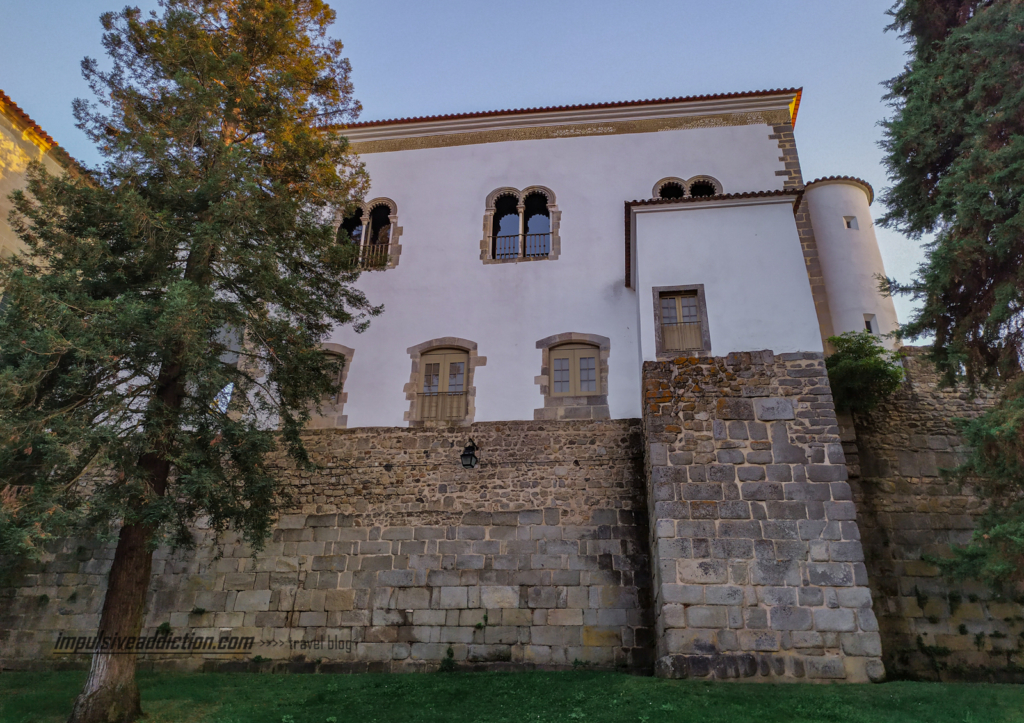
16. Roman Temple of Évora
The Roman Temple of Évora was built in the early first century and it is impressive how much of it still remains, and it probably would have been even better preserved if it hadn’t been destroyed in the fifth century during the invasion of the barbarian peoples.
Although many refer to it as the Temple of Diana, that association is completely wrong, as it is not a temple in honor of the Roman goddess of hunting, but rather a temple in honor of Emperor Augustus.
In later centuries, it was used as a stronghouse for the Évora castle, and even served as a slaughterhouse. Only in the nineteenth century was it restored to its original appearance as a monument of the city. Fourteen original Corinthian columns still remain.
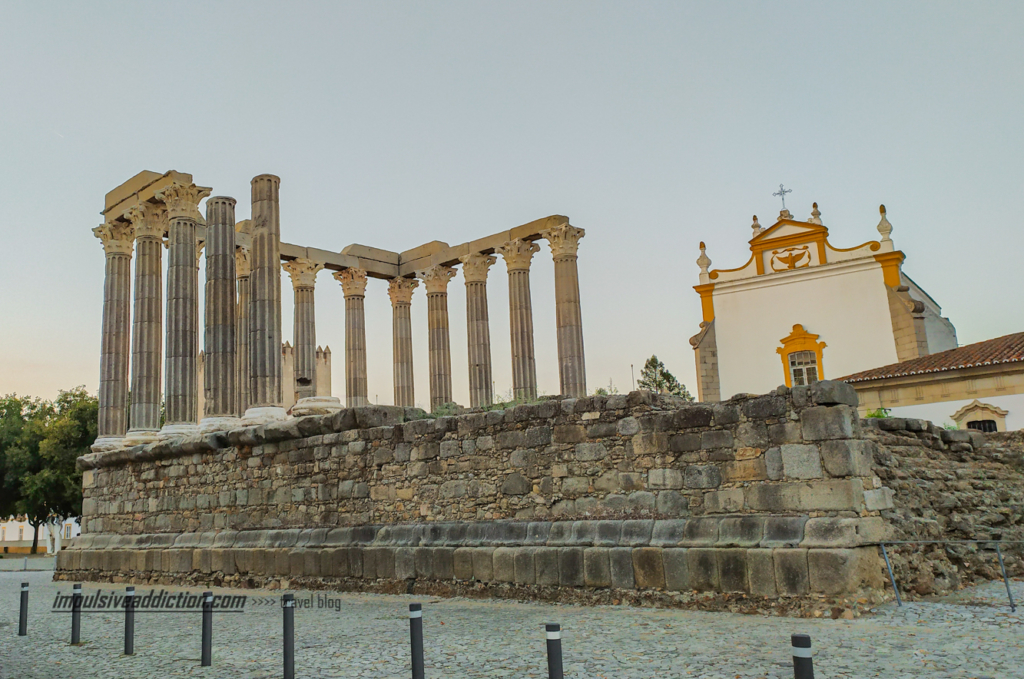
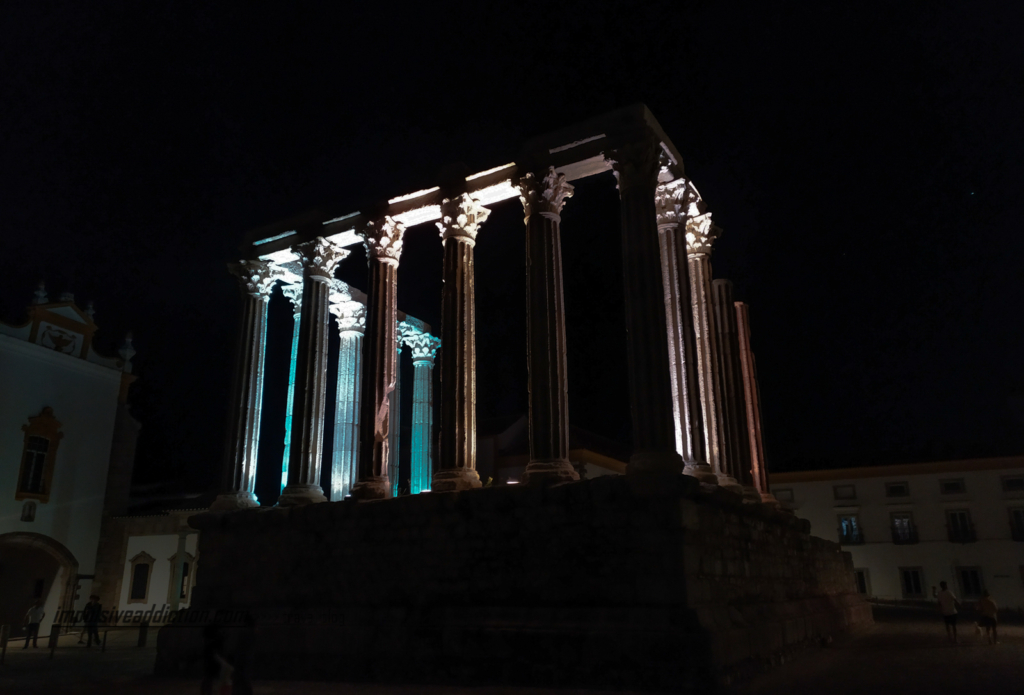
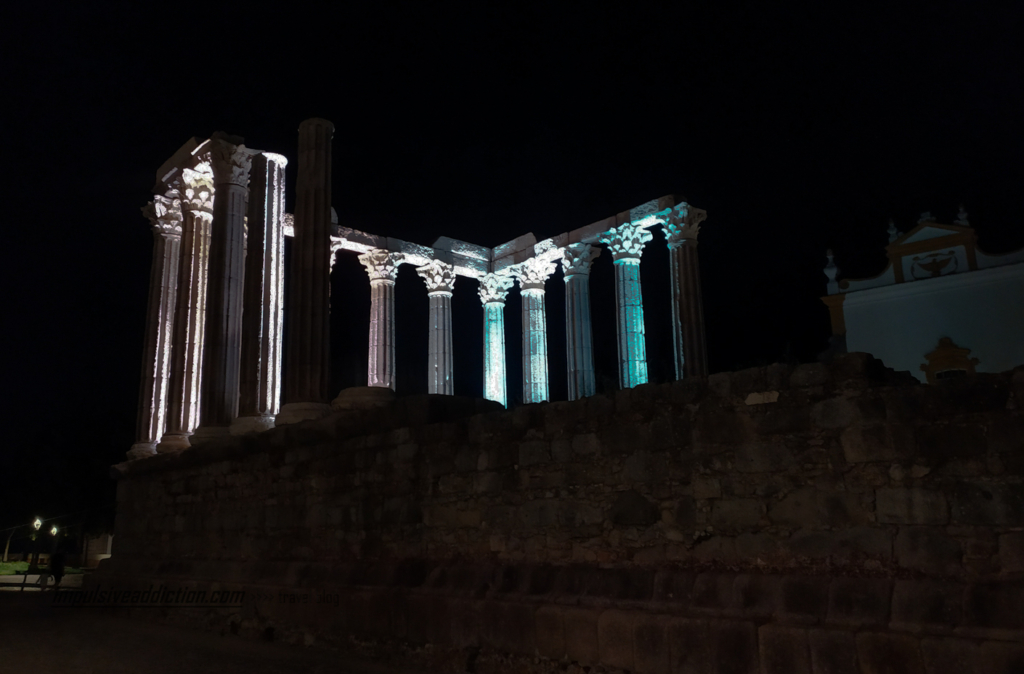
17. Church of Lóios (São João Evangelista)
The church is beautiful inside, lined with eighteenth-century tiles. It dates from the end of the fifteenth century and was built to serve as a pantheon for the Melo family, hence the various tombs inside.
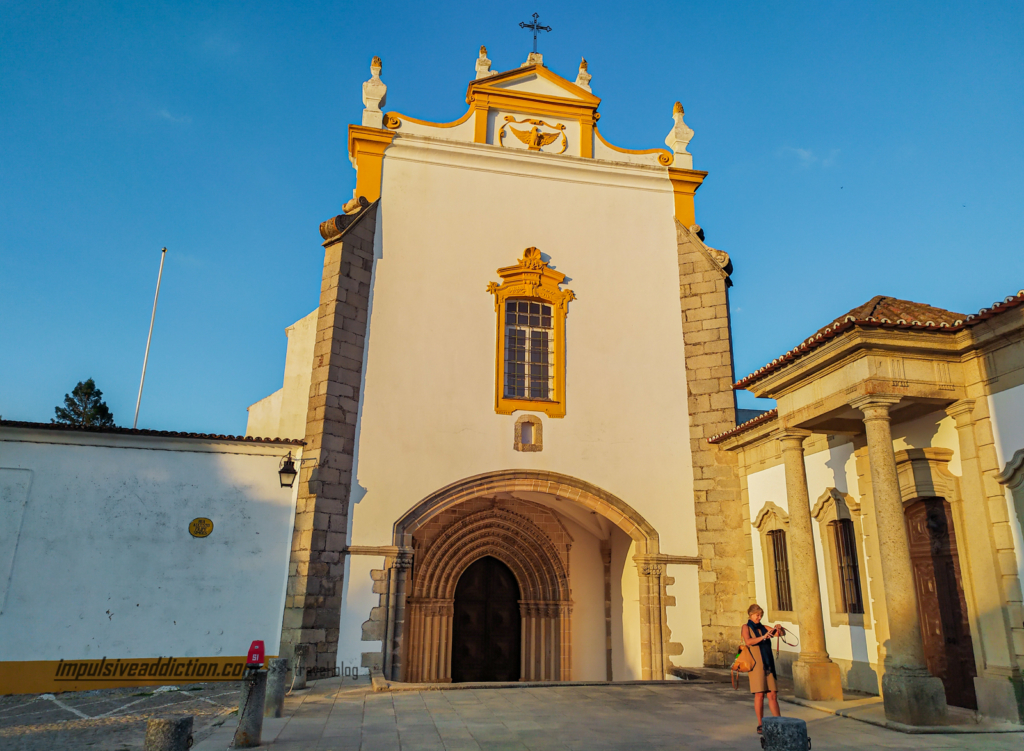
18. Cadaval Palace and Tower of the Five Quinas
Cadaval Palace was the birthplace of the Dukes of Cadaval and founded in the fourteenth century, arising from the ruins of the ancient Moorish castle of Évora, of which the Tower of the Five Quinas remains, for example. The Church of Lóios, mentioned in the previous attraction, is owned by the Cadaval ducal family. Learn more on the official website.
19. Church of São Mamede
The church was built during the reign of King D. Dinis, in the thirteenth-fourteenth centuries. I have listed it as an optional visit on my suggestion of an itinerary in Évora.
20. Cloisters and Library of the University of Évora
The University of Évora was founded in the sixteenth century, but the College of the Holy Spirit already existed, whose cloisters and fountain (Pátio dos Gerais) are the main attraction to visit. This is the second oldest university in Portugal.
Several rooms of the College of the Holy Spirit are covered with tiles dedicated to the subjects taught at the university. The library is, for me, the most impressive room to visit due to its ceiling painted in the 18th century.
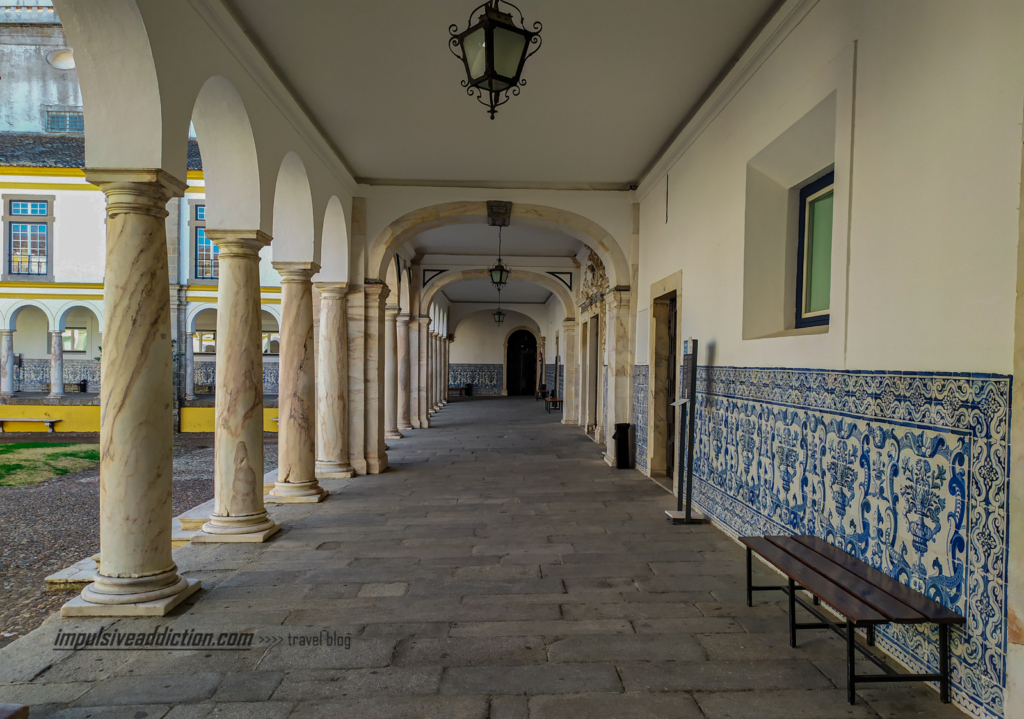
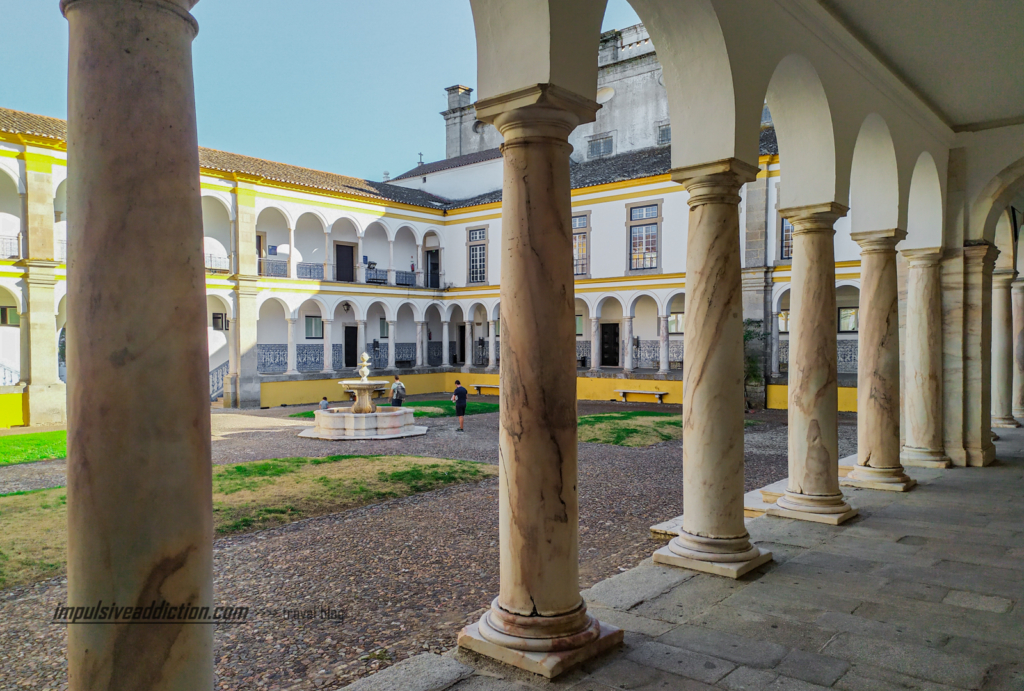
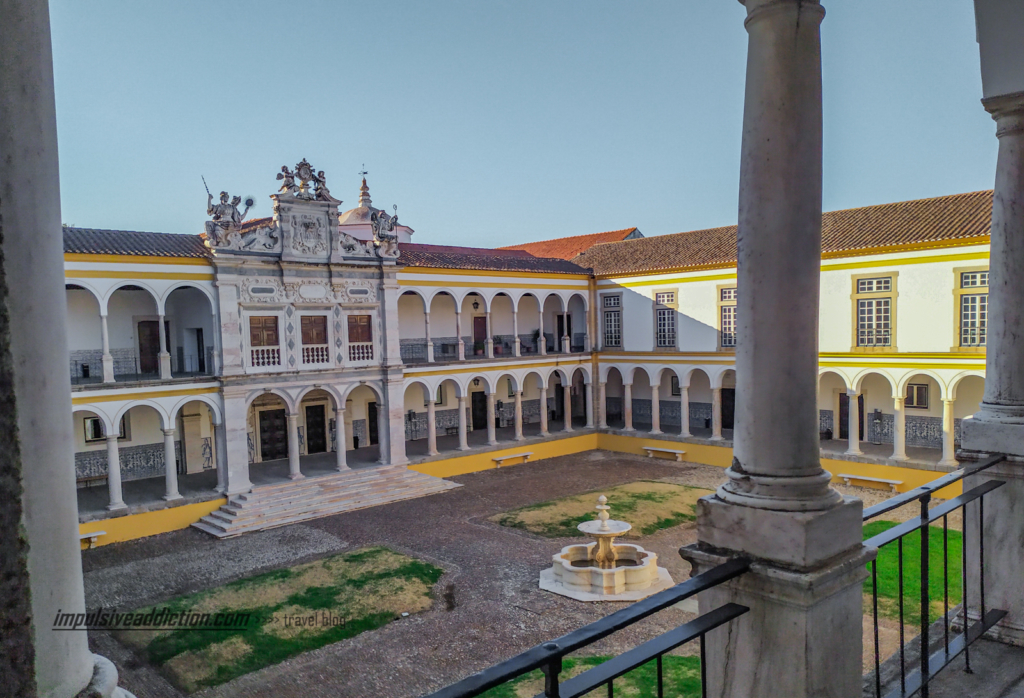
21. Square and Fountain of the Gates of Moura
This 16th-century fountain was only possible after the construction of the Aqueduct of Água de Prata, as its water came from it.
22. Column with the History of Évora
It is also located in the Square of the Gates of Moura, in the courthouse building. It portrays various episodes of the History of Évora, such as:
- The Roman occupation
- The Muslim occupation
- The Conquest of the Moors by Geraldo sem Pavor
- The Battle of Salado
- And the Restoration wars
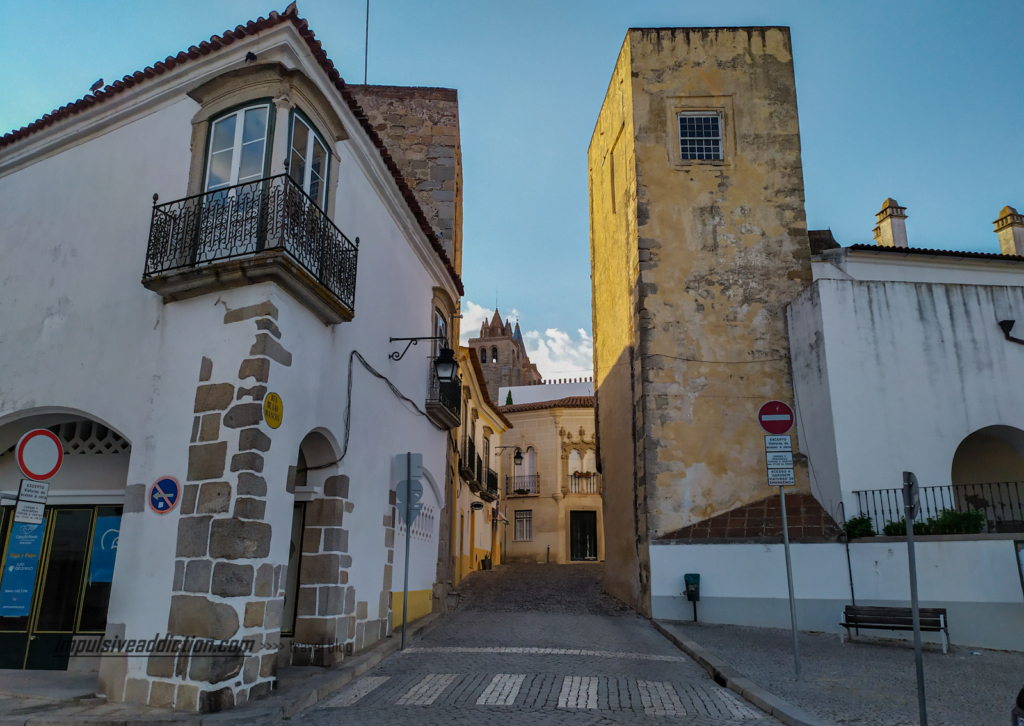
23. Carmo Church
The convent to which this church belongs was built in the 16th century and was initially located near the Lagoa gate of the walled city of Évora. The original convent was destroyed during the Restoration Wars (17th century), and only the image of Our Lady of Carmo survived.
The new convent emerged in the Square of the Gates of Moura, in the Former Palace of the House of Bragança, donated to the Carmelite friars by King D. João VI himself. The palace’s Knots Portico stands out. The convent was extinguished in the 19th century and today is the headquarters of the Music and Theater department of the University of Évora.
24. Church of Mercy and Church of São Vicente
The Church of São Vicente dates from the 15th century, and the Church of Mercy from the 16th century. On the outside, they are quite simple, so I considered them optional on my itinerary in Évora. The Church of Mercy, however, has an interesting set of tiles inside, as is characteristic of other churches that you will find when visiting Évora.
25. Graça Church in Évora
It is a 15th-century Church/Convent. It is said to have Italian influence, and perhaps that is why I prefer it, since Rome is my favorite city in Europe.
The sculptures stand out, especially the two angels at the top of the church, and the “Children of Grace”, the four figures below. You also have the bell tower. The Church of Graça was the first Renaissance monument to be built in Évora.
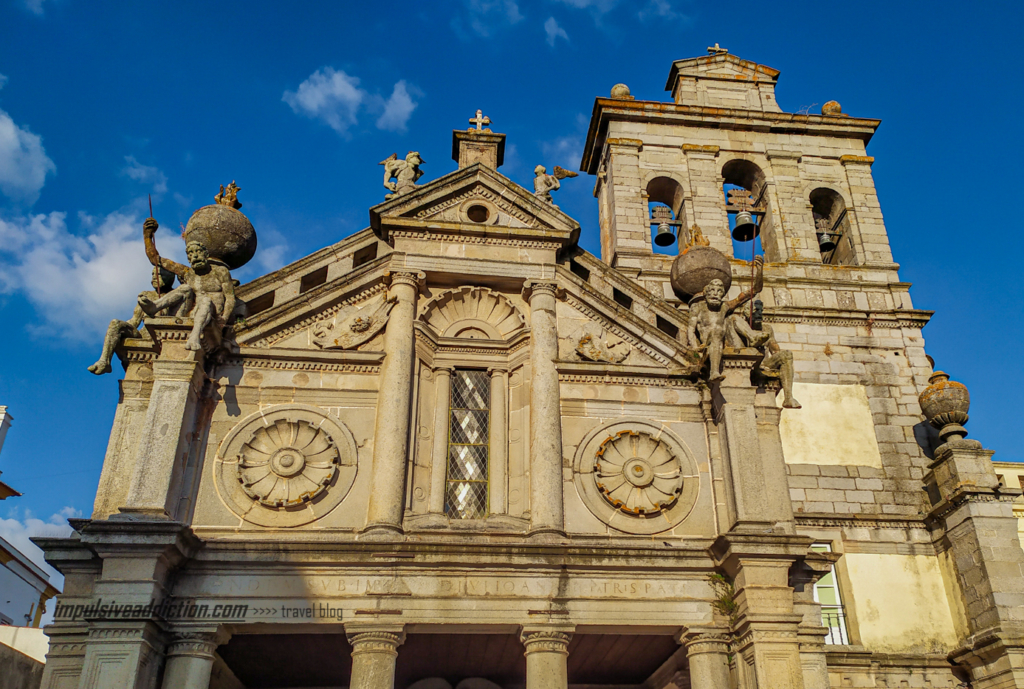
26. Church of São Francisco and Chapel of Bones
The Chapel of Bones is one of the most unique monuments in Évora, and even in Portugal. Many people immediately associate Évora with the Chapel of Bones, or vice versa. It is truly a fascinating place, although it is not my favorite bone chapel in Portugal (personal opinion).
It was built by Franciscan friars to illustrate the fragility of our lives as human beings. It is indeed covered with bones, and at the entrance you will find information that it also awaits yours. 😐
The Church of São Francisco, in turn, dates back to the 15th-16th century. Don’t just visit the Chapel of Bones, as the main nave of this church is one of the most beautiful in Évora. As a curiosity, I highlight the fact that the famous playwright Gil Vicente is buried here.
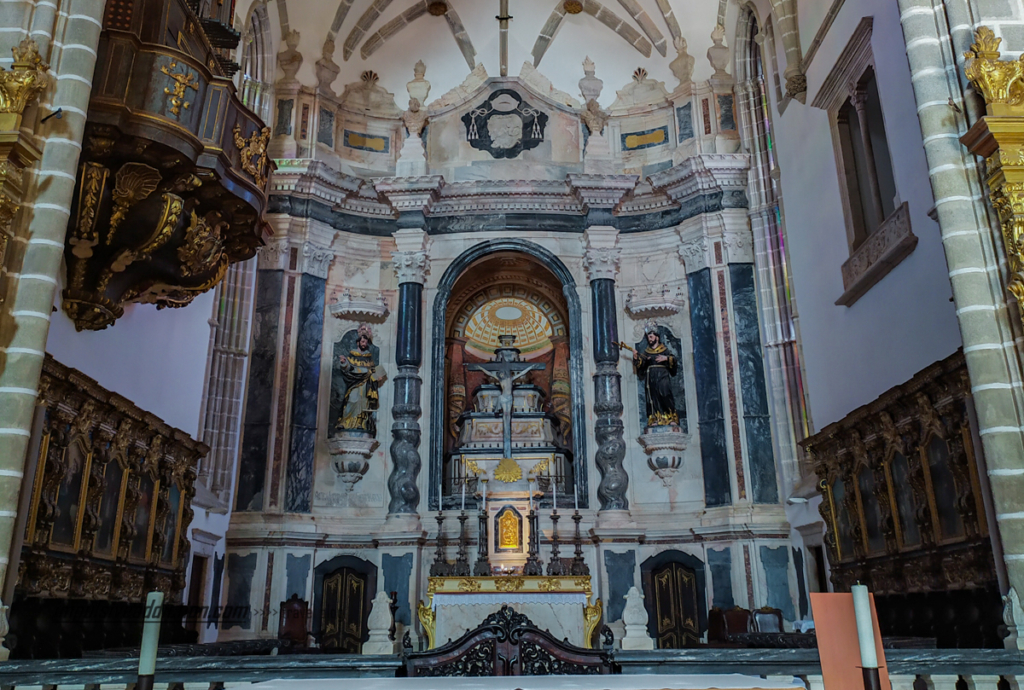
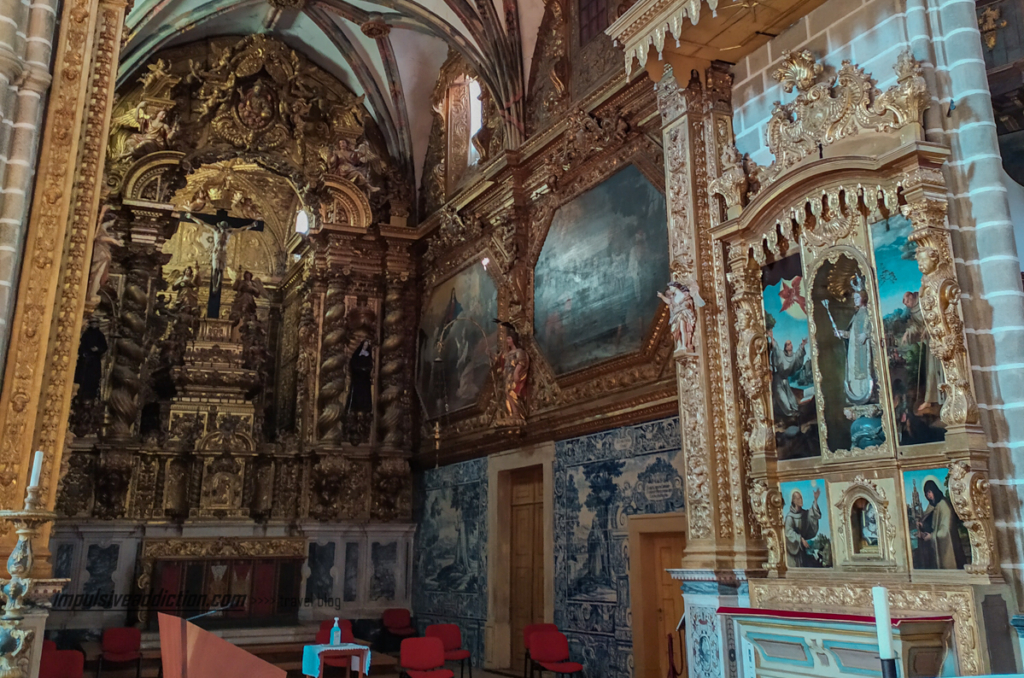
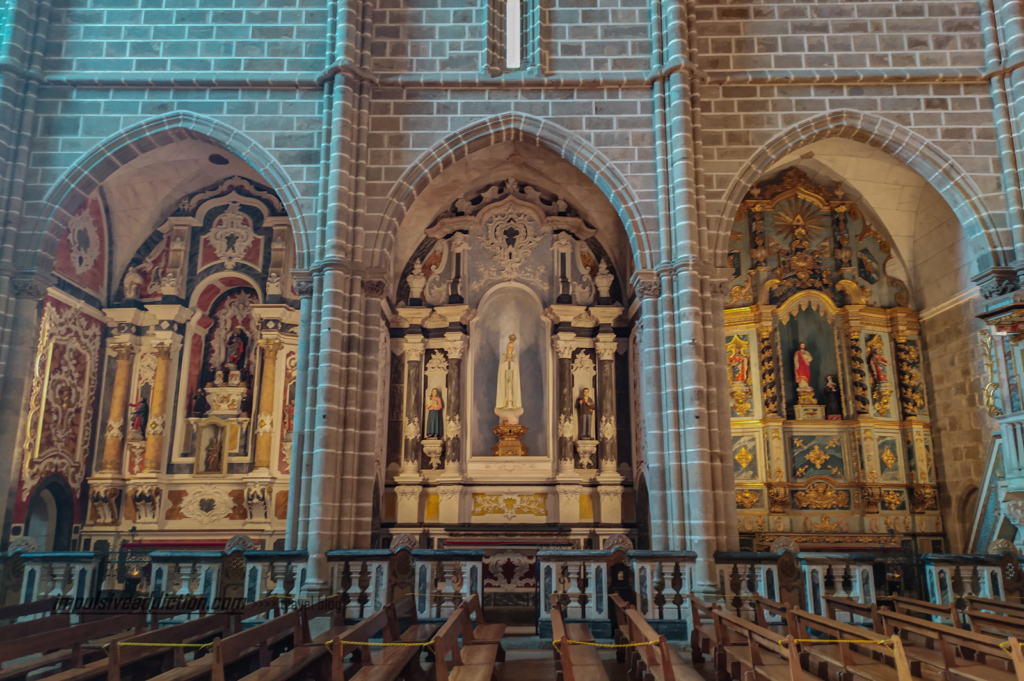
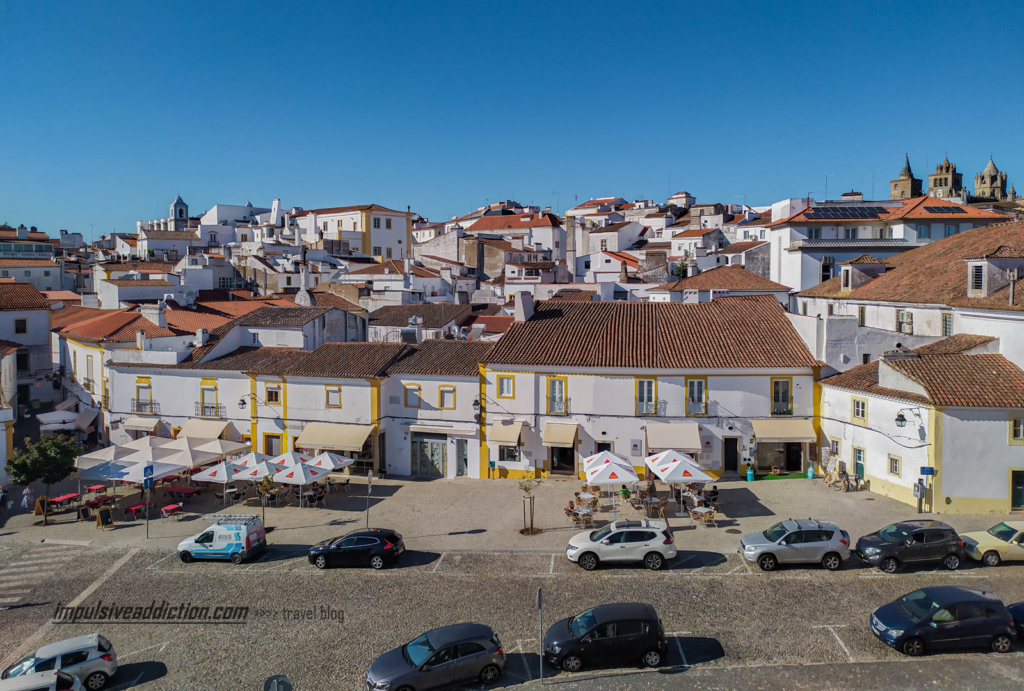
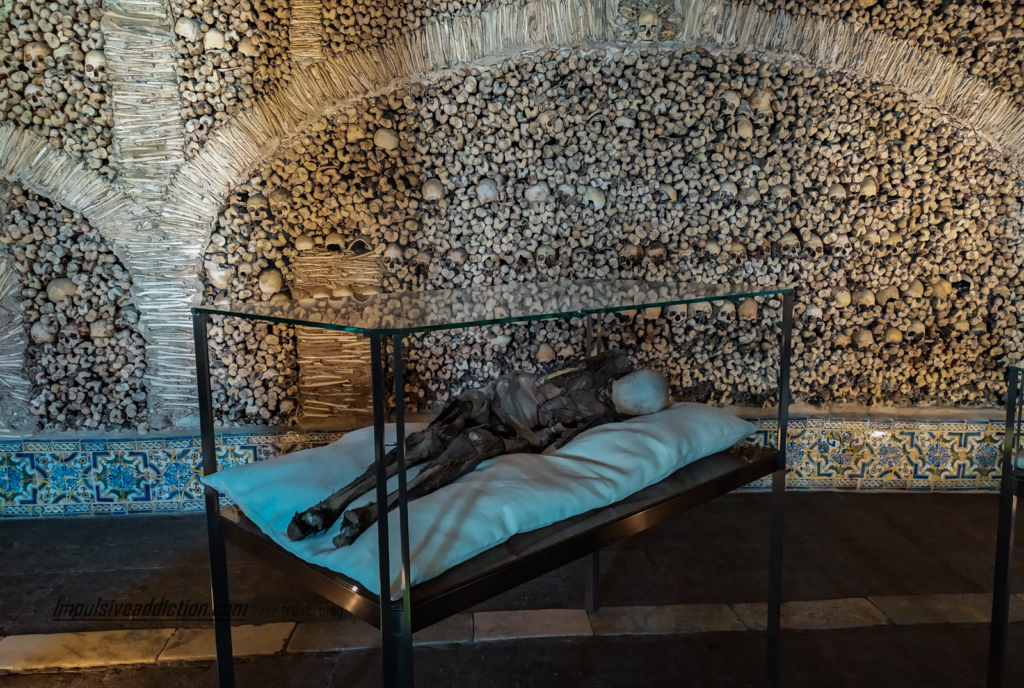
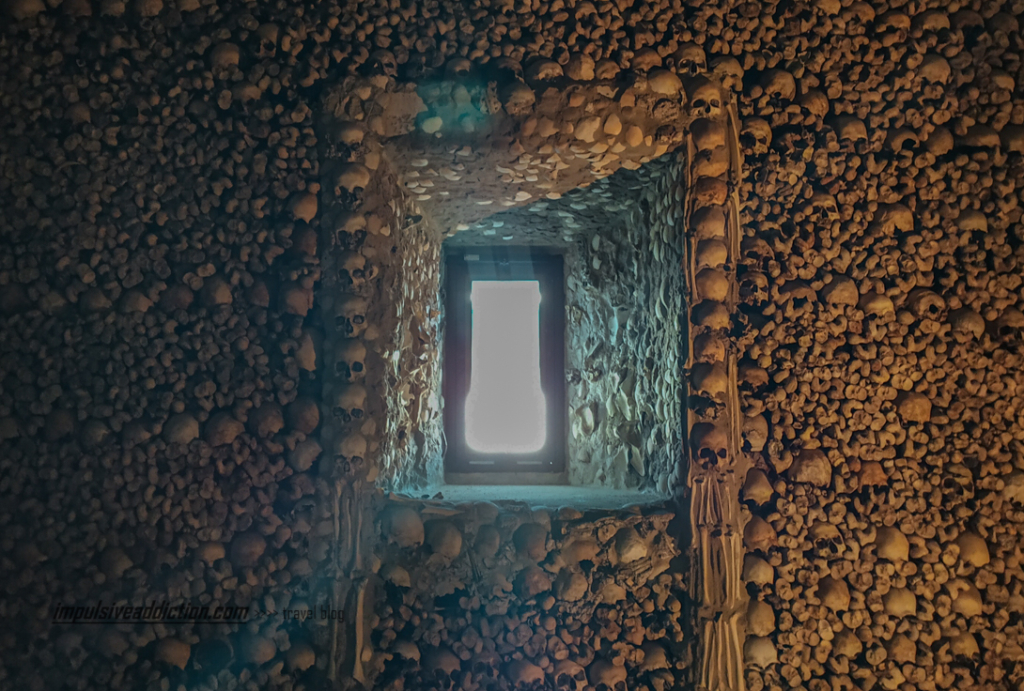
27. Palace of Dom Manuel
When I visited Évora, this palace was under renovation, so I didn’t have the opportunity to admire it in all its splendor. It is located in the Public Garden of Évora, so you can already imagine a very pleasant surrounding environment.
The Palace of Dom Manuel was commissioned to be built in the 15th century by King Afonso V, at the time to be the Royal Palace of Évora: one of the residences of the Portuguese royal family.
Unfortunately, much of the palace did not survive until today, due to some destruction it underwent, for example, for the construction of Évora Municipal Market.
28. Fictitious Ruins of the Public Garden of Évora
The Fictitious Ruins are actually from the 19th century. They are fictitious (fingidas, in Portuguese) because they were built there with elements collected from “real ruins” of monuments from various parts of the city.
29. Convent of Our Lady of Mercies
Convent of the Order of the Barefoot Augustinians, founded in the 17th century.
30. Chapel of São Brás
Évora chapel from the 15th century, built outside the city walls. Unfortunately, the original structure was seriously damaged in the Restoration Wars.
31. Church of Our Lady of Remedies
It is part of a male convent of friars of the Order of the Barefoot Carmelites, founded in the early 17th century. Inside the convent, you can find some exhibitions today, including Megalithica Ebora, about megalithism when visiting Évora.
32. Walls of Évora
The Walls of Évora were built over the centuries:
- From the 3rd-century Roman wall, with 2 km in length, Dona Isabel Arch is the most visitable ex-libris.
- From the 7th century, the Sisebuto Tower stands out, next to Rua Nova Water Tank.
- Near the Roman temple and Évora Cathedral, there are still some traces of interventions on the wall during the Arab occupation.
- The construction of the medieval enclosure of Évora began in the 14th century.
- The Wall was reinforced with bulwarks in the 17th century.
- The section between the Raimundo Gate and the Lagoa Gate is, in my opinion, the best-preserved and most interesting to explore when visiting Évora.
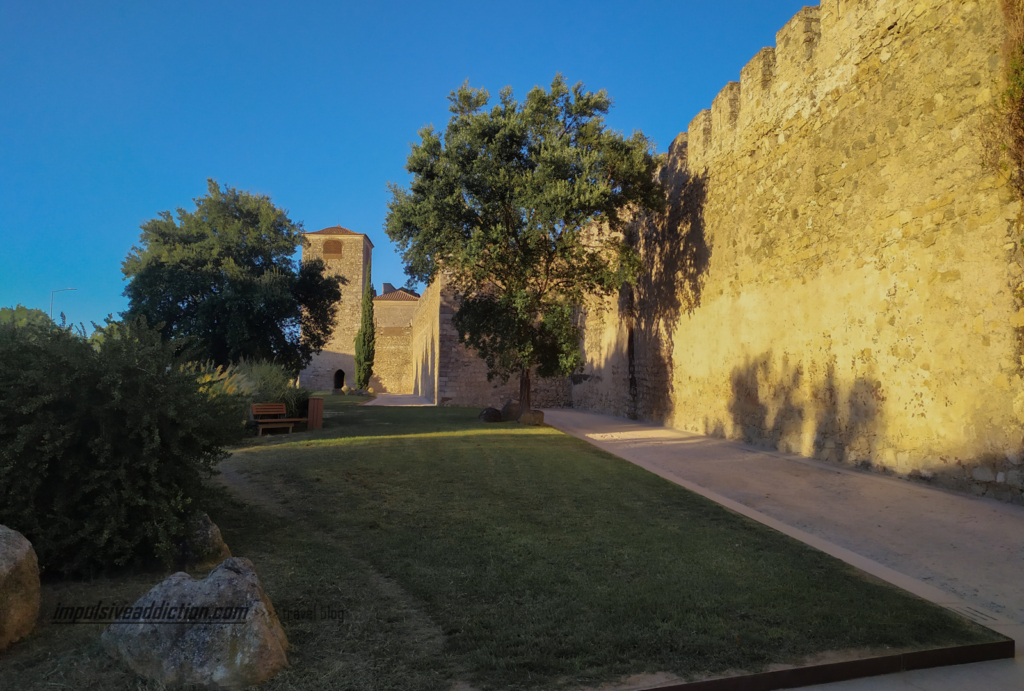
33. Fort of Santo António da Piedade
Fort with 4 bastions and surrounded by a moat, built during the Restoration Wars to protect the Convent of Santo António da Piedade (Capuchin Friars). The Fort is crossed by the Aqueduct of Água de Prata.
34. Convent of Cartuxa
It was built in the late 16th century. The Carthusian Monks lived here from its construction until they were expelled in the 19th century.
It was later used as an agricultural school (with the church transformed into a barn) until it was acquired by Eugénio de Almeida family, who restored it in the mid-20th century and allowed the monks to return. It is possible to visit the convent/monastery through a guided tour.
35. Almendres Cromlech
Have you heard of or visited Stonehenge in the UK? The Almendres Cromlech is even older. 😉 It is believed to have been built in 3 stages, between the 6th millennium BC and the 3rd millennium BC. It was only discovered in 1964 and consists of a total of 95 standing stones.
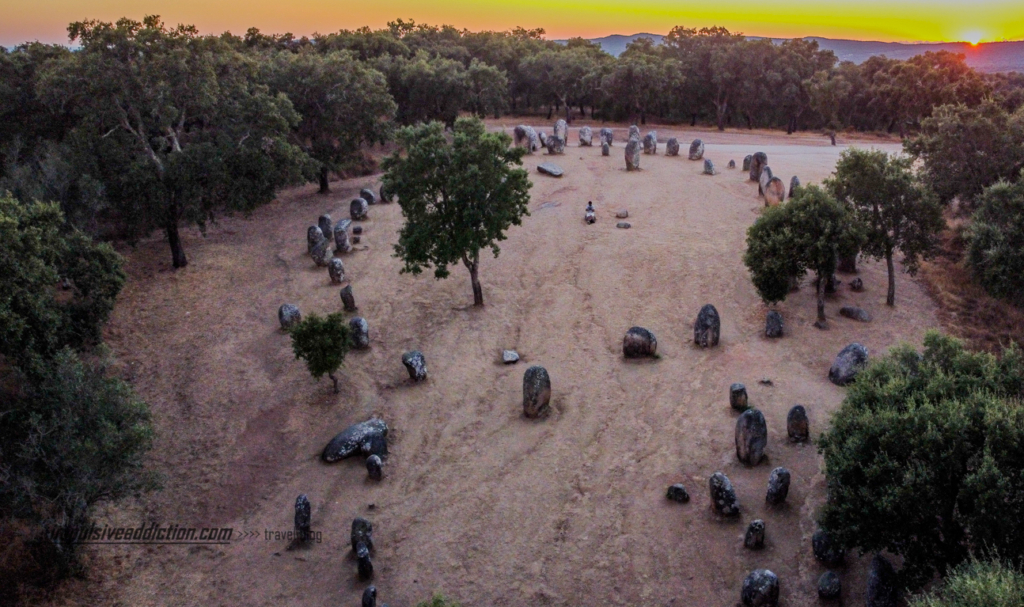
36. Anta Grande do Zambujeiro
The Anta Grande do Zambujeiro dates back to the 3rd or 4th millennium BC. Its function in ancient times was religious, for burial of the deceased.
37. Cromlech of Vale Maria do Meio
Its less spectacular than the Cromlech of Almendres, and also smaller, with a total of 34 standing stones. It was discovered in 1993.
Relax at In Acqua Veritas Spa
Something I did not do, I’ll just provide this information and redirect you to the spa’s website. When I visited Évora, I found information about this spa, which allows for various relaxation sessions in addition to baths, as if you were really attending ancient Roman baths. The space itself was designed with that in mind, and I saw very positive comments about it.
Visit Évora on day trips from Lisbon (in tours)
You can also participate in organized tours to visit Évora, for example with Get Your Guide, Viator or Civitatis. Below, I provide some tips on excursions to Évora and its surroundings, departing from Lisbon.
1 - Tour in Évora and Meghalitic Monuments 2 - Tour to Évora and Monsaraz 3 - Tour through the Heritage of Évora 4 - Tour Évora and Alentejo in private tour 5 - Golden Plains: Évora and Almendres Cromlech Shared Tour 6 - Small-Group Évora and Almendres Cromlech Full Day Tour
Things to do in Évora surroundings, in Alentejo?
Focus on the municipalities of Évora and Central Alentejo district. Only after you should also expand your horizons to other parts of Alentejo. You have many tips below for excellent day trips from Évora, or even for different Itineraries in Alentejo region.
1. Visit Evoramonte and Viana do Alentejo
Evoramonte is located in Estremoz, but very close to Évora. It is a must-visit in the surrounding area, mainly for the fabulous view from the walls.
Viana do Alentejo has a very particular pentagonal-shaped castle. Don’t forget the Sanctuary of Nossa Senhora de Aires nearby.
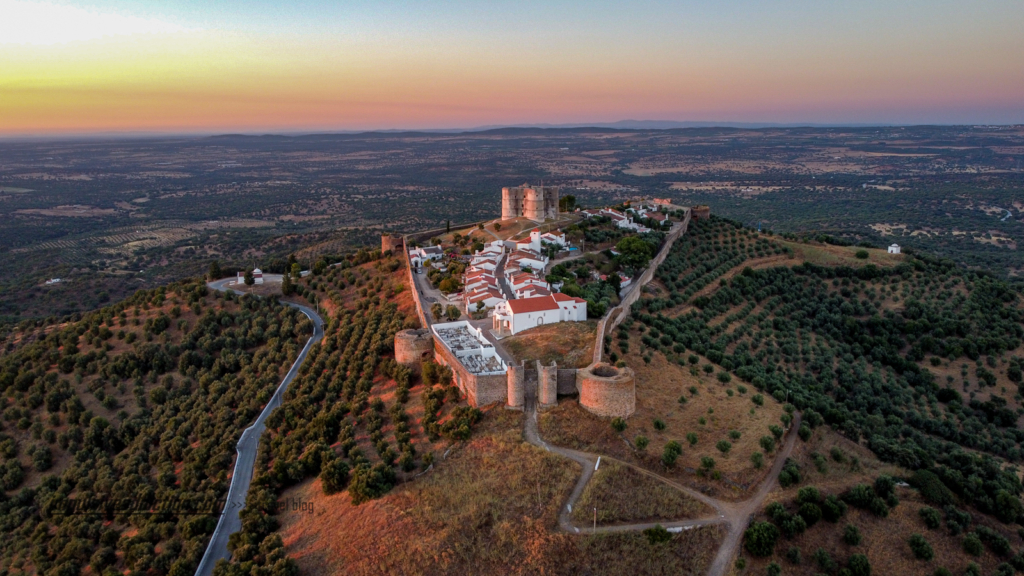
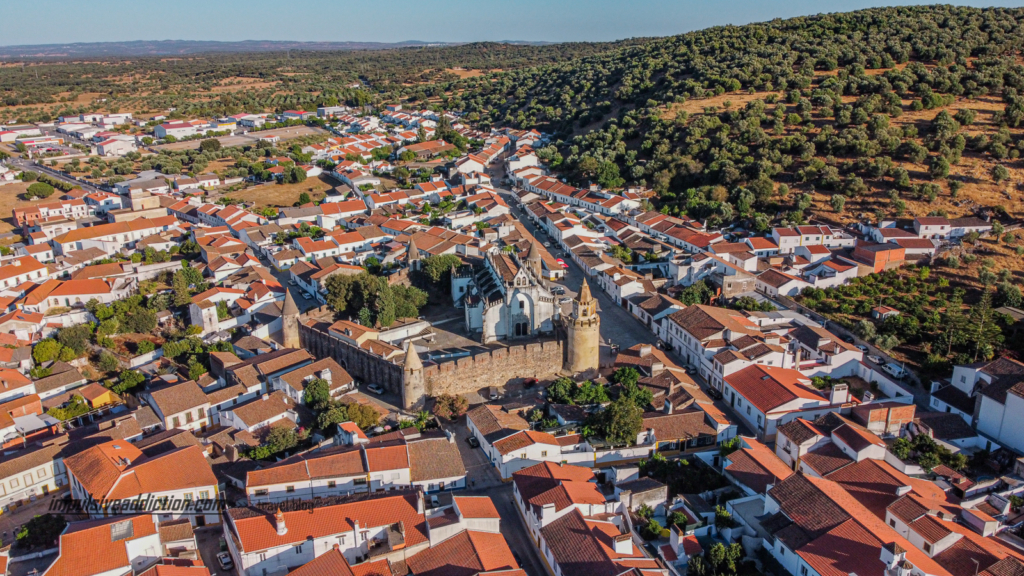
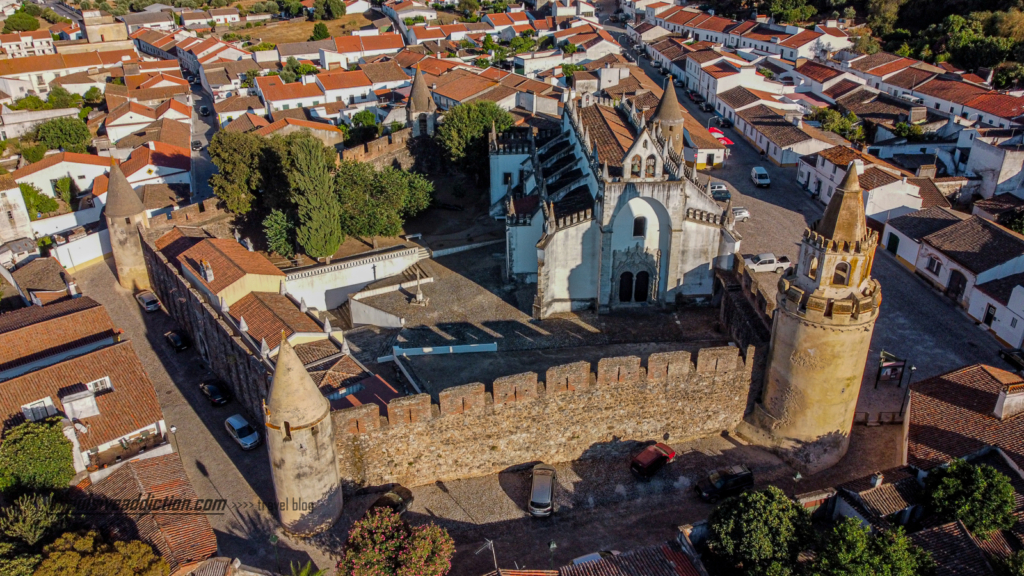
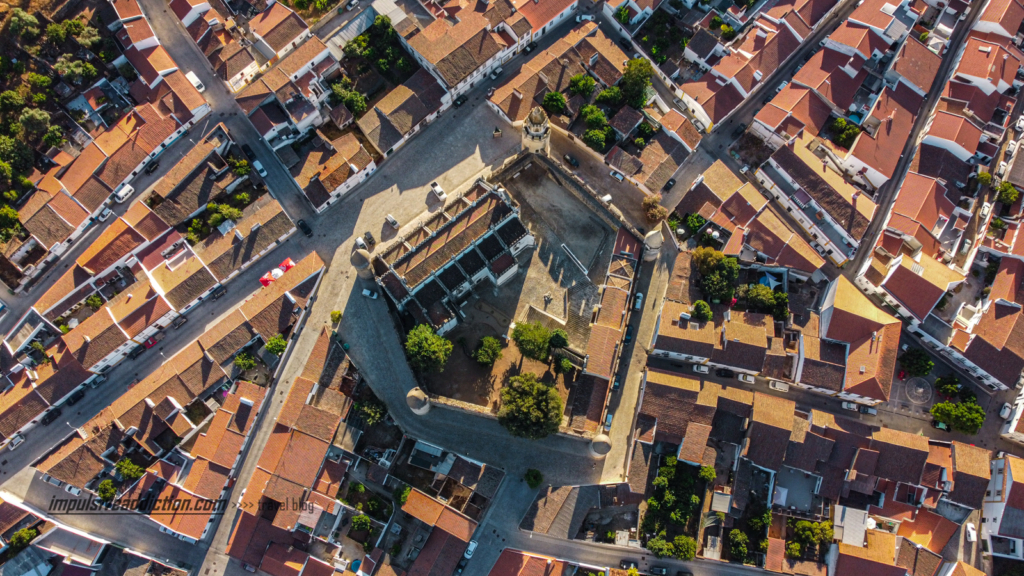
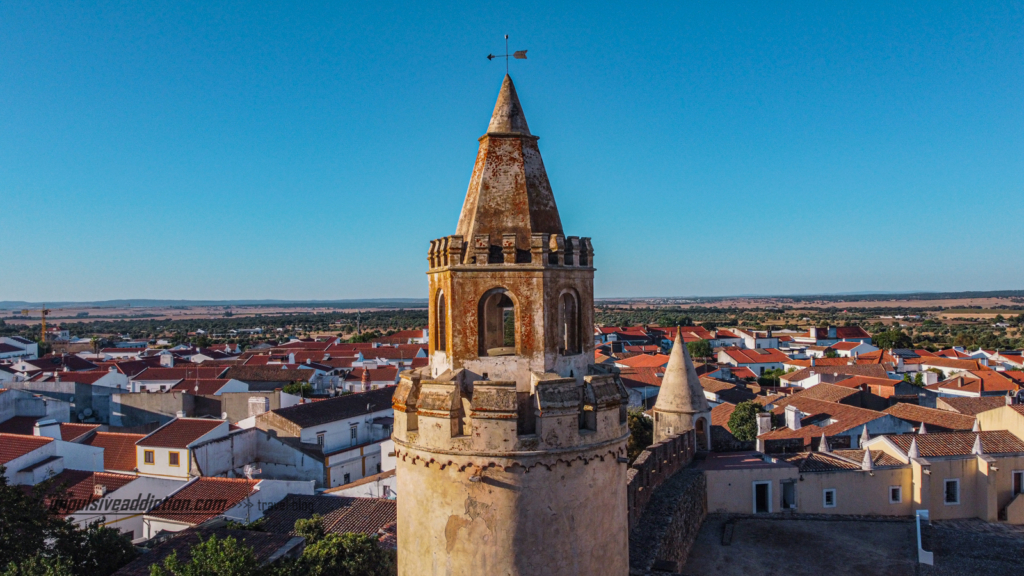
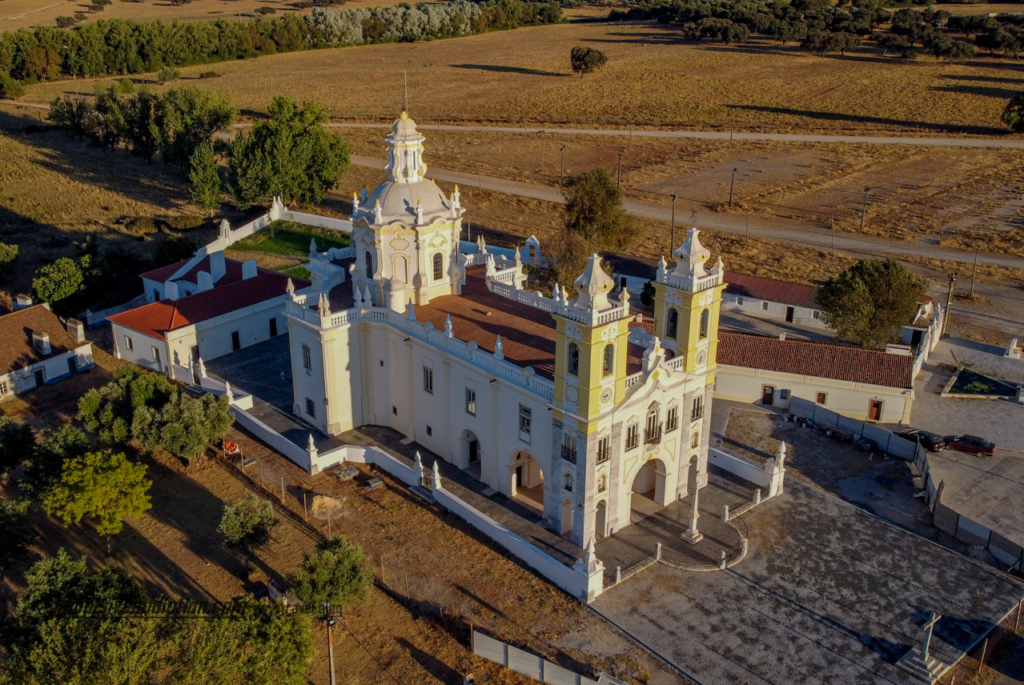
2. Visit Arraiolos
If you choose to visit Arraiolos, you cannot miss the famous hand-embroidered tapestries, a tradition that dates back centuries. In addition, the village has an architectural wealth that includes the Castle of Arraiolos, an impressive medieval construction, the Church of the Convent of Lóios, with a beautiful interior decorated with tiles, and the Pillory, a historic monument from the 17th century.
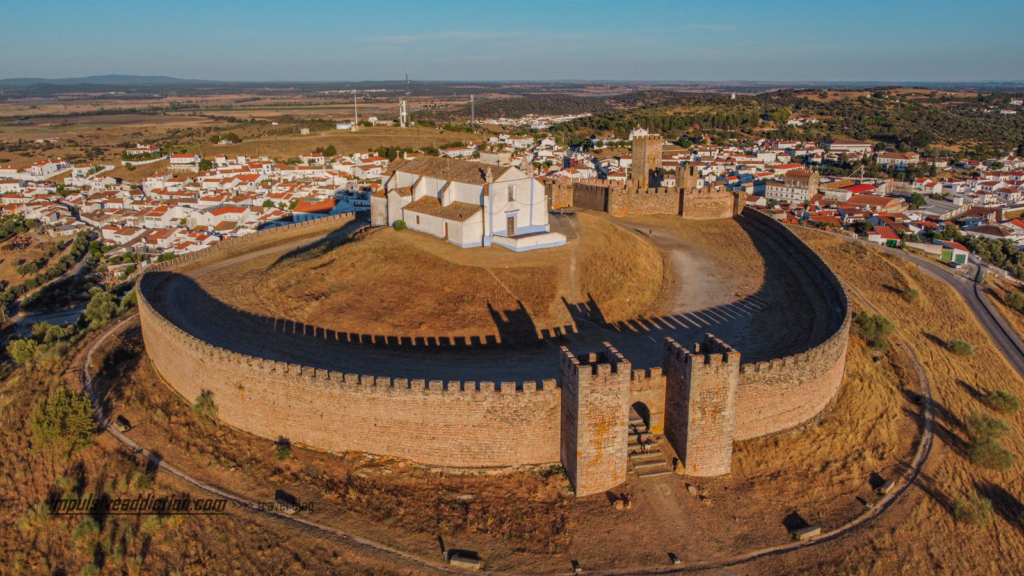
3. Visit Estremoz
In the case of Estremoz, there is the 17th-century Fortress to visit, with emphasis on the Keep Tower built with marble extracted from the region’s quarries. It is also important to discover the most significant and typical handicrafts, namely those associated with the Estremoz Dolls, classified as Intangible Cultural Heritage of Humanity by UNESCO.
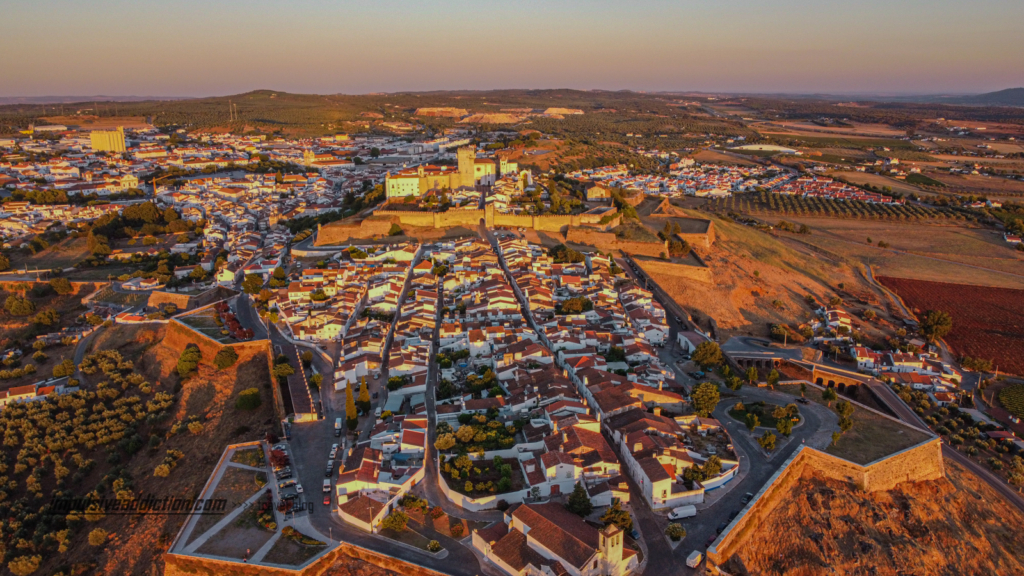

4. Visit Borba
In Borba, the marble quarries that definitely mark the landscape stand out. Visit the historic center of Borba and discover its historical and religious heritage, including its walls and churches.
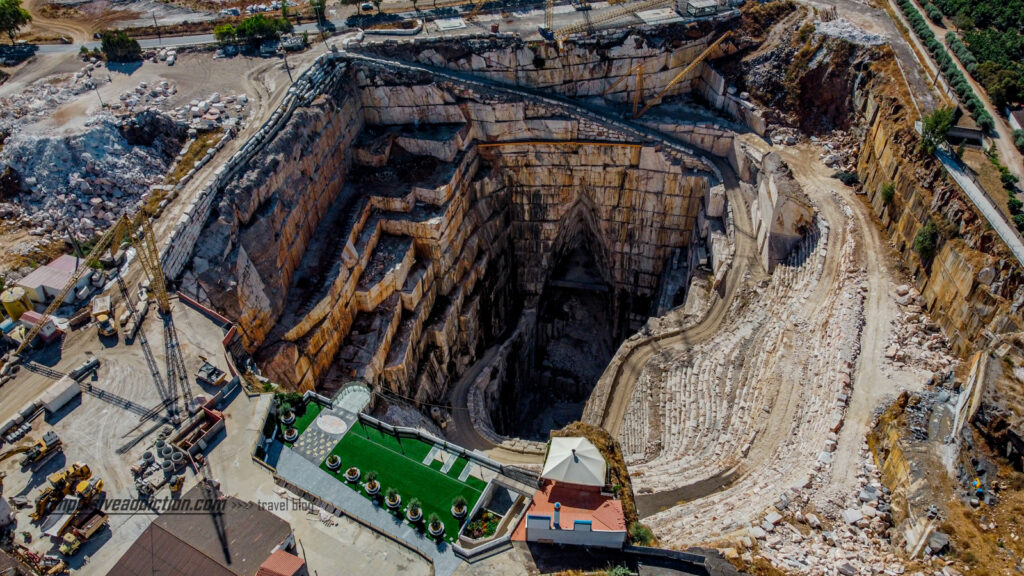
5. Visit Vila Viçosa
In Vila Viçosa, you can’t miss the impressive Ducal Palace, one of the most important palaces in Portugal, with one of the most imposing and beautiful squares in the country. Another place of interest is the Castle of Vila Viçosa, a medieval fortification that contains an excellent hunting museum inside. Don’t forget the Mother Church, as it was there that D. João IV declared Nossa Senhora da Conceição as the patron saint of Portugal.
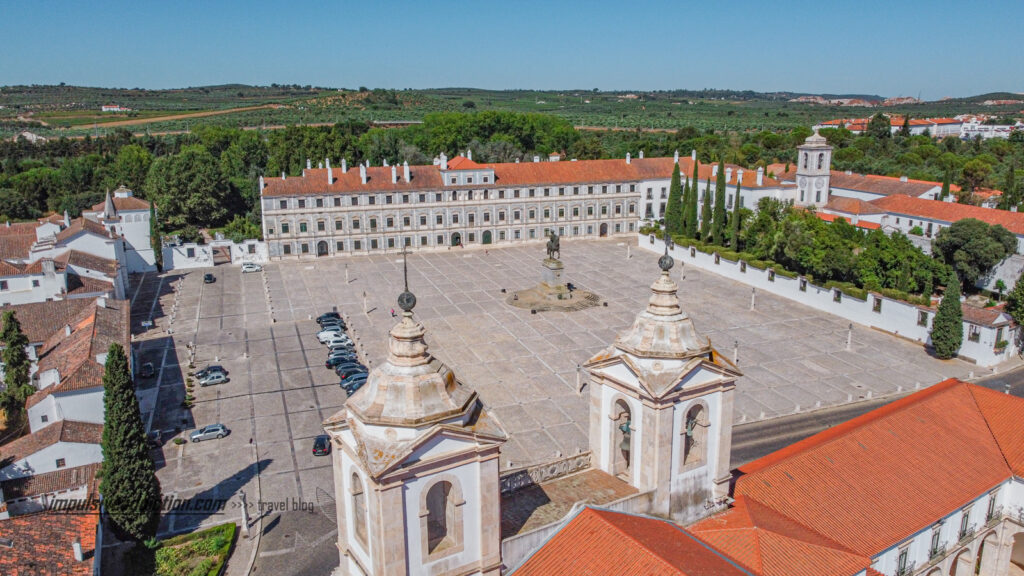
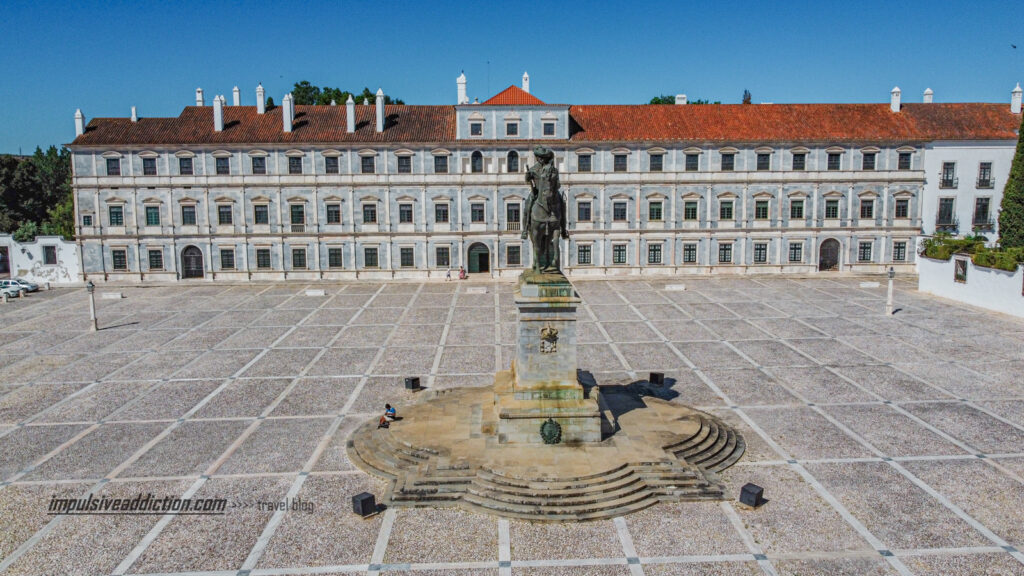
6. Go for an Itinerary in Alqueva
As for the Alqueva region, it offers you the possibility to explore the largest artificial lake in Europe. If it’s summer, there will be plenty of activities to do, from boat trips, water sports, to enjoying river beaches. There are several municipalities in Alentejo region to discover there, namely Reguengos de Monsaraz, Mourão, Moura, Portel, and Alandroal.
Monsaraz, a walled village with phenomenal panoramas of the big lake, is a highlight not to be missed. You can also visit the traditional potteries of São Pedro do Corval, and the river beaches of Monsaraz, Mourão, or even Portel. Moura, on the other hand, stands out for its flowery alleys. In Alandroal, you will be fascinated by the Fortress of Juromenha!
Possible activities to do in Alqueva: 1 - Standuppaddle class of 1 h at Alqueva lake 2 - Balloon Ride with Champagne Toast from Monsaraz
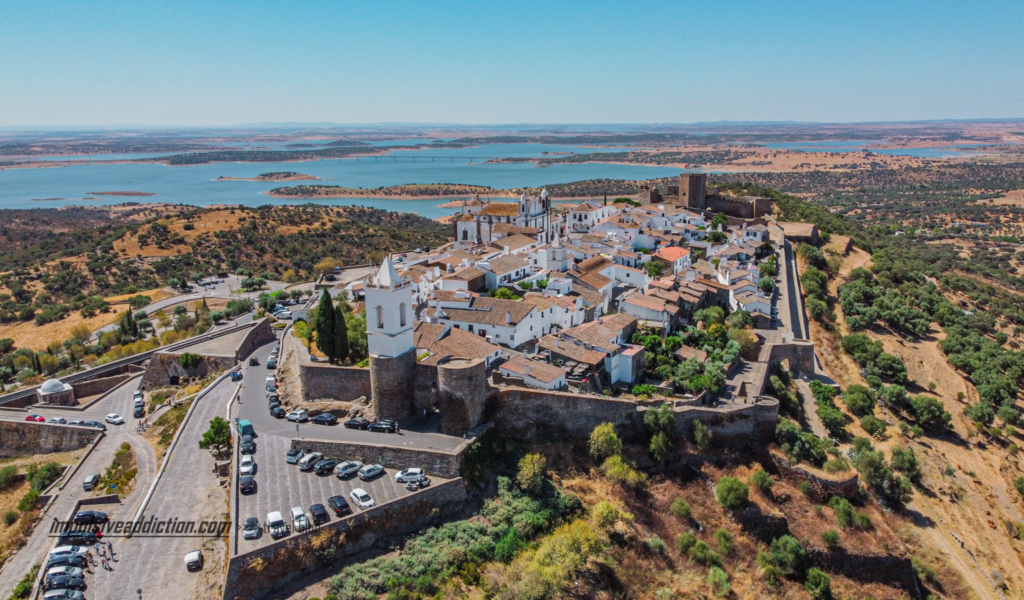
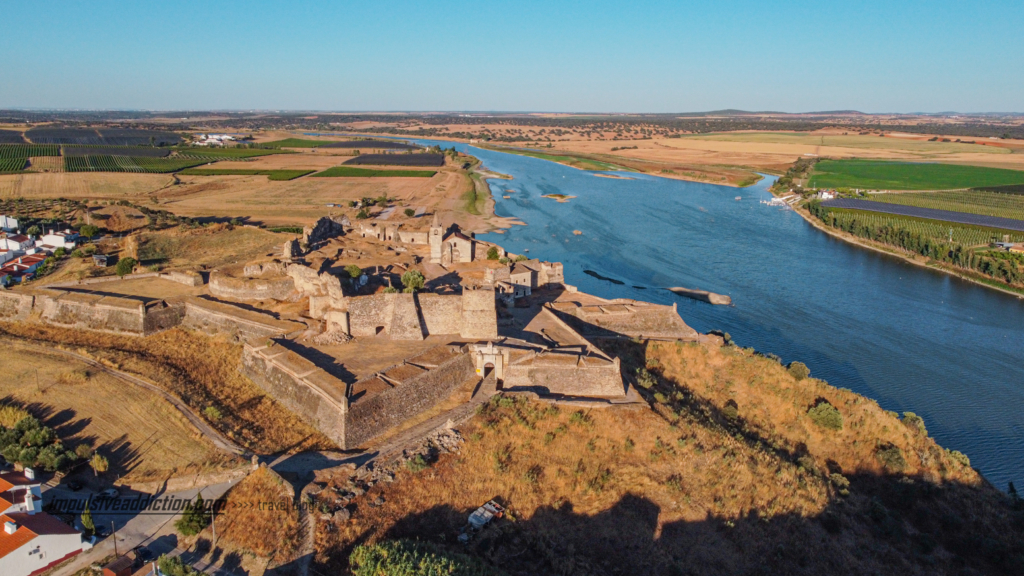
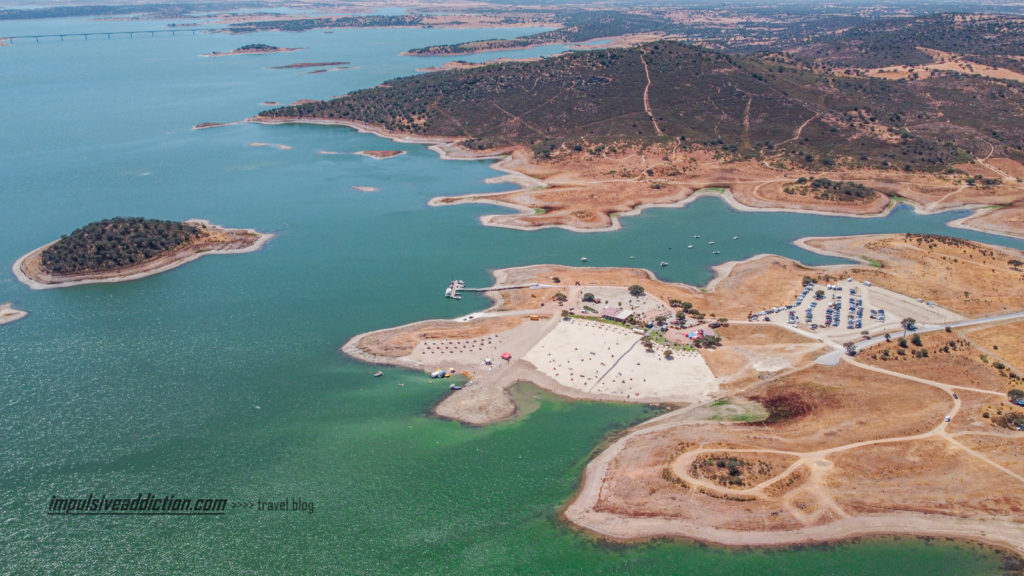
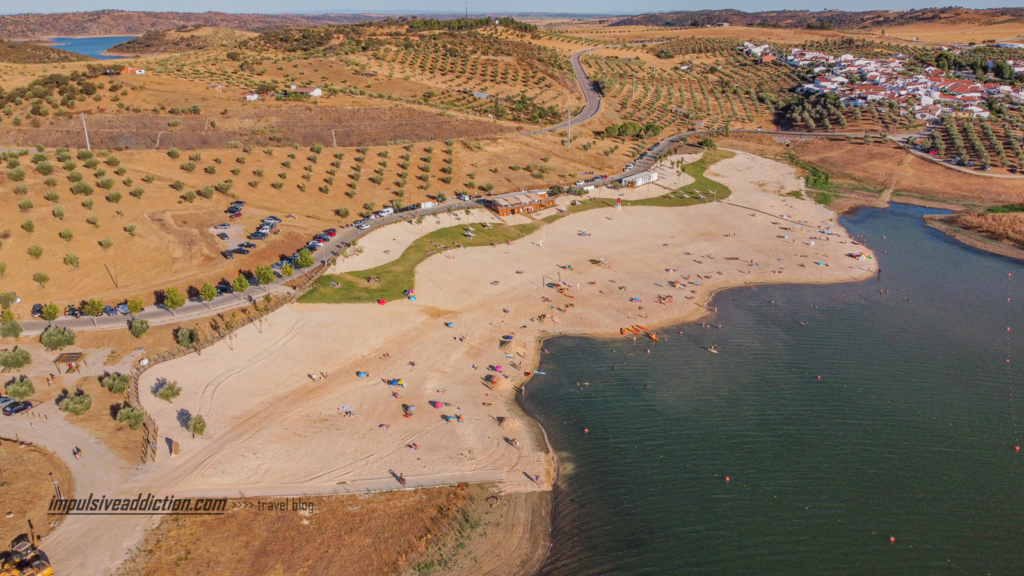
7. Go for an Itinerary in Guadiana Valley
Regarding Guadiana Valley, consider the municipalities of Mértola and Serpa. We are talking about a less touristy but no less interesting and historic part of the country.
In Mértola, you will find a very strong heritage from the time of Arab occupation of the territory, and I also recommend that you make a detour to visit Mina de São Domingos and its abandoned mining park, with some of the most surreal landscapes in Portugal. Don’t forget the fabulous Pulo do Lobo, an excellent natural monument on Guadiana River.
In Serpa, on the other hand, the highlights are the walls, the castle, and the aqueduct. It is a beautiful destination, but I am sure that Mértola will fascinate you more! 😉
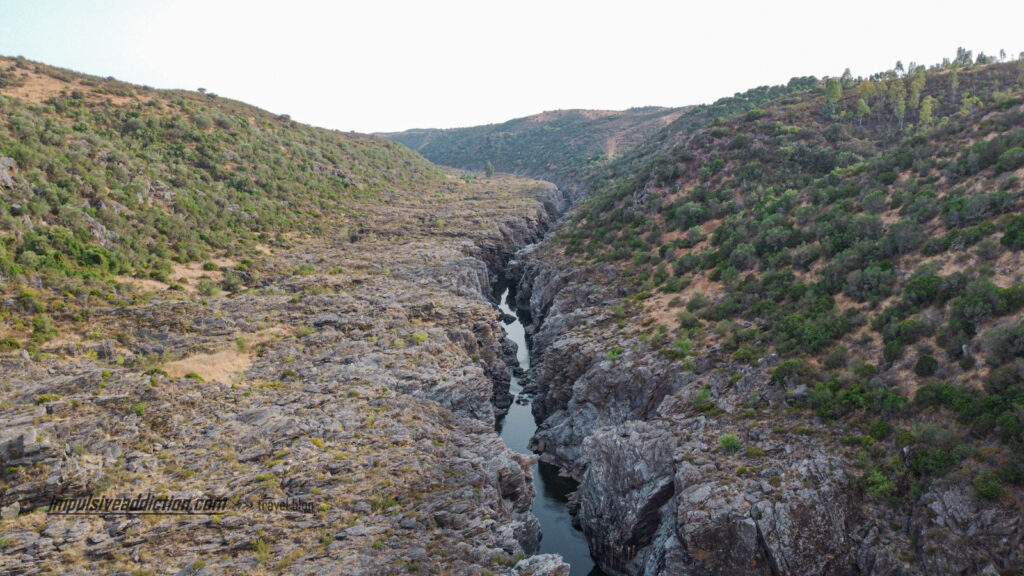
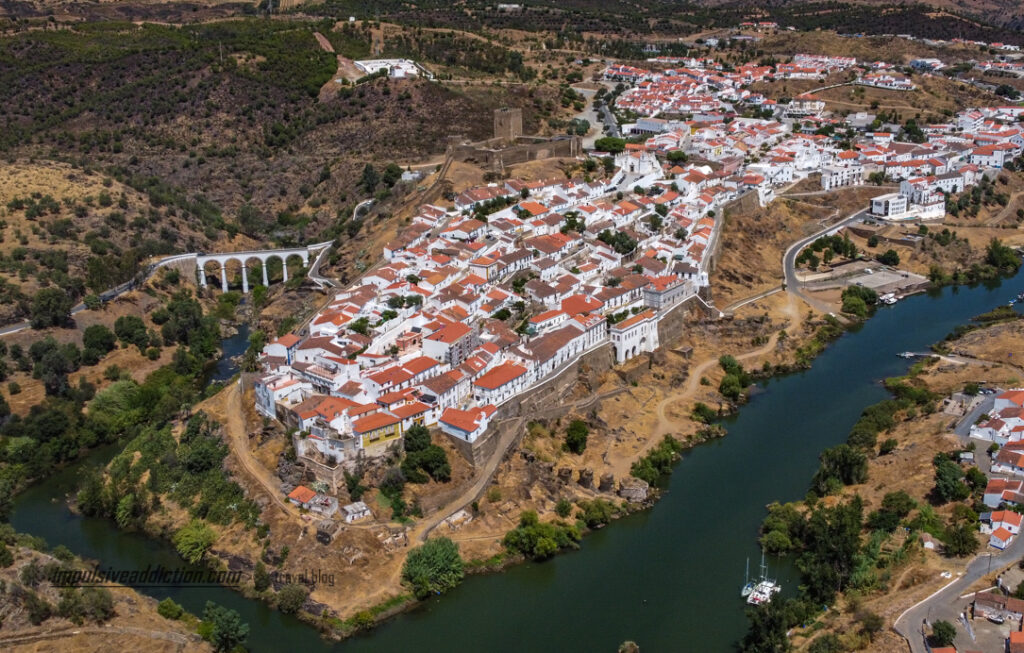
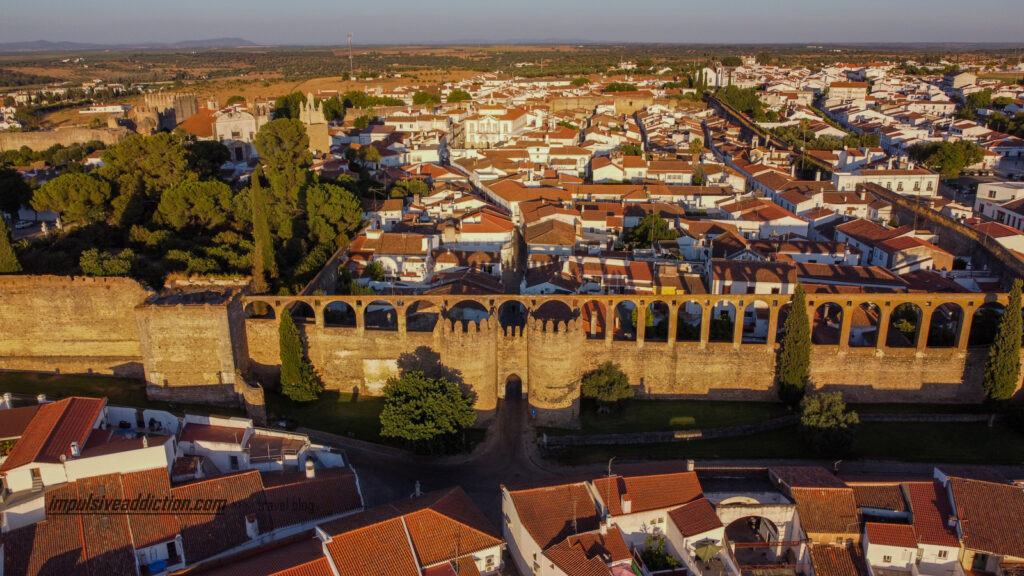
8. Visit Redondo
Also consider the possibility of visiting Redondo, both its historic center and Serra d’Ossa itself, which now has excellent wooden walkways for a stroll in the mountains. You can also choose to go for a Cork Safari in a Classic Land Rover (very nice experience!).
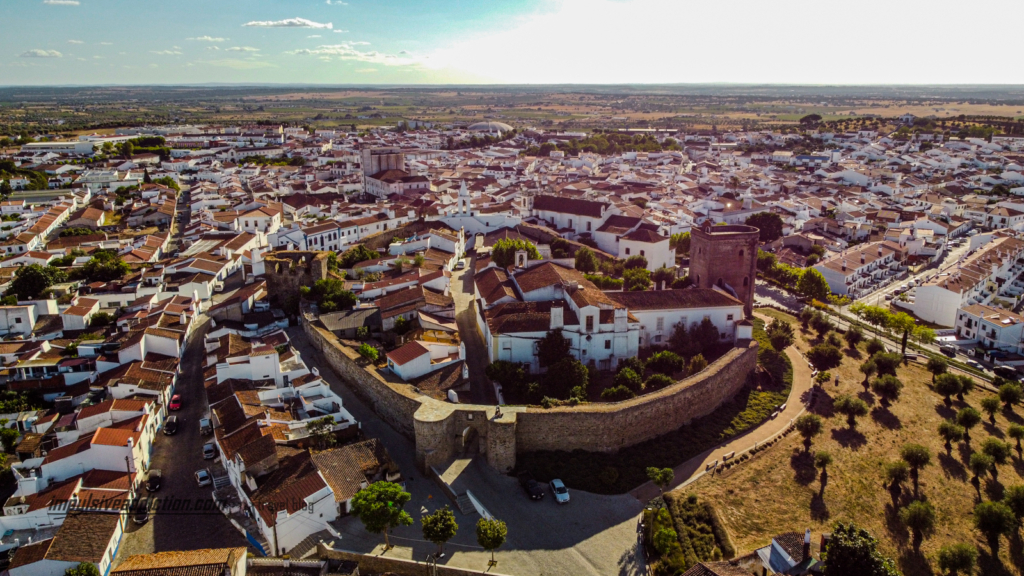
9. Visit Elvas and Campo Maior
More important than all the previous places, it will be to visit Elvas, which, for me, is an authentic wonder in Portugal, with the most incredible fortresses in the country. Be sure to visit the Fort of Graça, the Military Museum, and the historic center of Elvas. In Campo Maior, on the other hand, I highlight the bone chapel, similar to the one in Évora. 😉 I prefer this one, actually, and I’m sure you’ll love discovering it too!
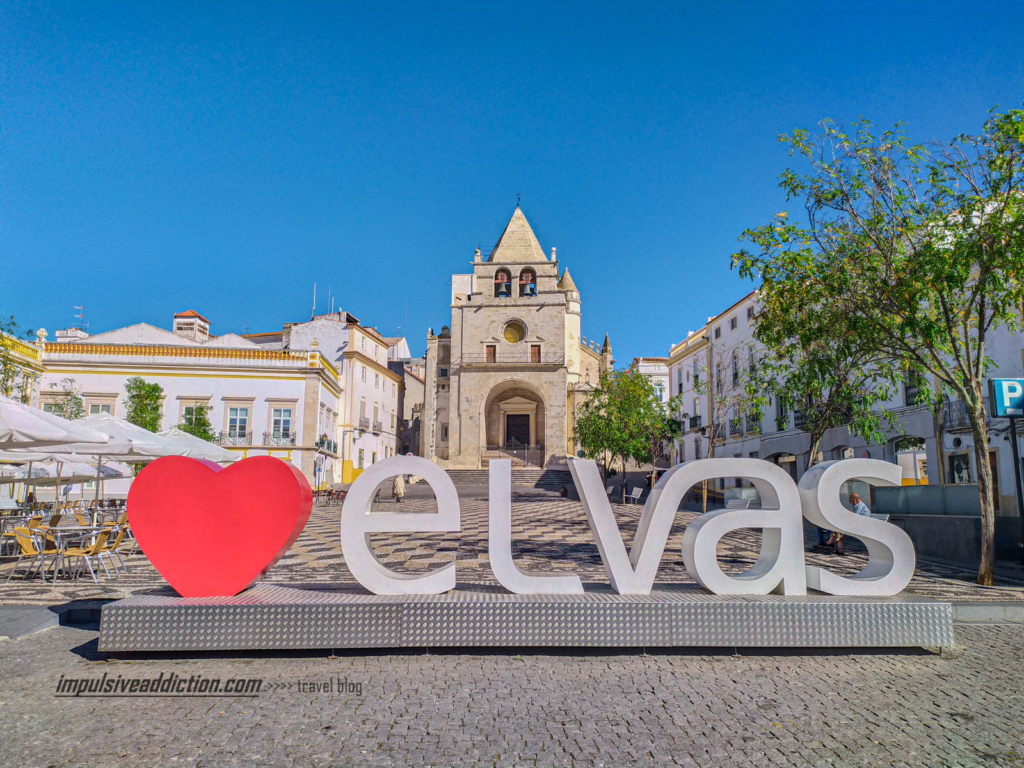
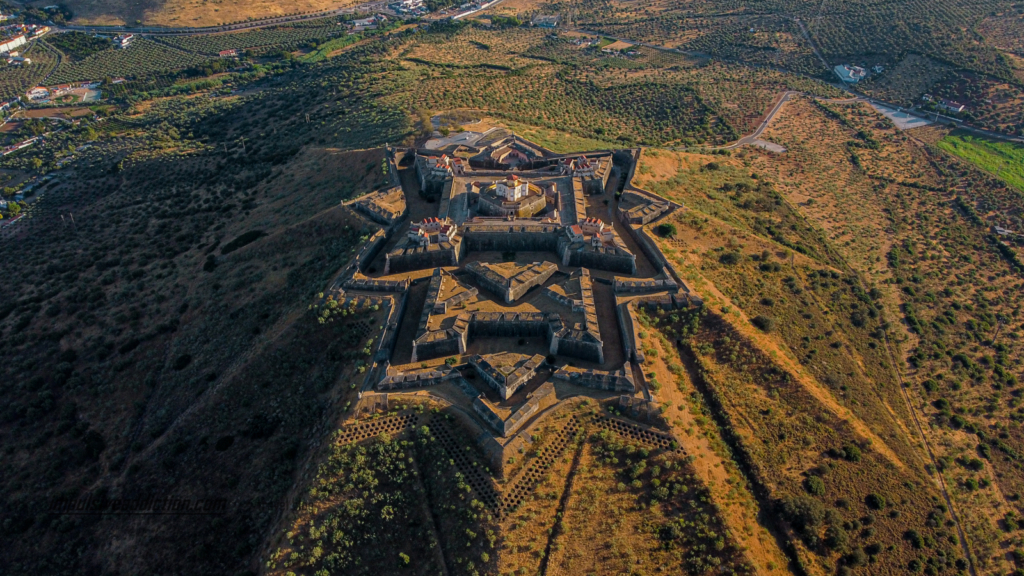
10. Visit other Regions of Alentejo
Lastly, I’ll give you some tips to visit South Alentejo, the Coast of Alentejano, and High Alentejo, all regions that you can visit on day trips from Évora, or even on a longer Alentejo itinerary.
- Firstly, you’ll have to visit Beja, the capital of South Alentejo. It has an excellent keep tower and historic center, as well as a Roman villa and a river beach.
- I’ve already mentioned Mértola and Serpa, both of which are part of South Alentejo.
- Stop in Aljustrel and climb to the viewpoint of Maralhas Windmill and to the top of the hill where the Church of Nossa Senhora do Castelo is located.
- Go explore the coast of Odemira and Sines, including beaches such as Zambujeira do Mar, Vila Nova de Milfontes, and Porto Covo. There are many other magnificent beaches on that coast, with hidden gems to discover, and always with beautiful cliffs and scenery.
- In High Alentejo, Marvão and Castelo de Vide are obviously worth a visit, both located in the Natural Park of Serra de São Mamede and in Portalegre district.
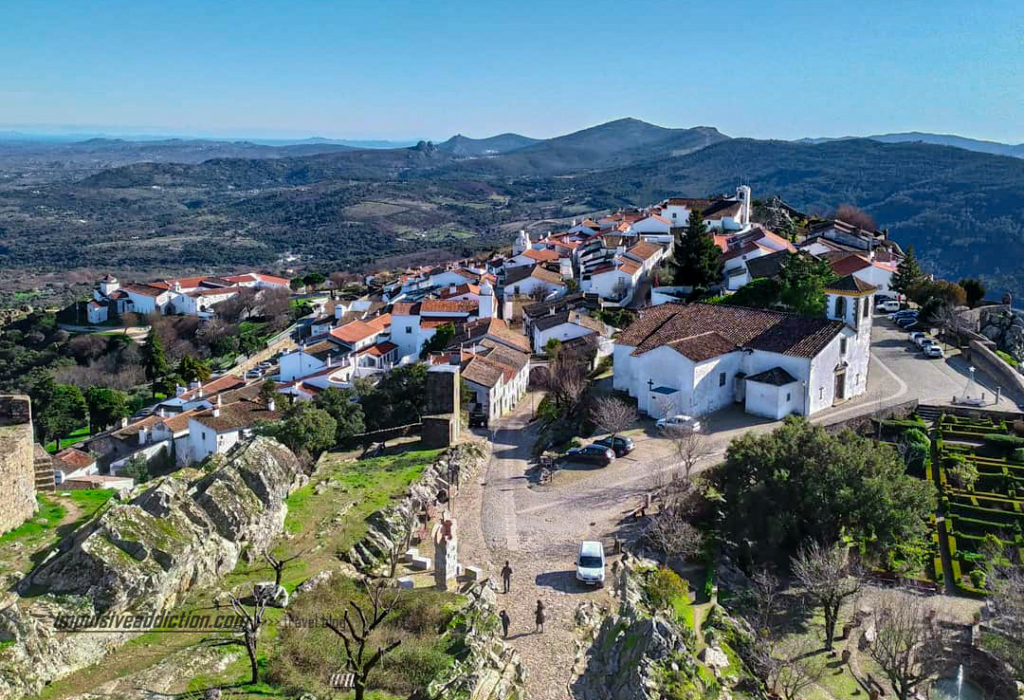
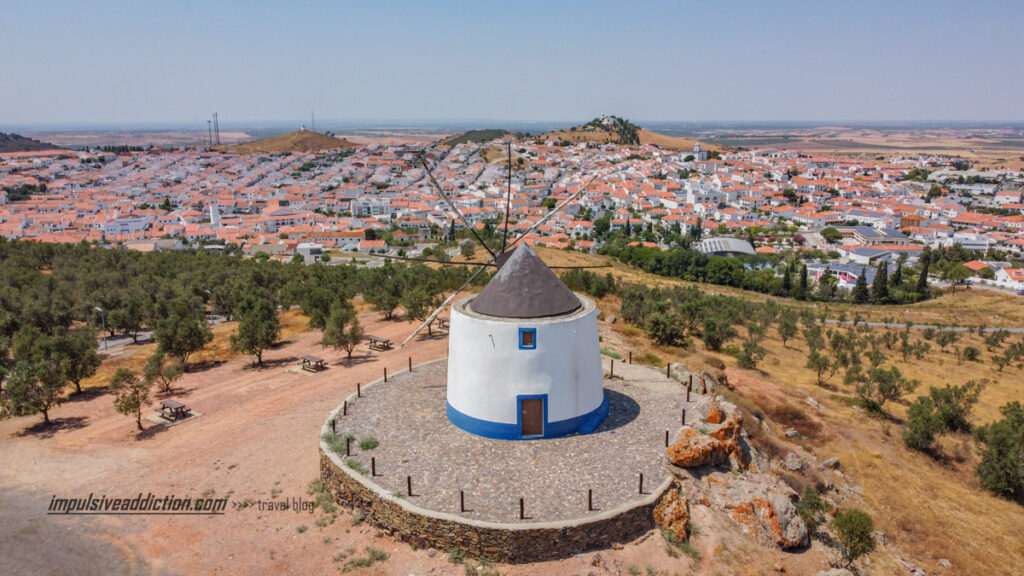
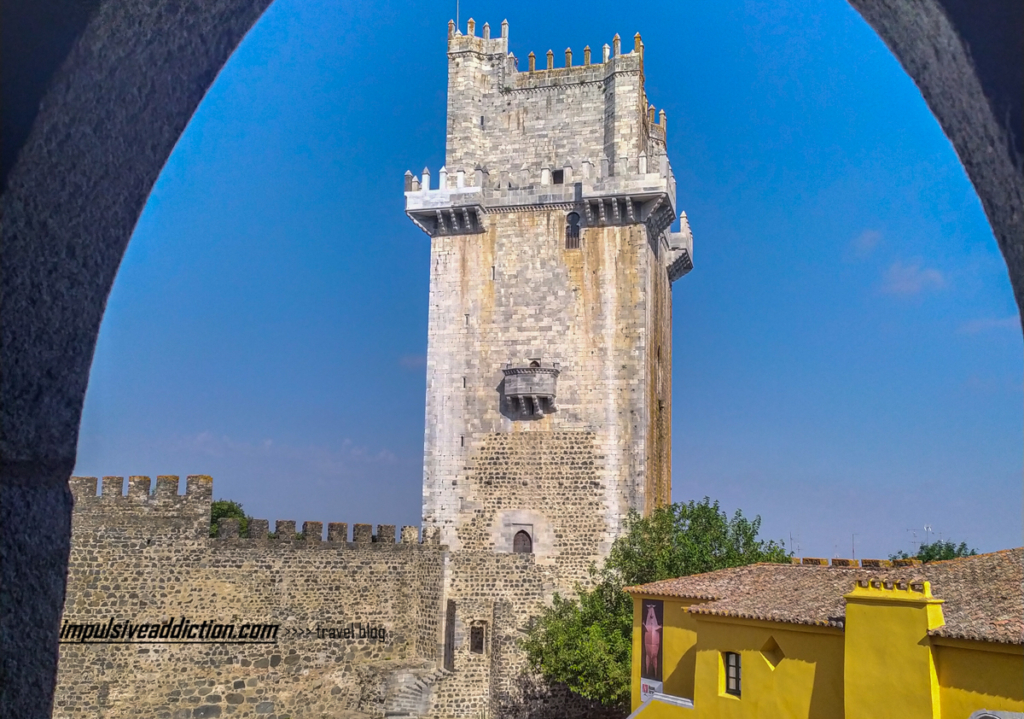
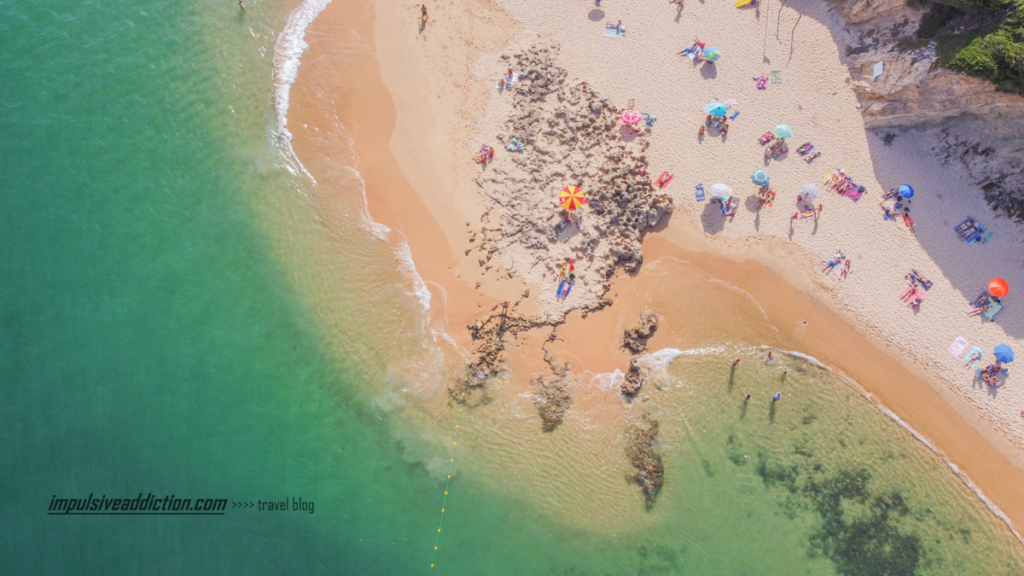
Other Itineraries and Travel Guides in Portugal
Évora and its surroundings offer an abundance of historical, cultural, and natural attractions that are definitely worth exploring. From the city’s rich heritage to the breathtaking landscapes of Alqueva and Serra d’Ossa, there is something for every type of traveler. Whether you’re fascinated by ancient history, architecture, or simply seeking to bask in the stunning scenery, a visit to Évora and its neighboring regions promises to leave you with unforgettable memories of Alentejo.
There are really many things to do in Évora and surroundings. I hope this post was useful on your travel planning, why don’t you give me your feedback in the comment section below? If you need help with more content about Alentejo, reach me and maybe I will proceed translating more of my content already in portuguese to English.
- N2 Portugal Road Trip Itinerary
- Madeira Itinerary and Travel Guide
- São Miguel Itinerary and Travel Guide (Azores)
- Terceira Itinerary and Travel Guide (Azores)
- Pico Itinerary in Azores
- Faial Itinerary in Azores
- Minho | Northern Portugal Itinerary
- Porto Itinerary and Travel Guide
- Things to do In Braga (Minho)
- Things to do in Guimarães (Minho)
- Things to do in Viana do Castelo (Minho)
- Peneda Gerês National Park Itinerary
- Douro Valley Itinerary
- Trás-os-Montes Itinerary
- Things to do in Bragança
- Montesinho Natural Park Itinerary
- Douro International Natural Park Itinerary
- Things to do in Aveiro
- Things to do in Coimbra
- Things to do in Leiria
- Things to do in Fatima
- Things to do in Nazaré
- Things to do in Peniche
- Things to do in Beja (Alentejo)
- Algarve Road Trip Itinerary
- Things to do in Lagos (Algarve)
- Things to do in Portimão (Algarve)
- Things to do in Faro (Algarve)
- Things to do in Tavira (Algarve)
